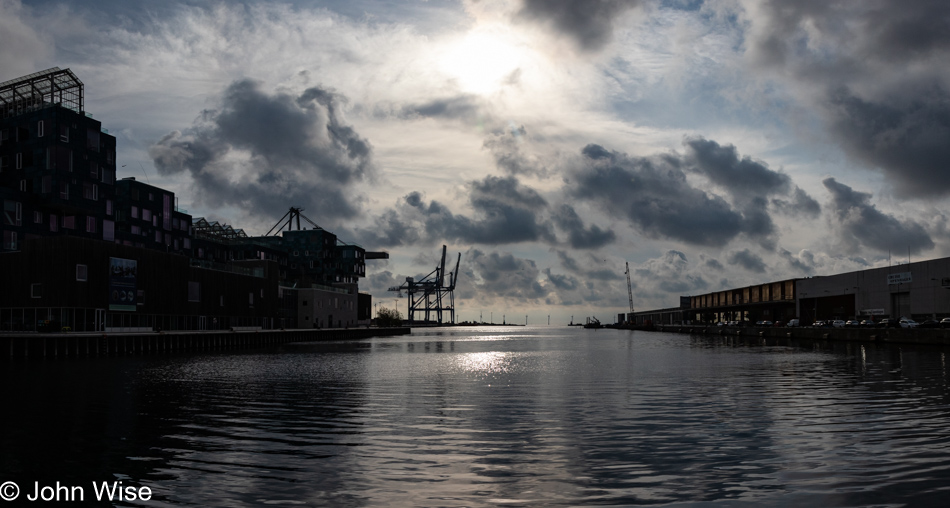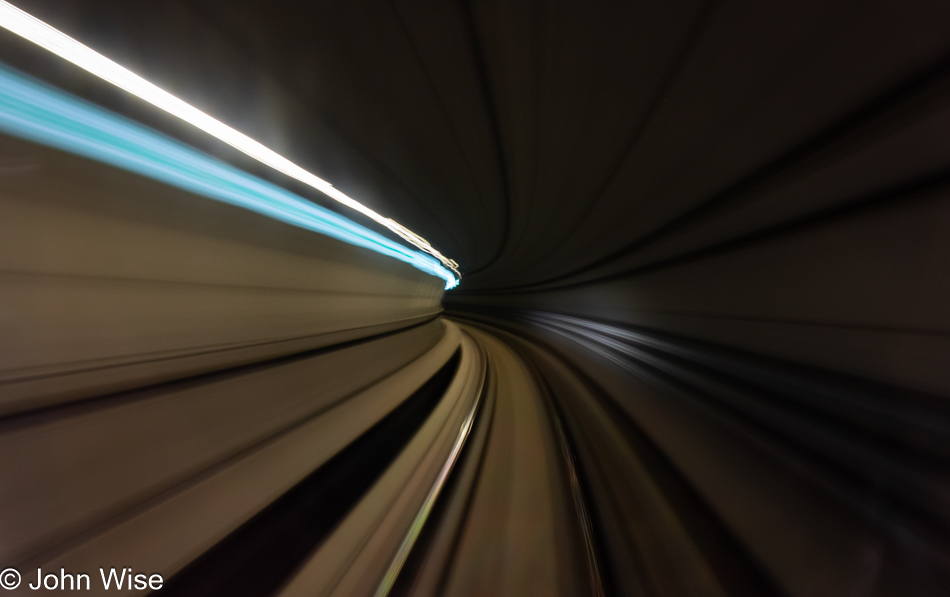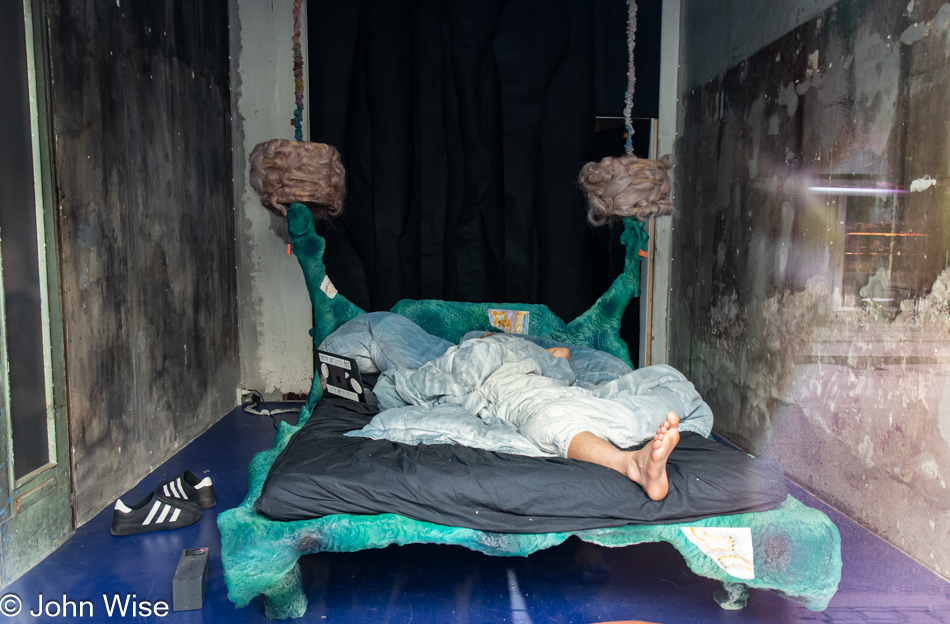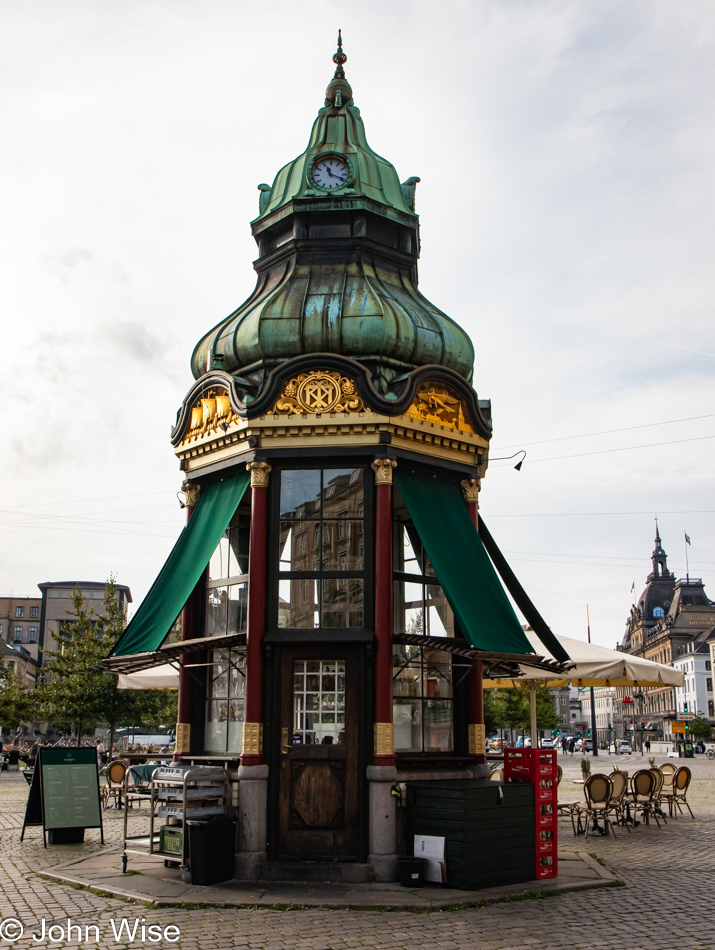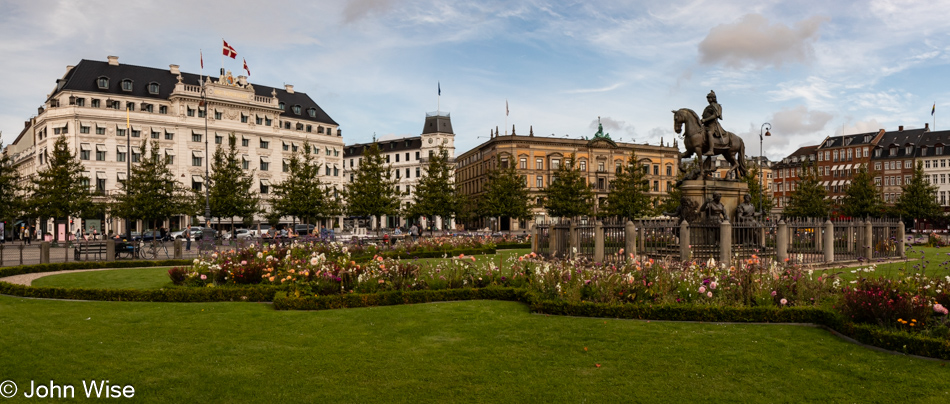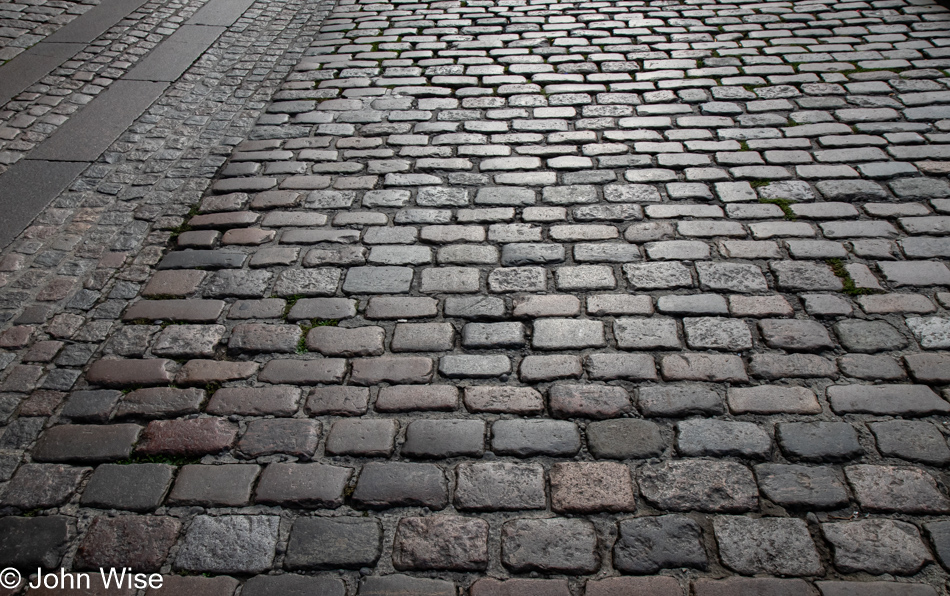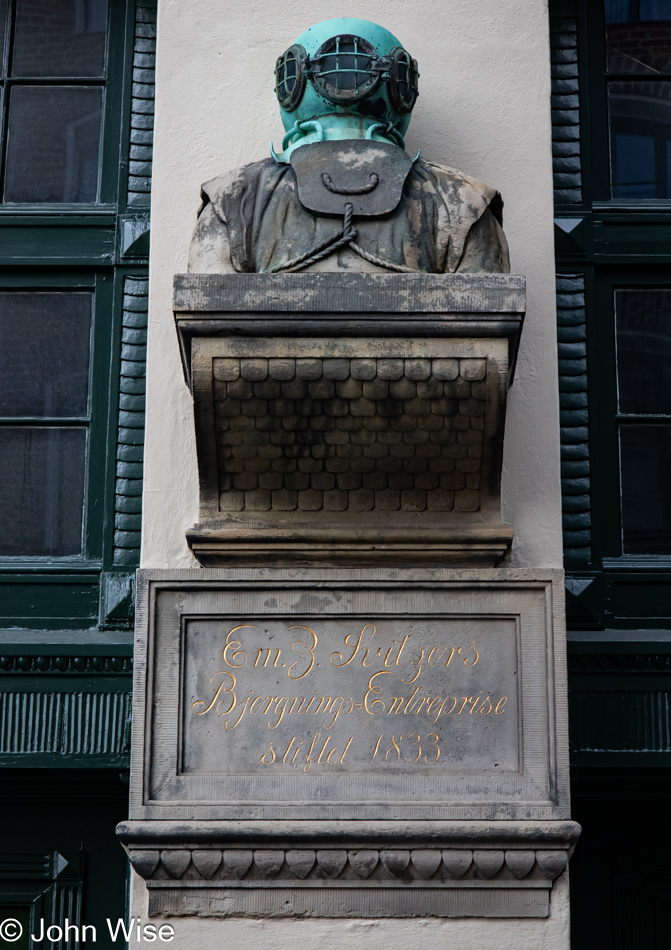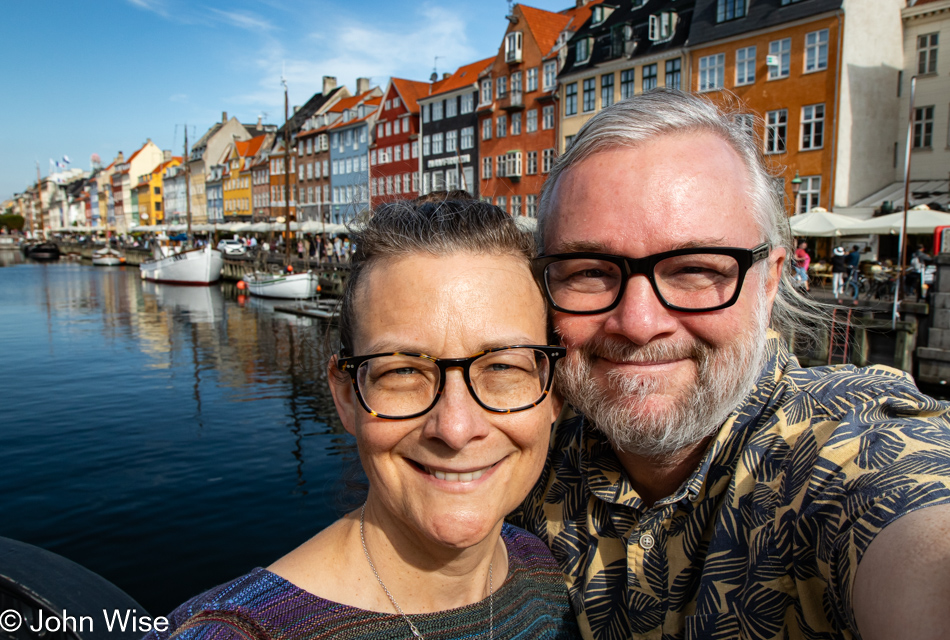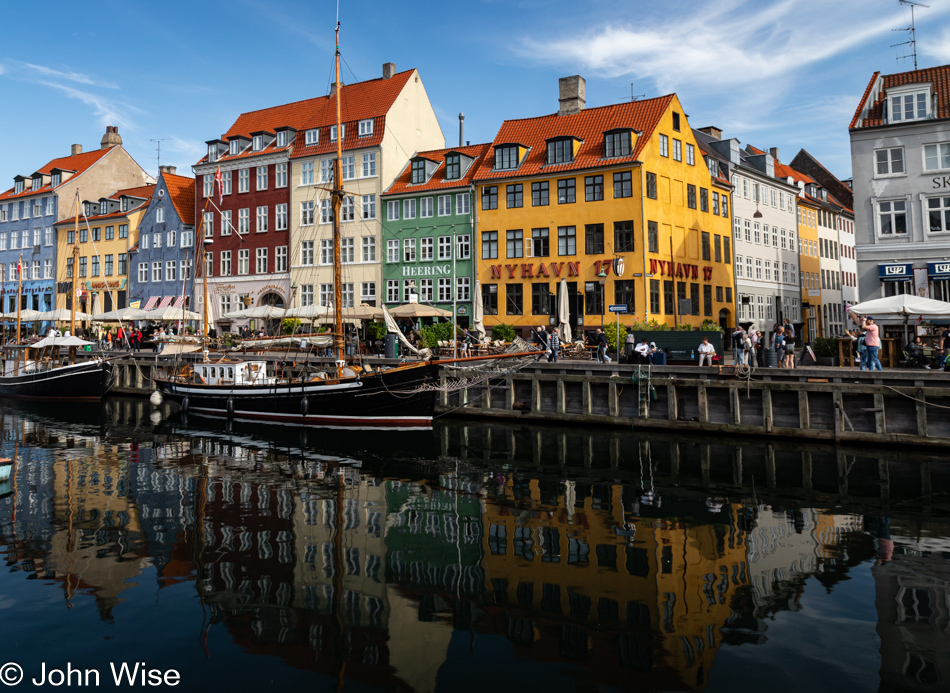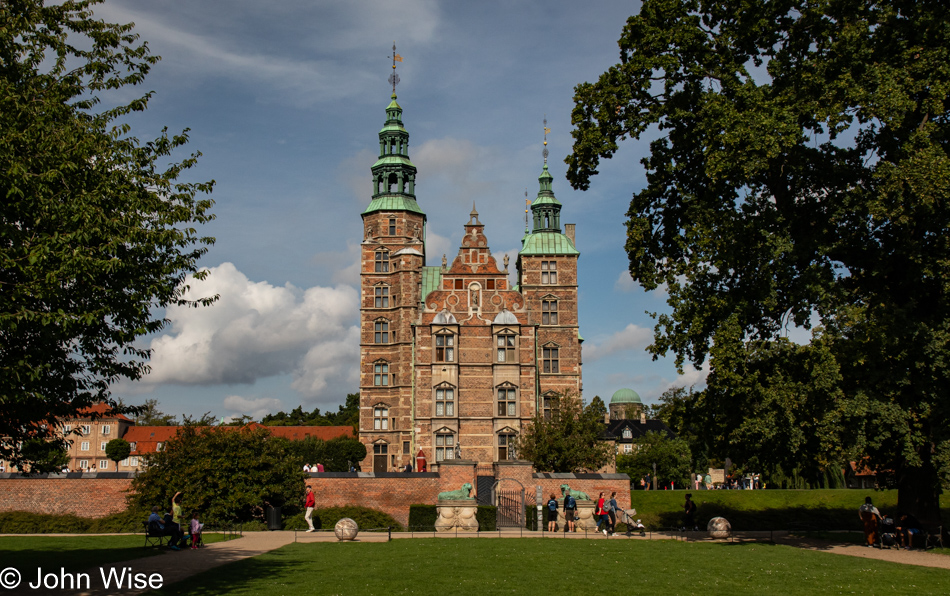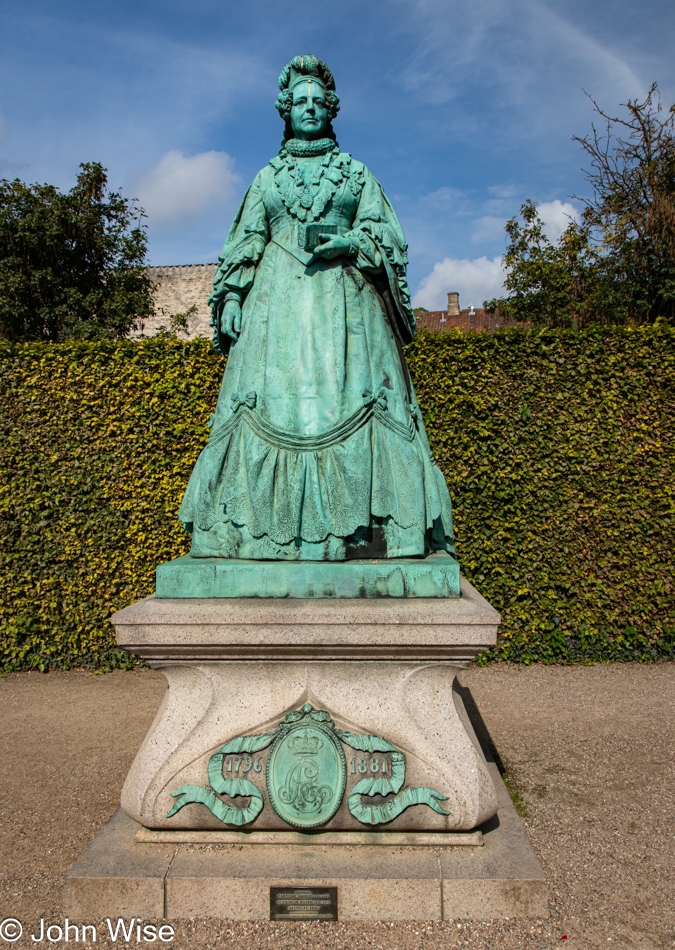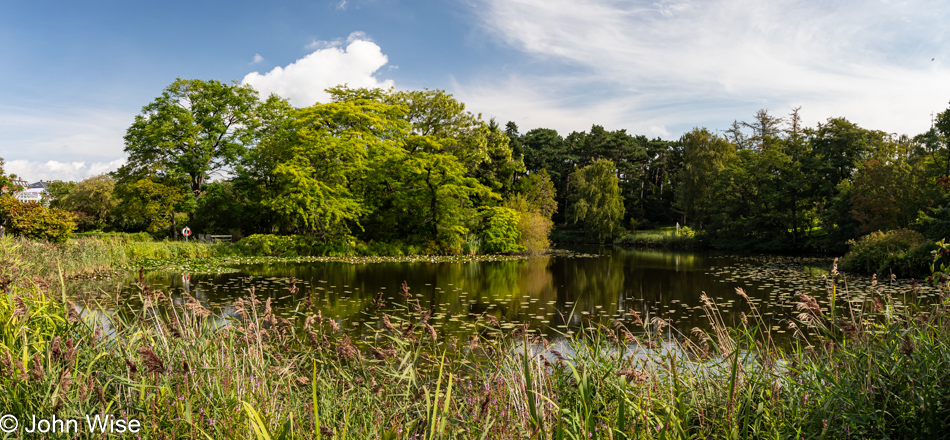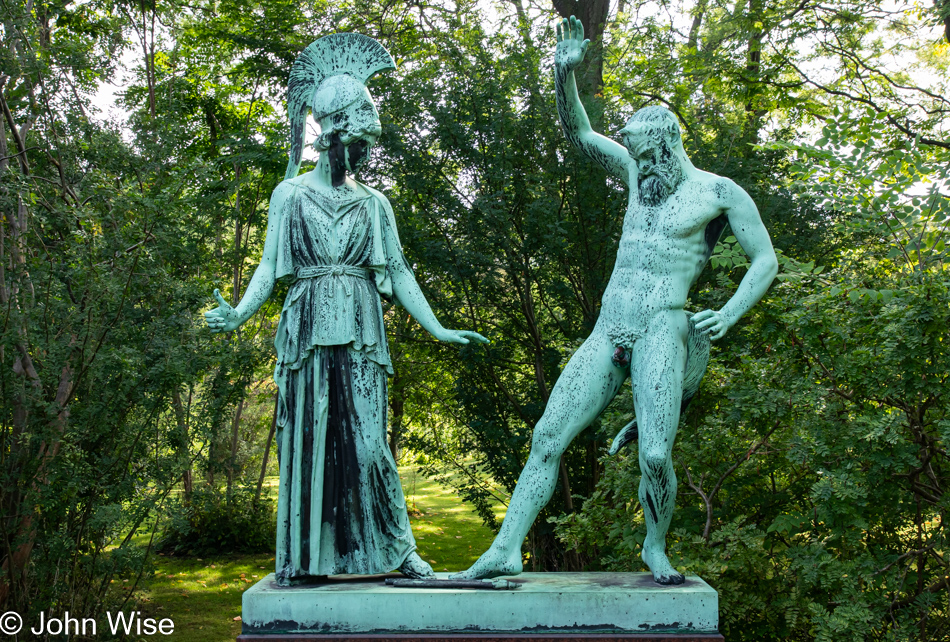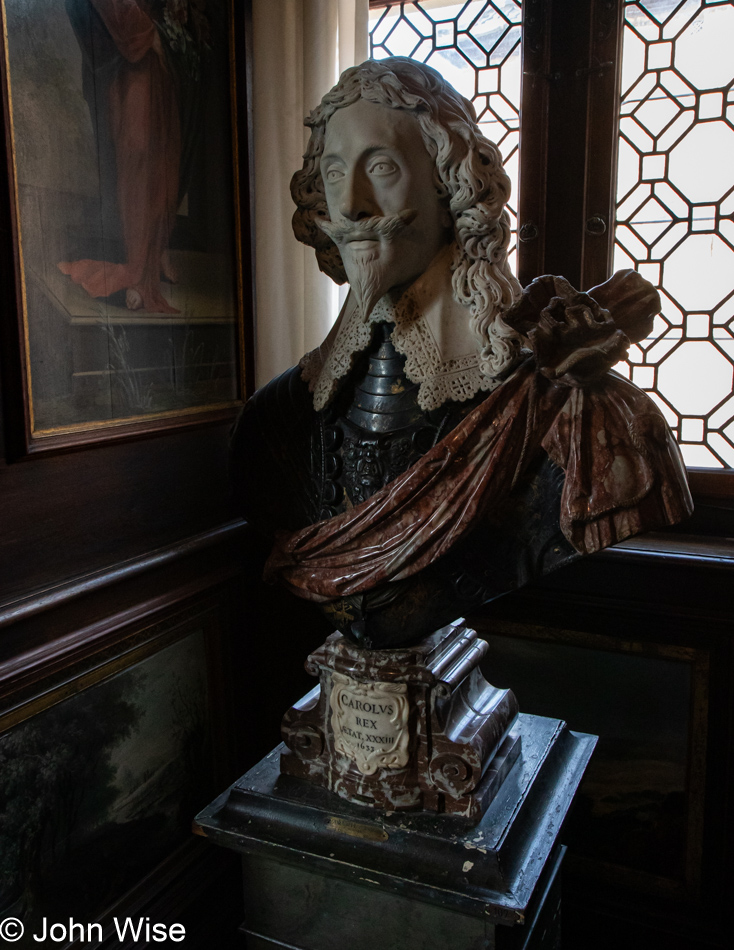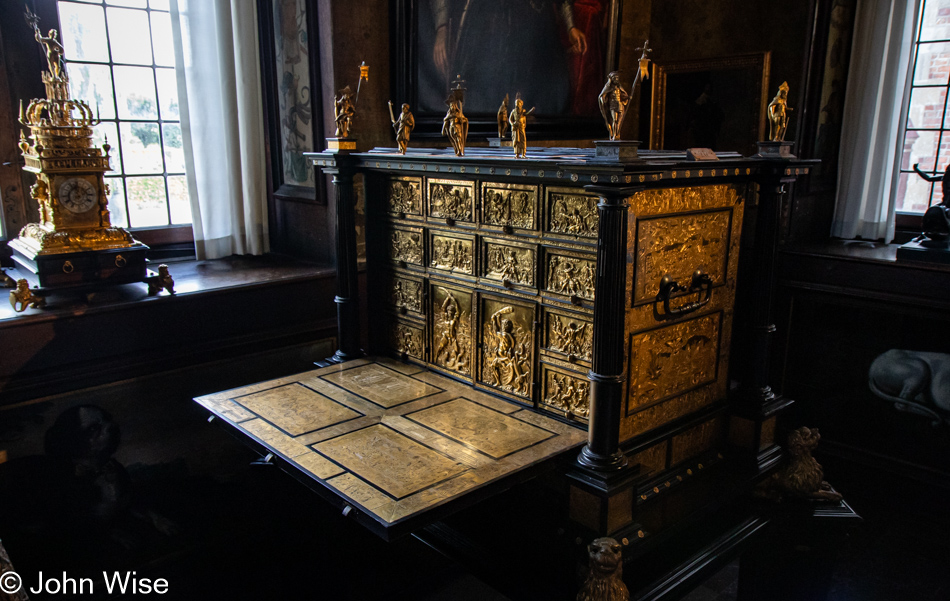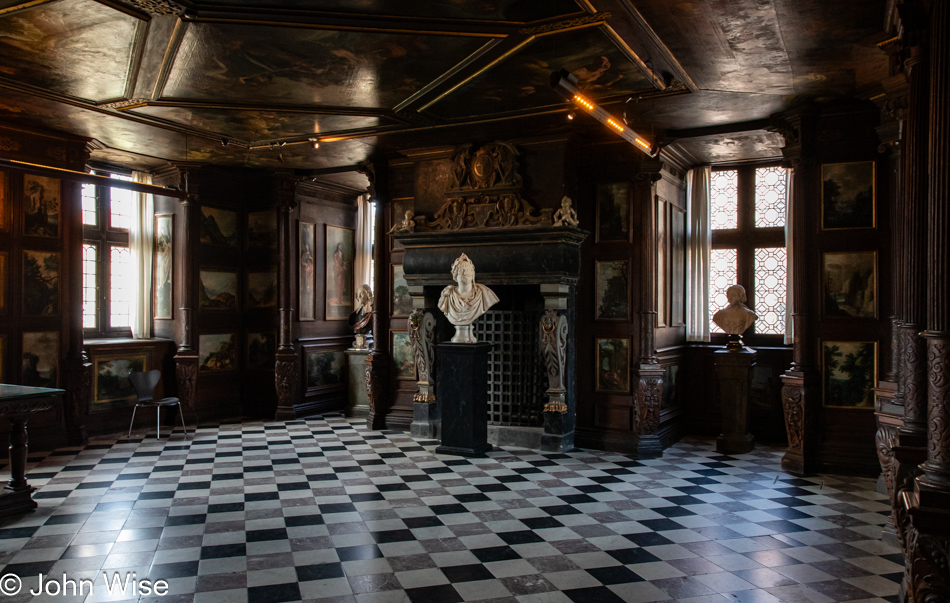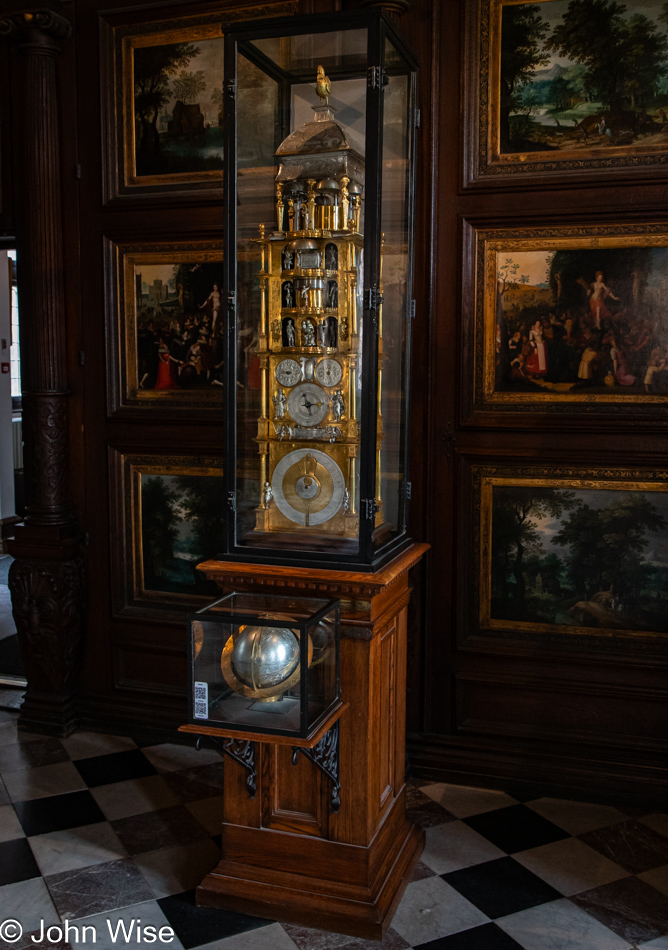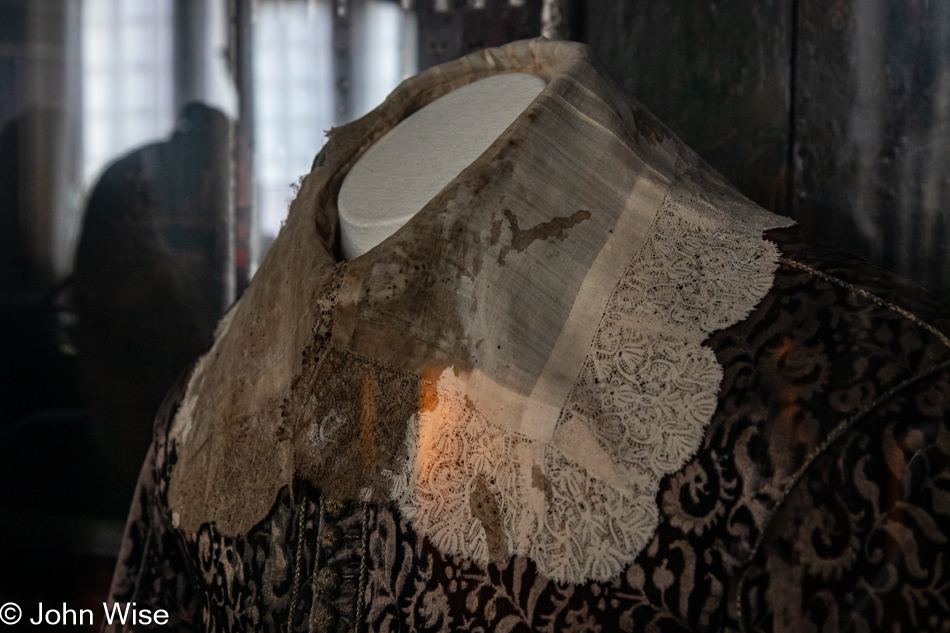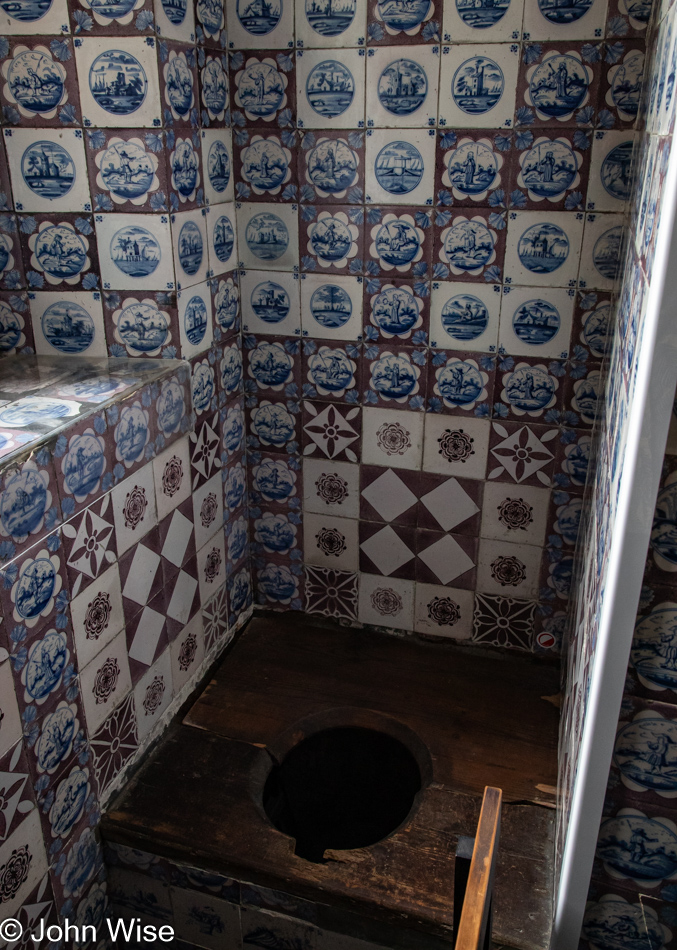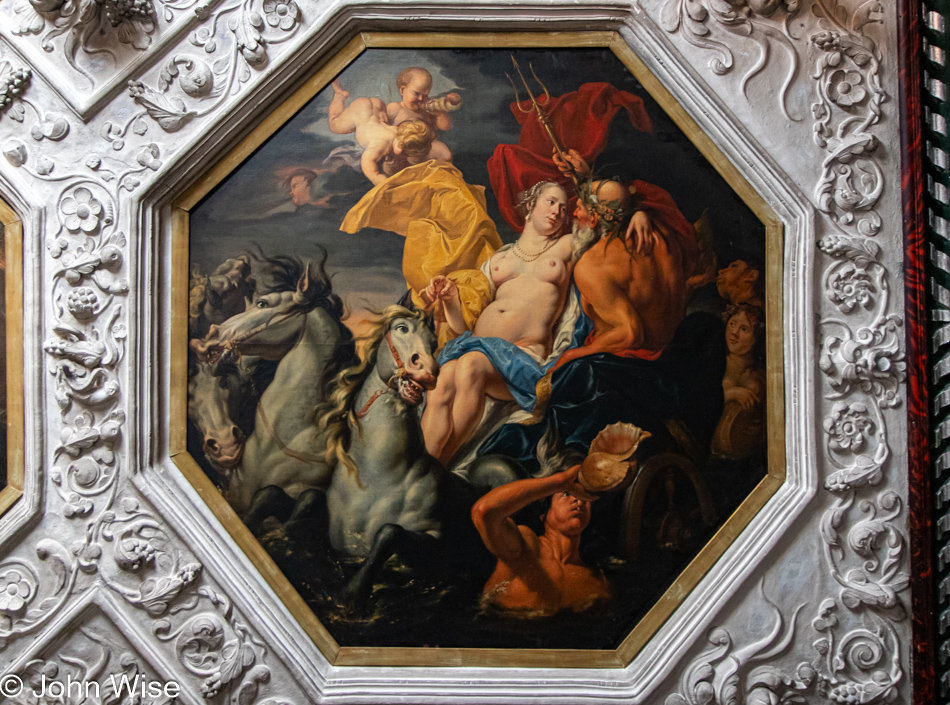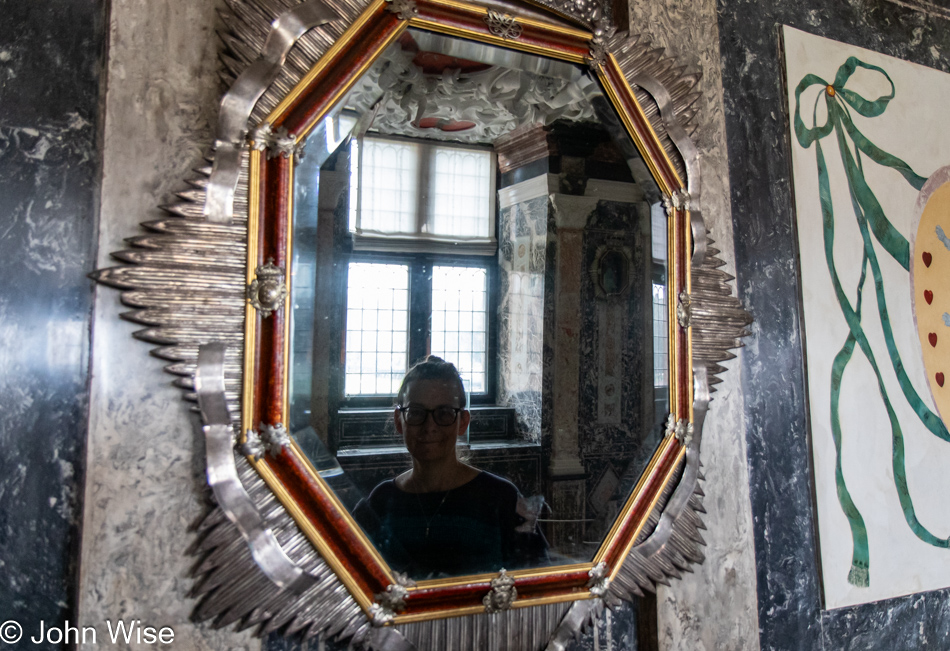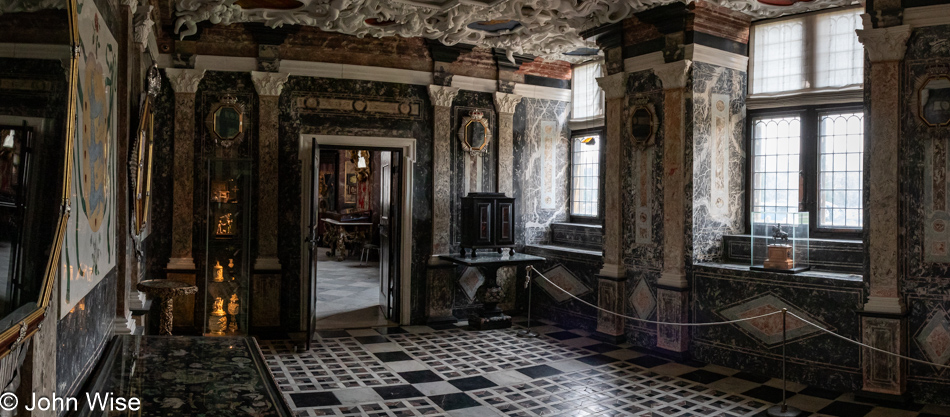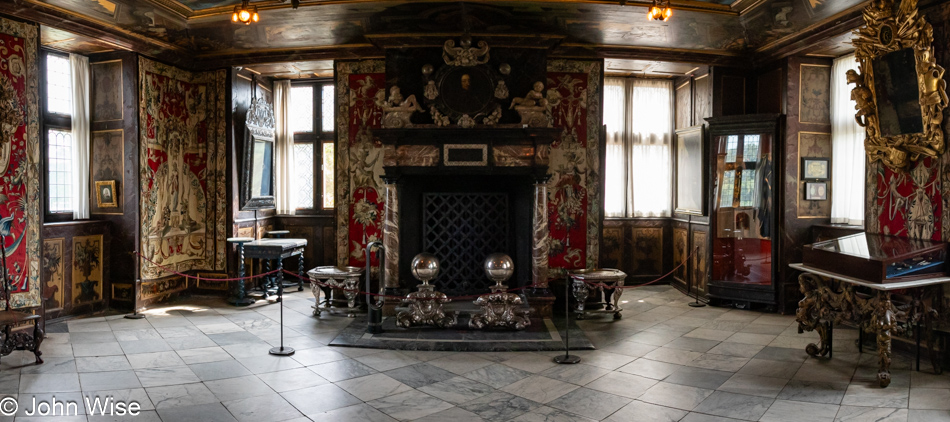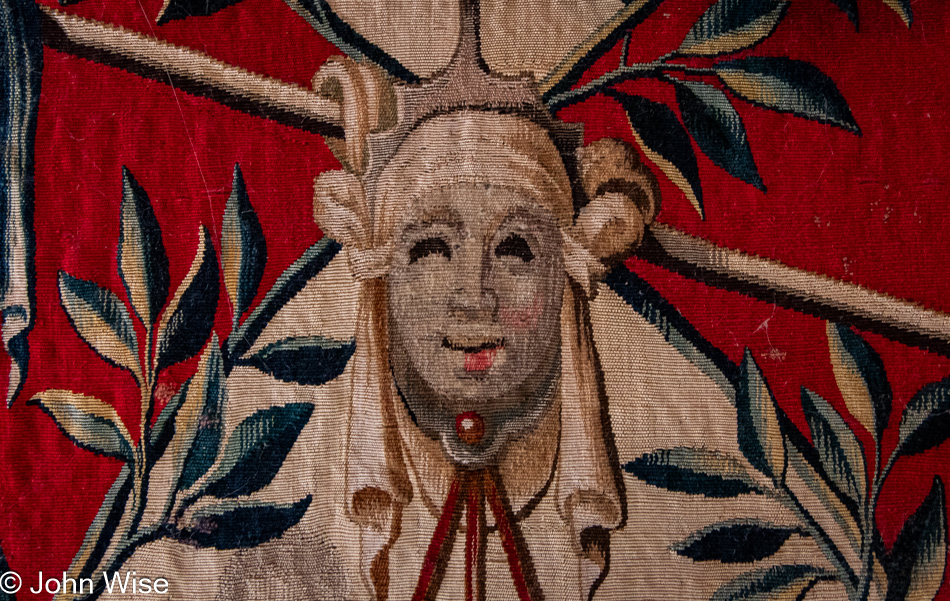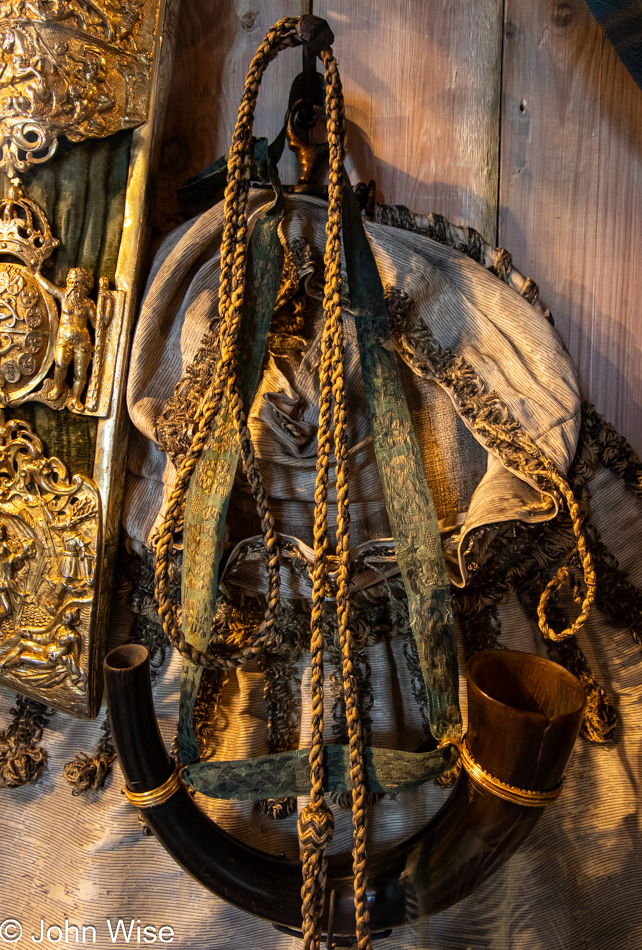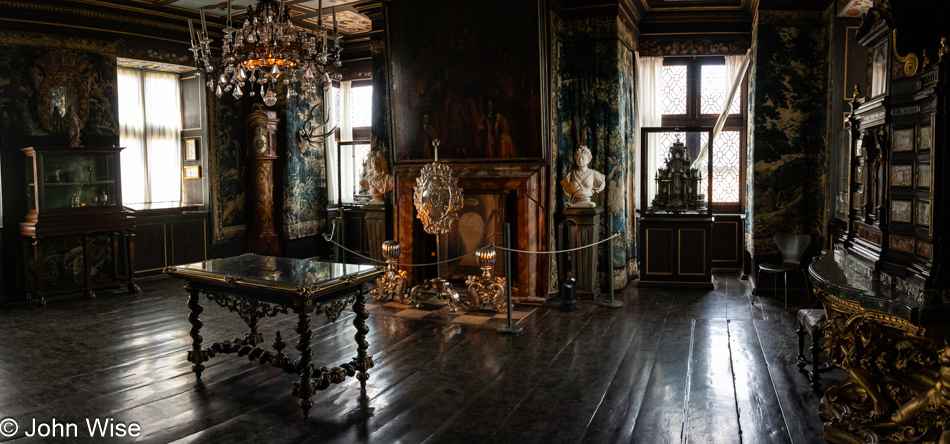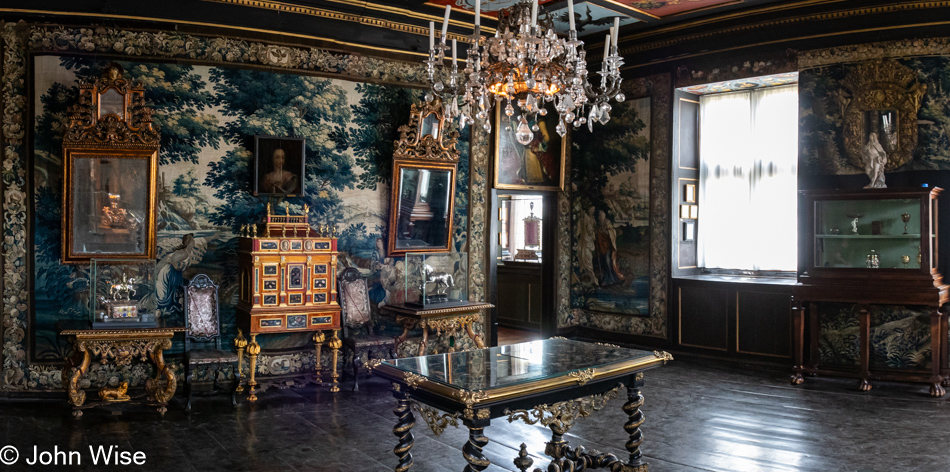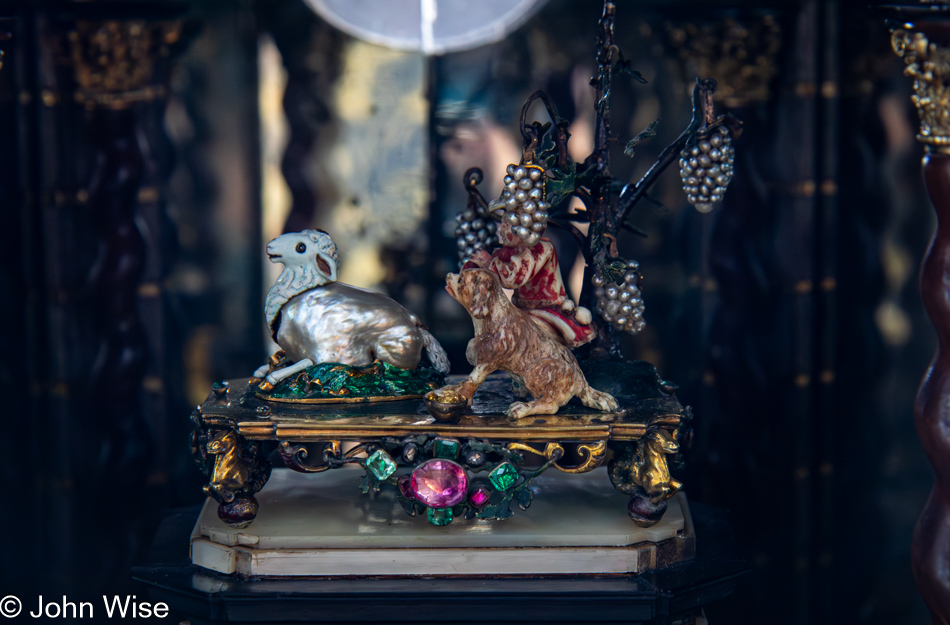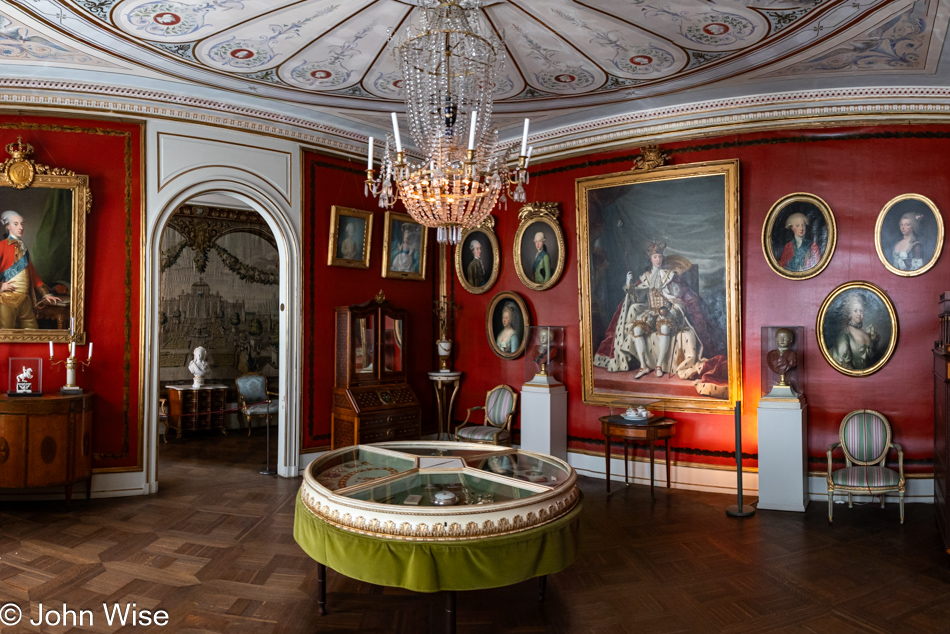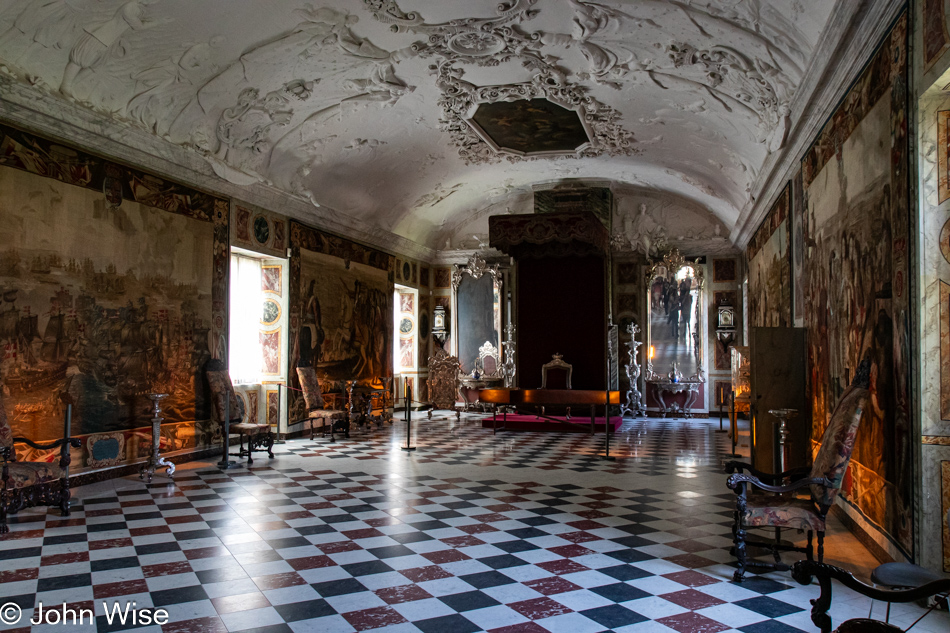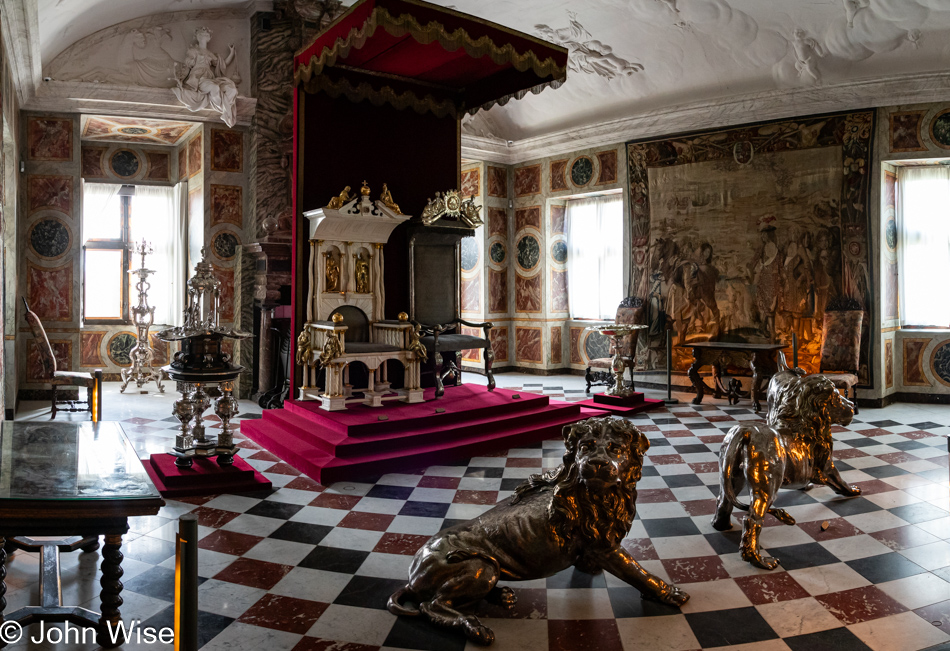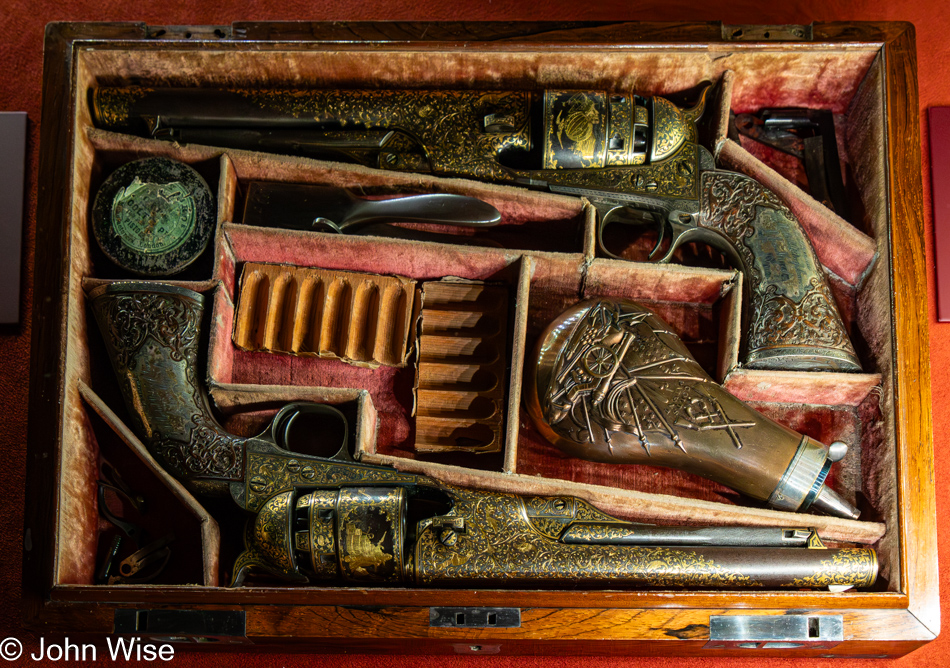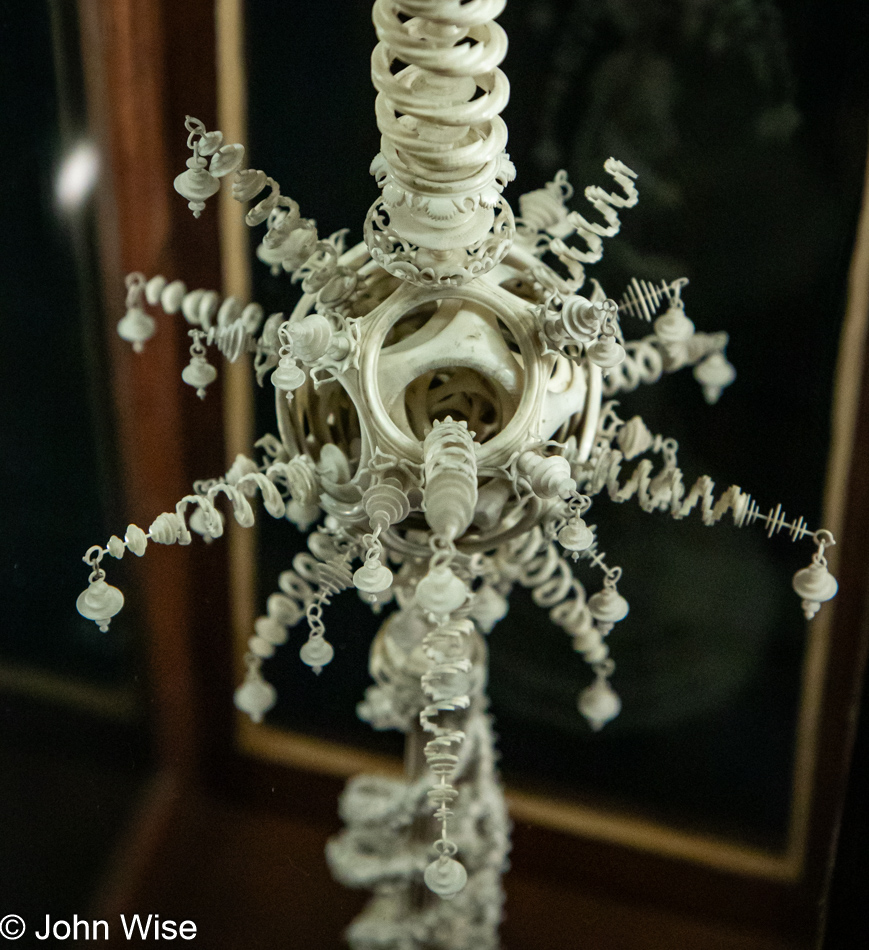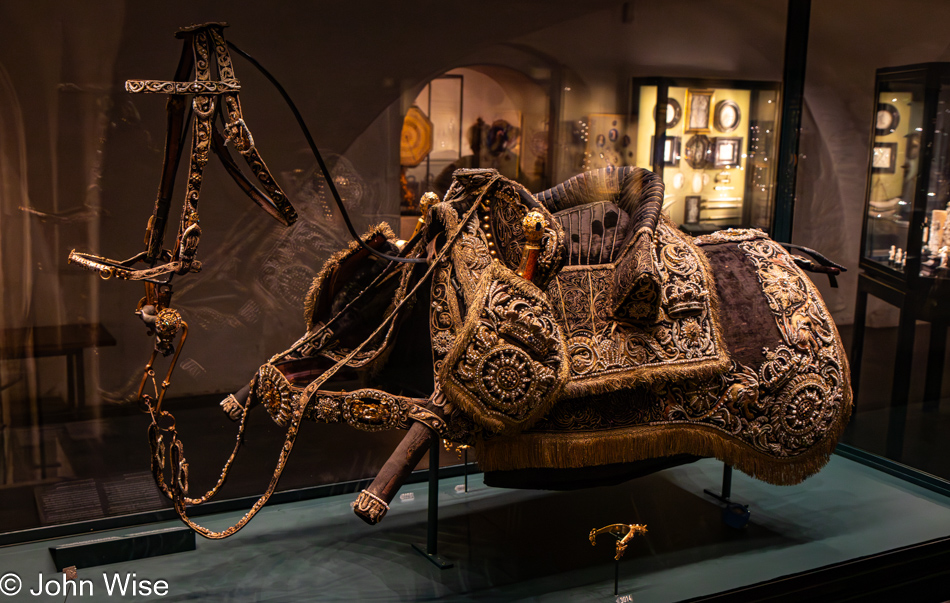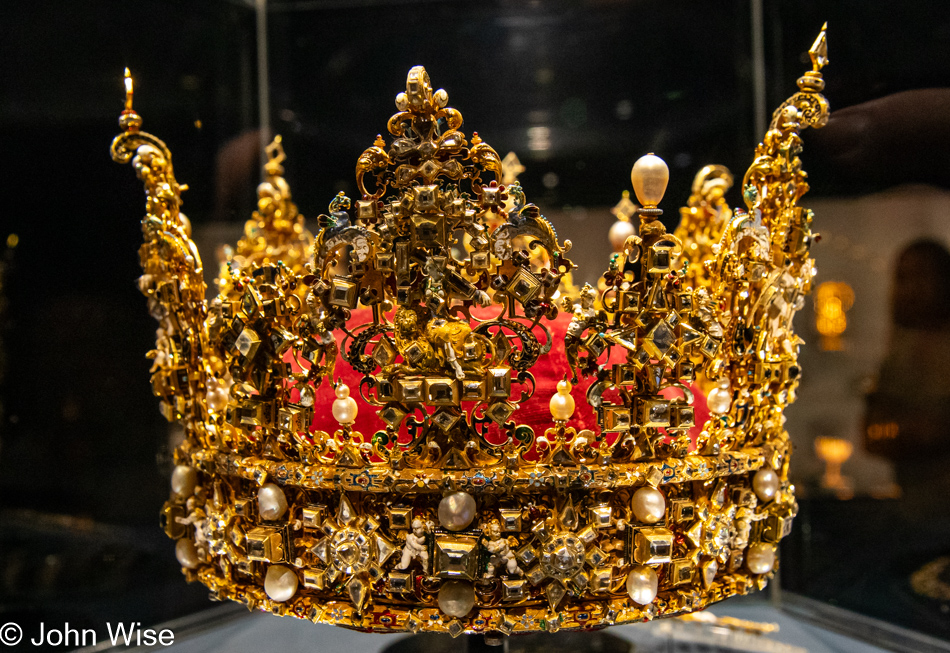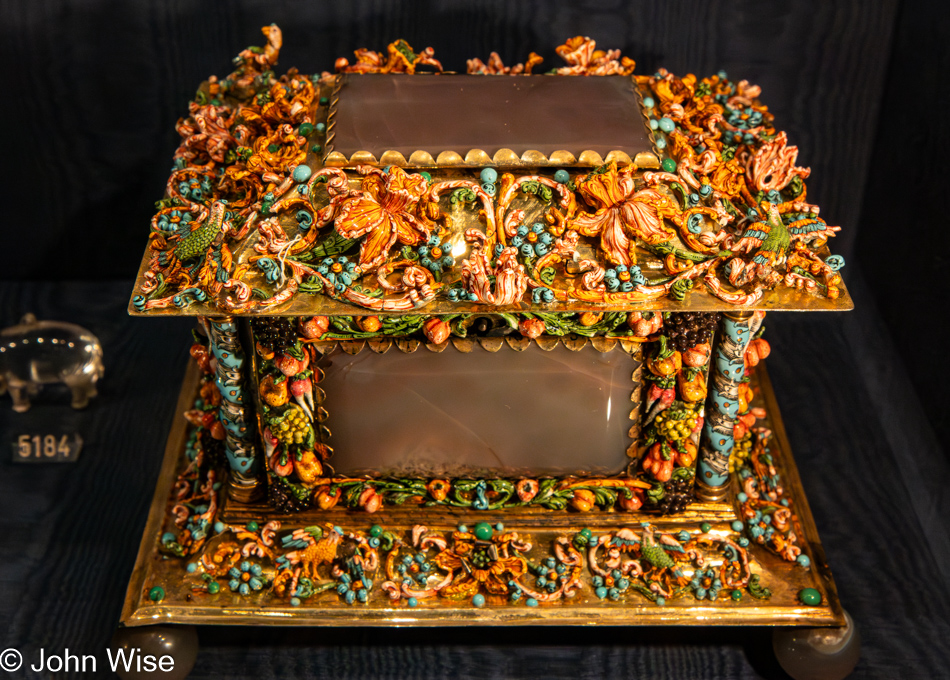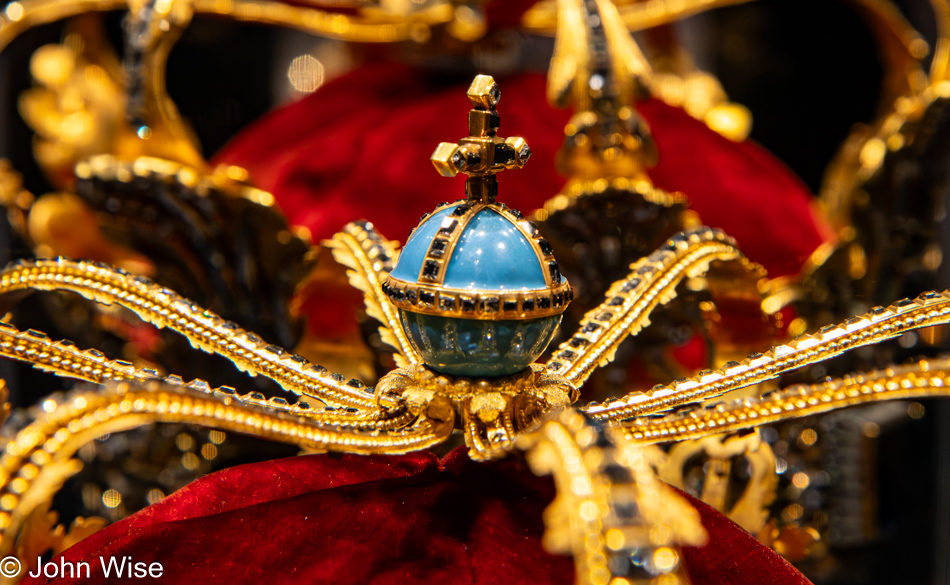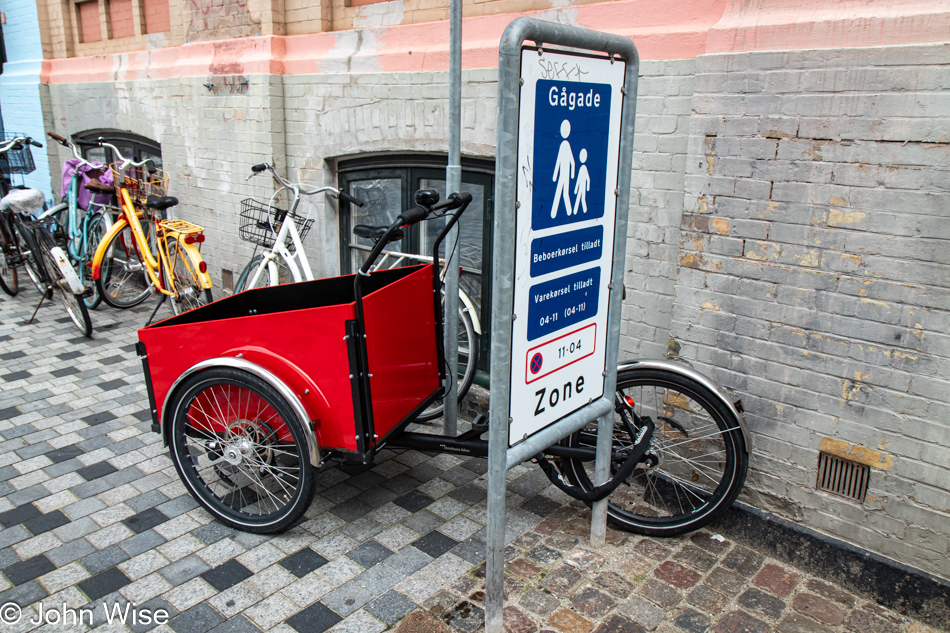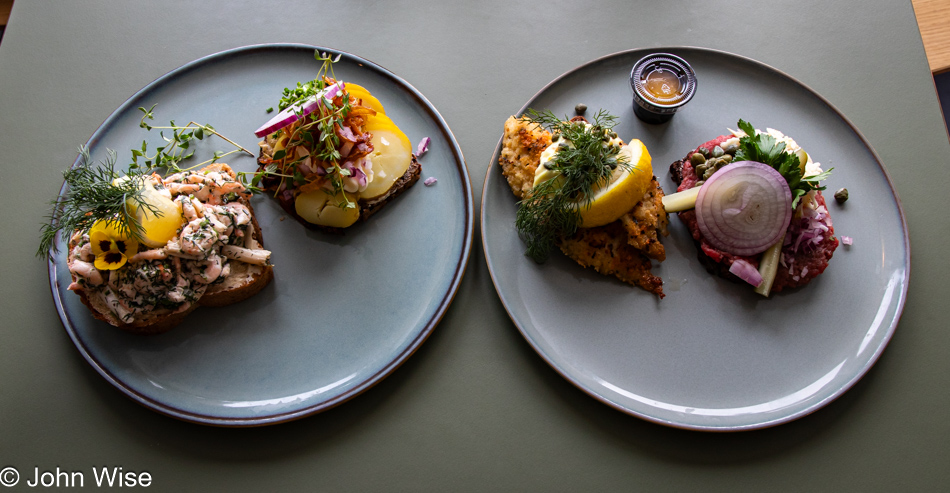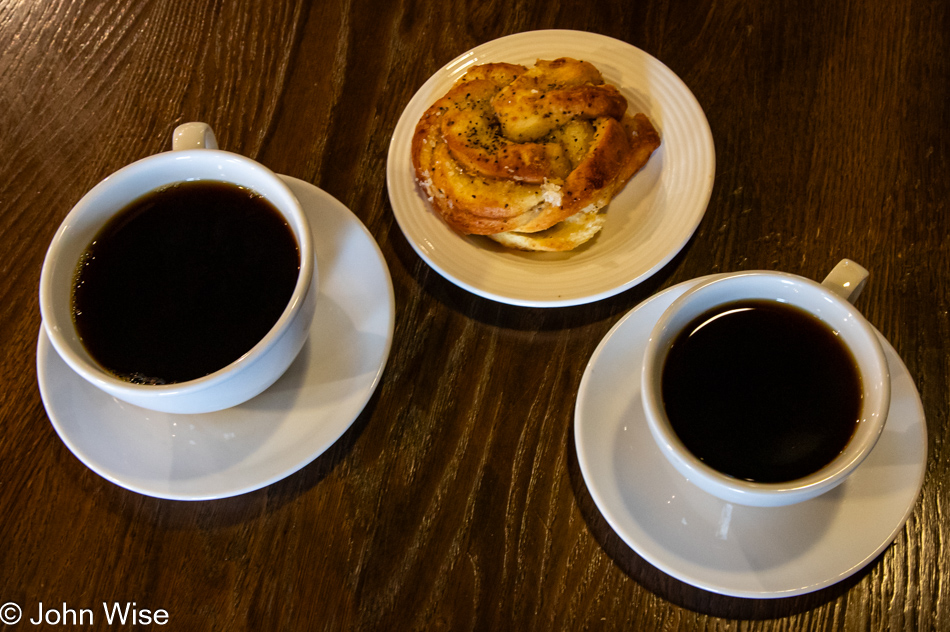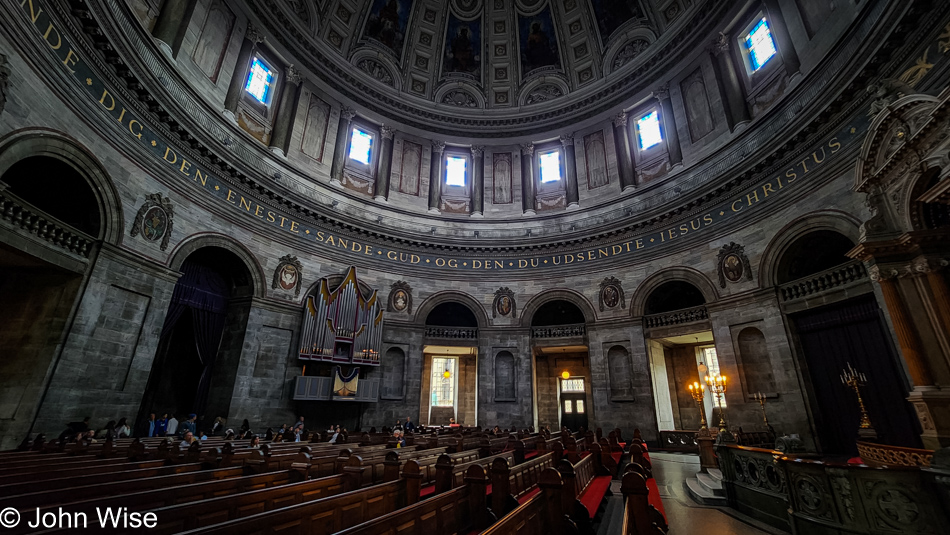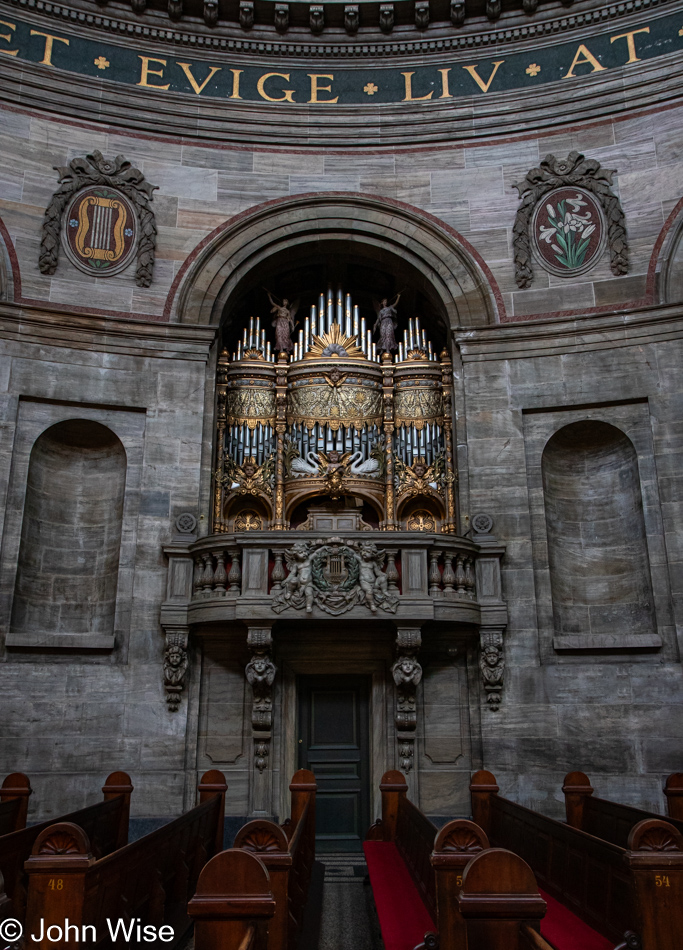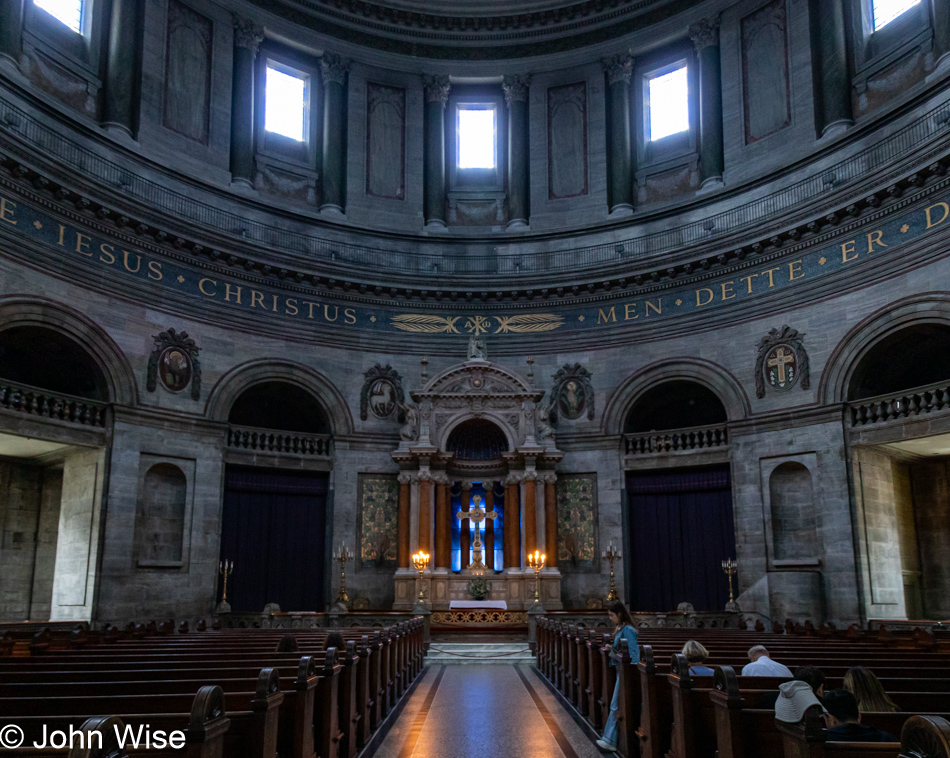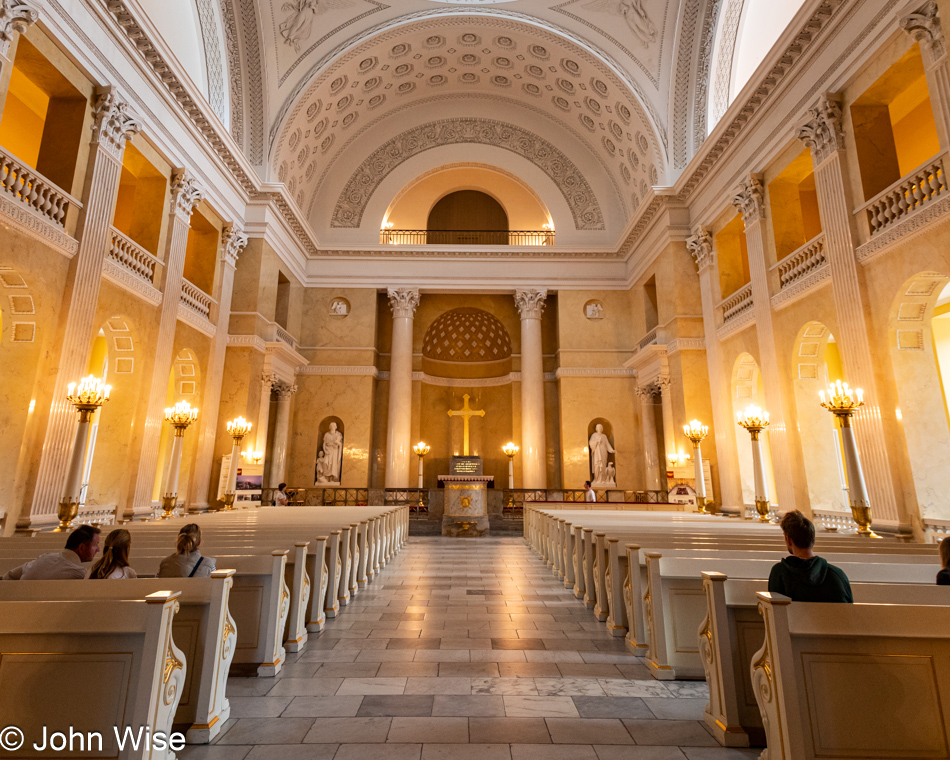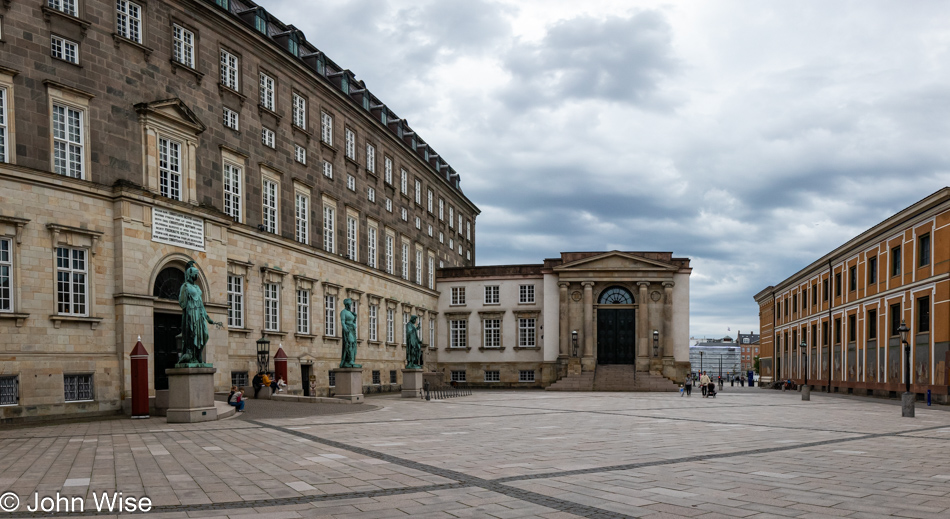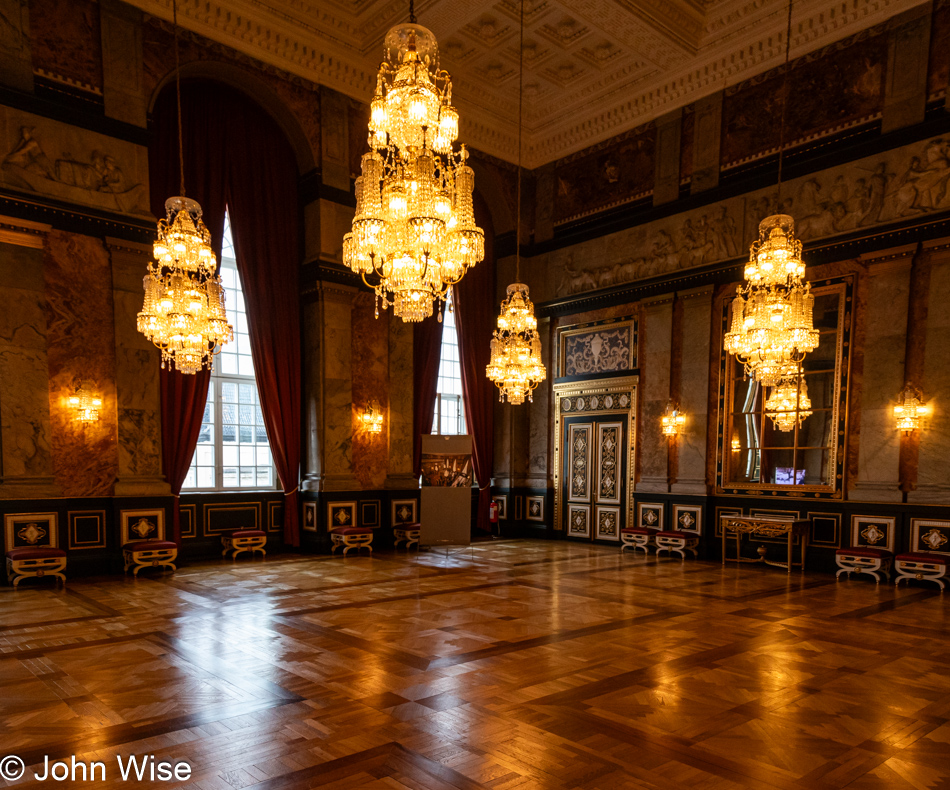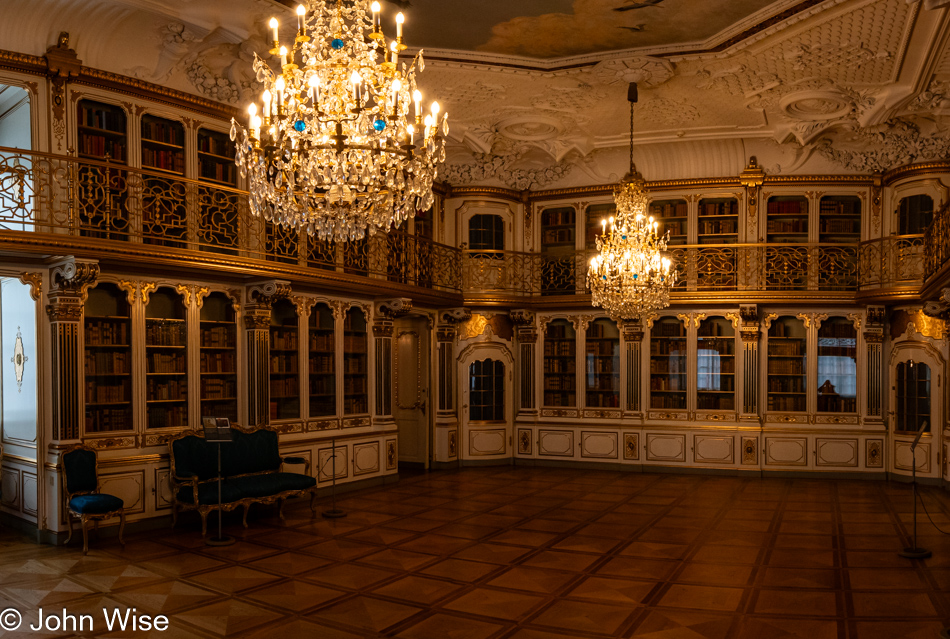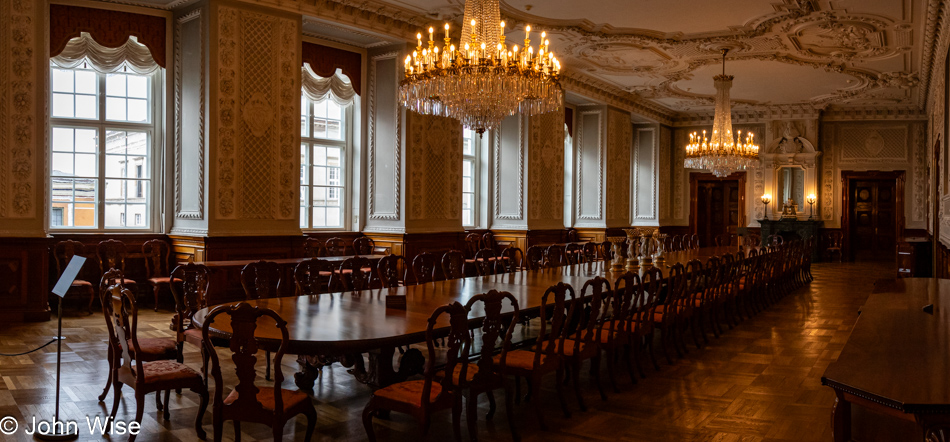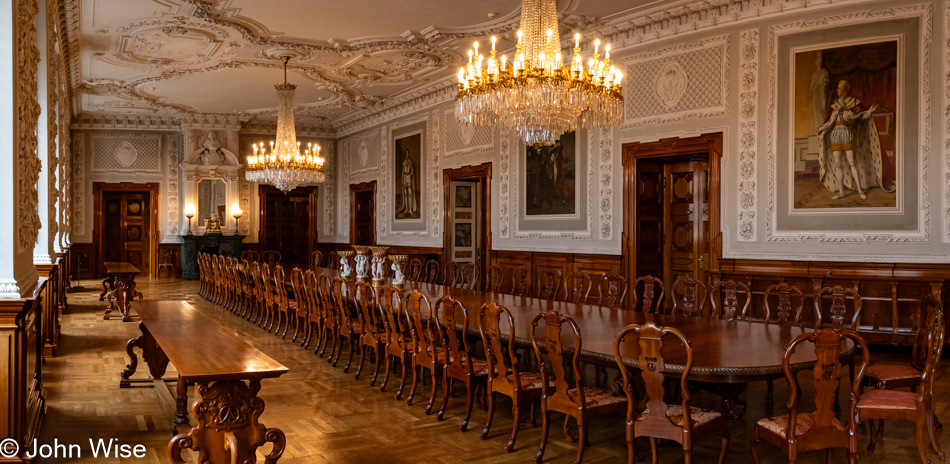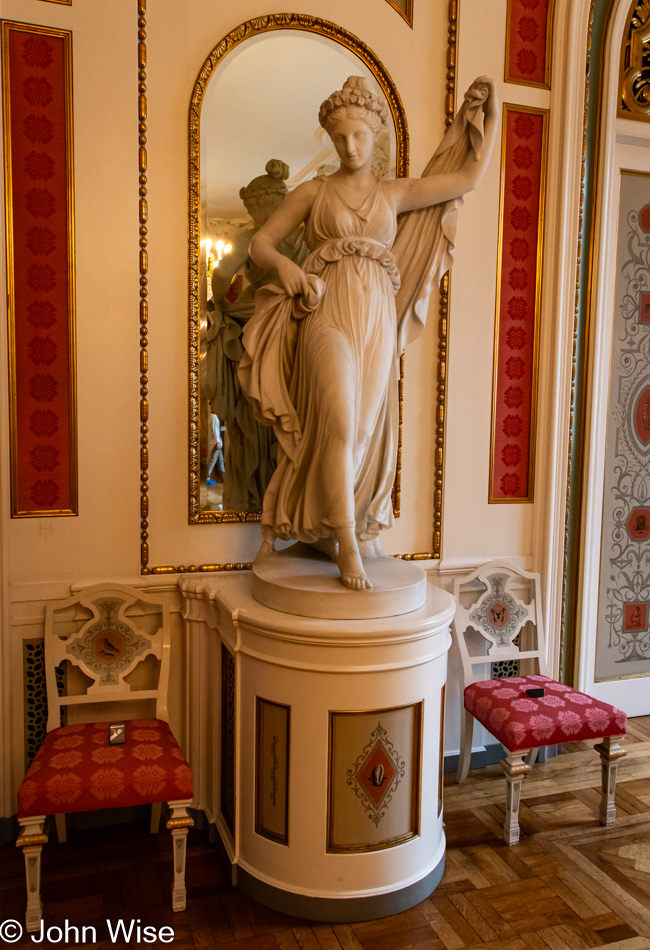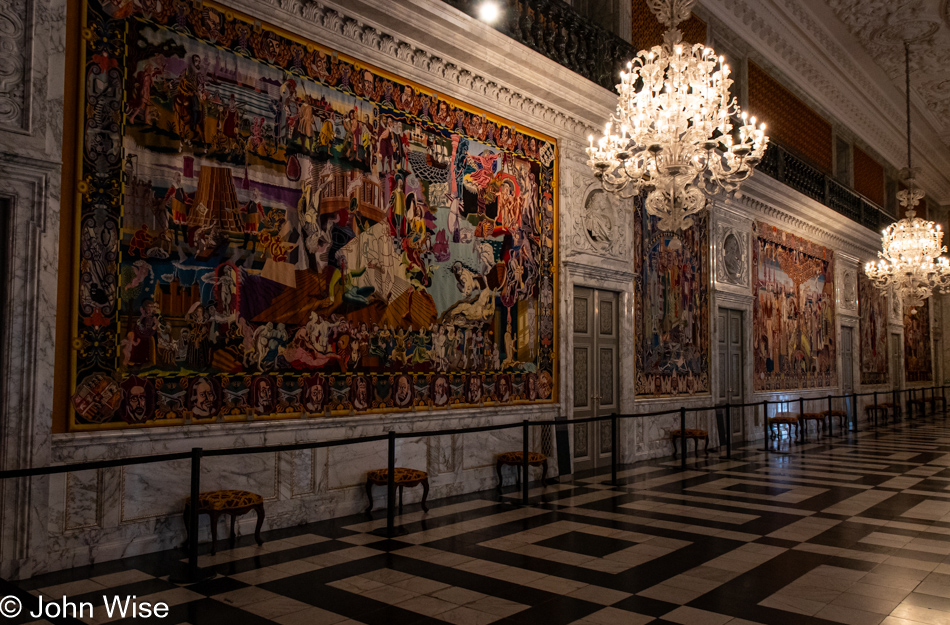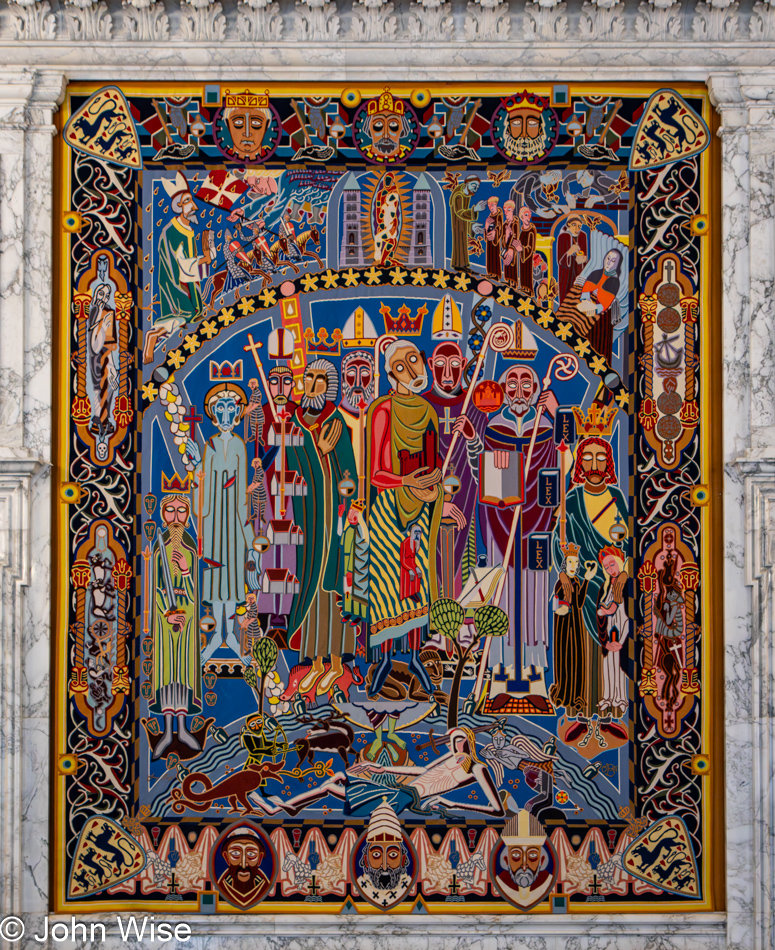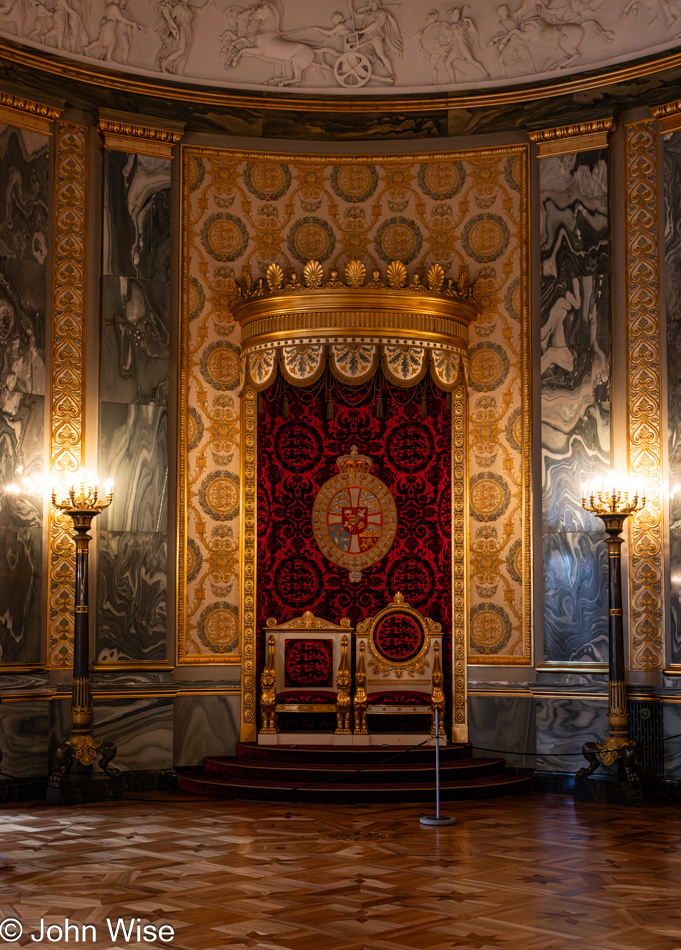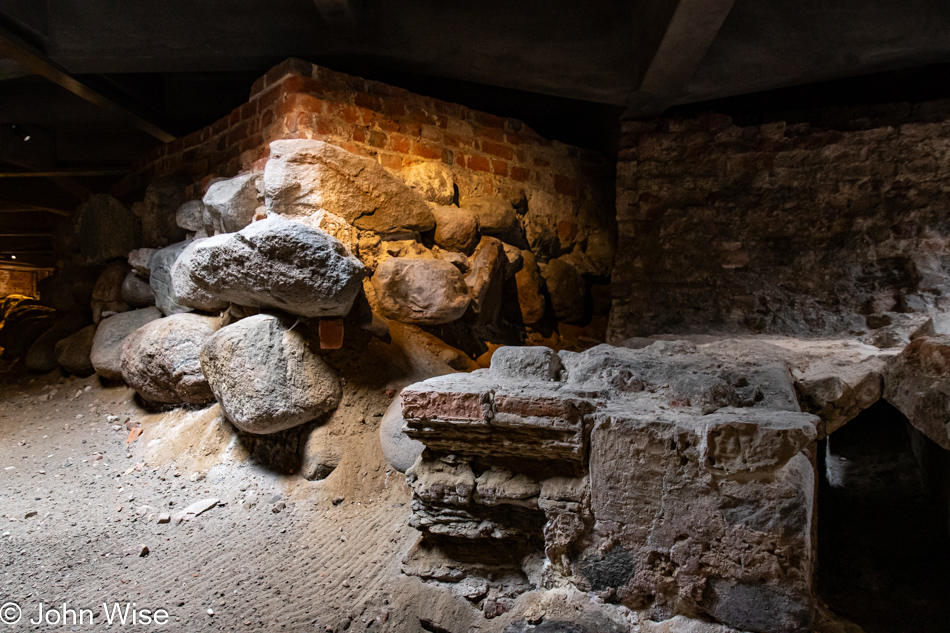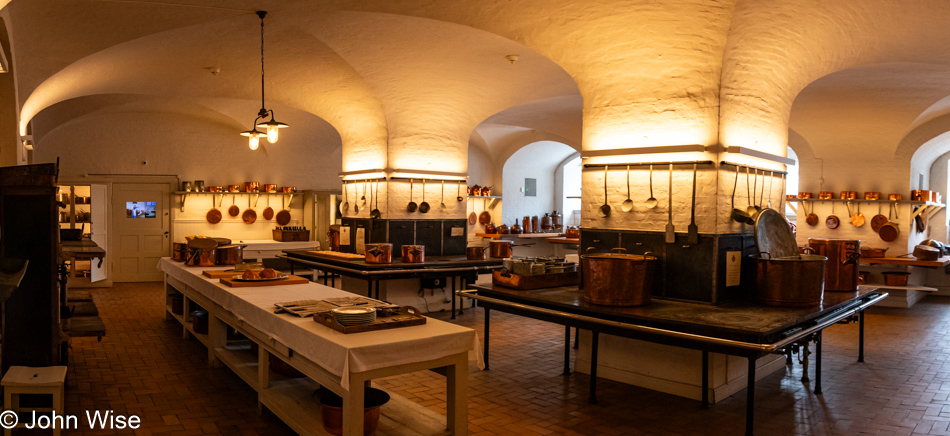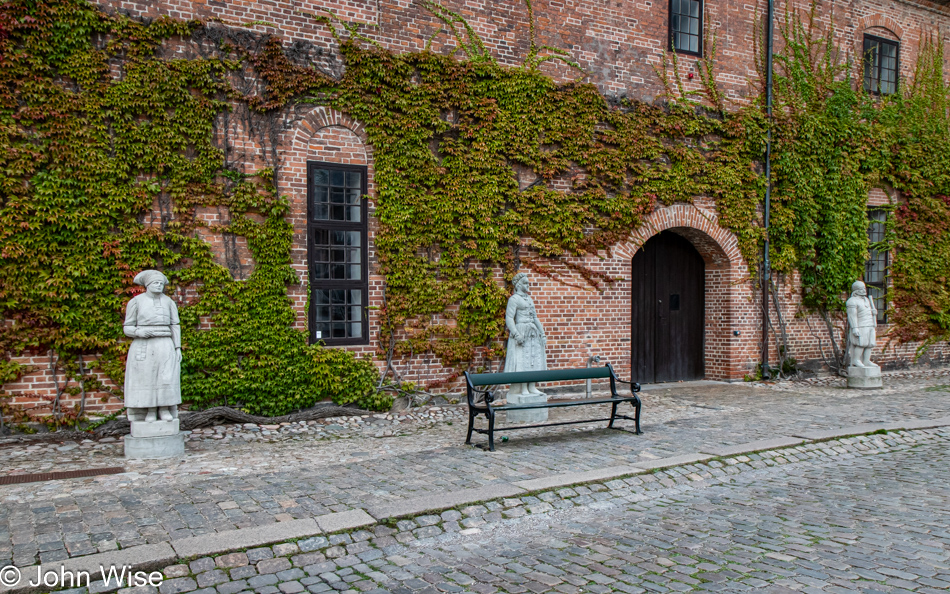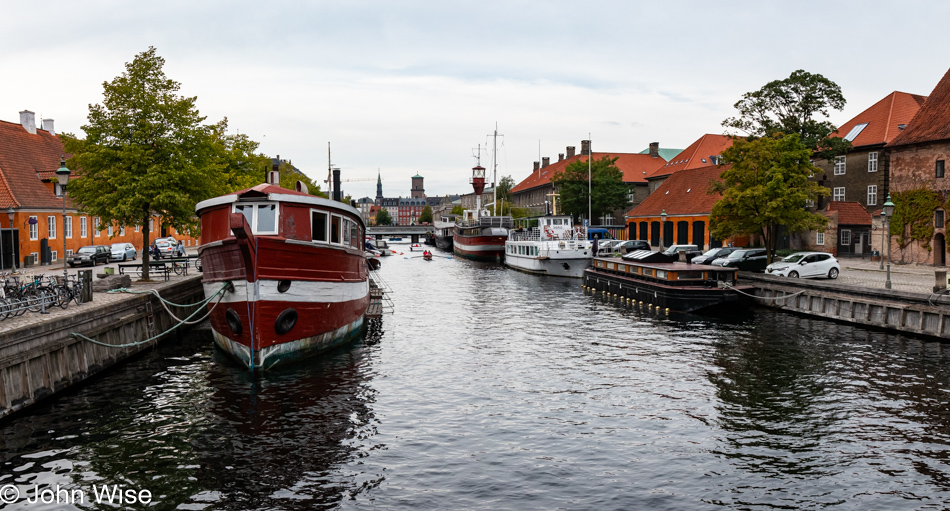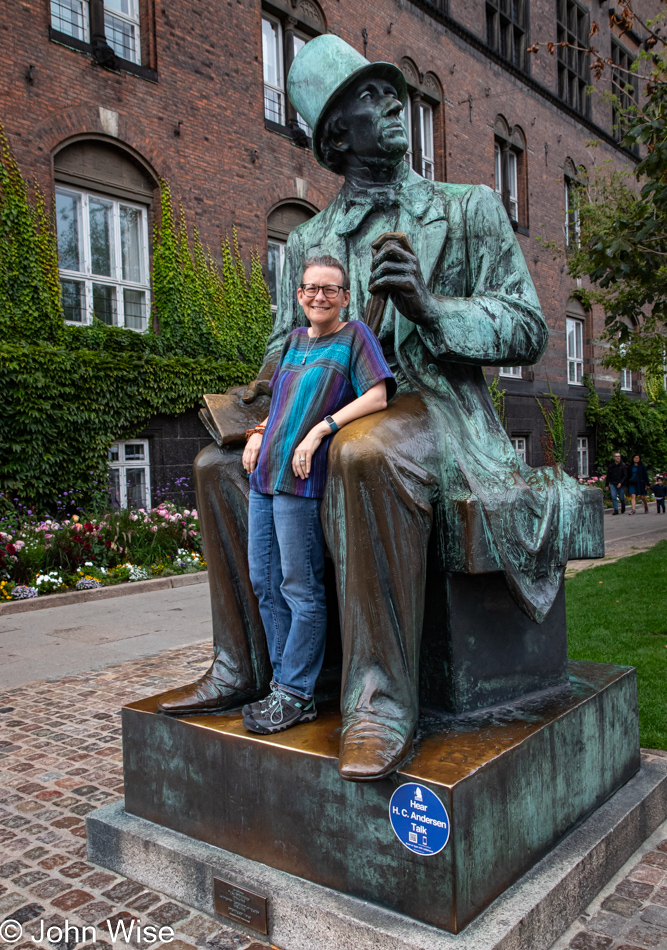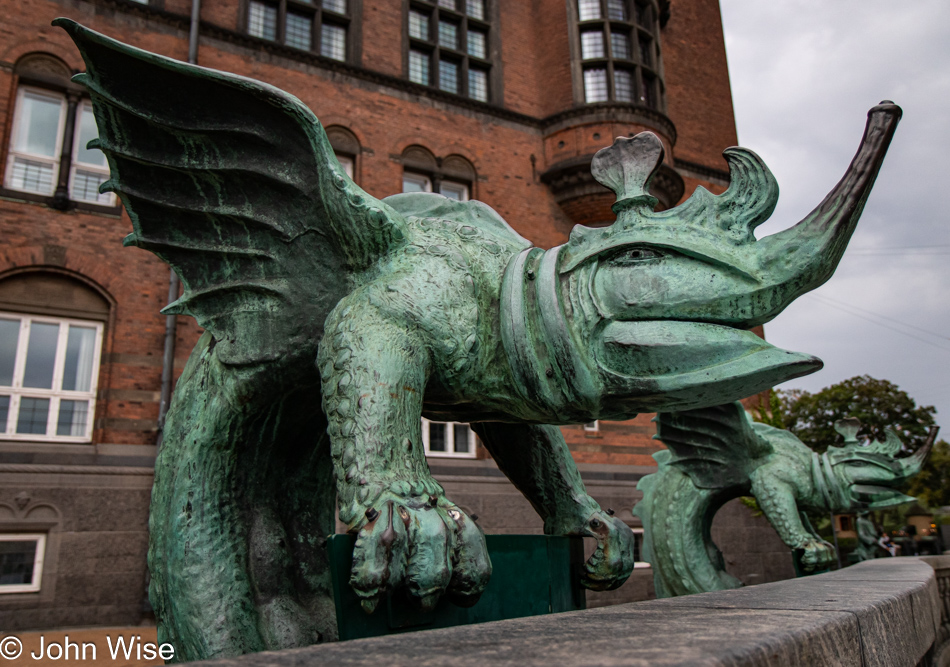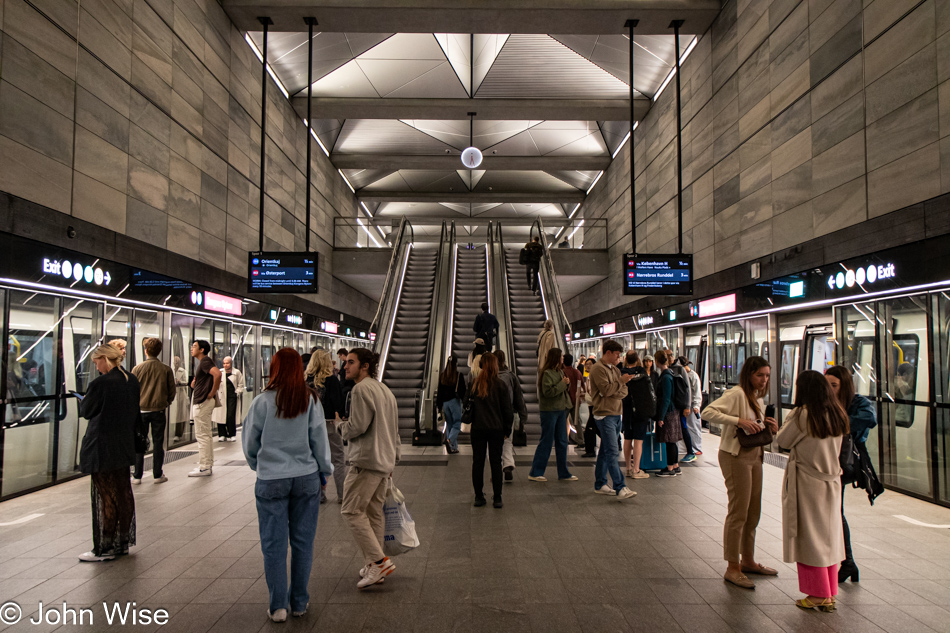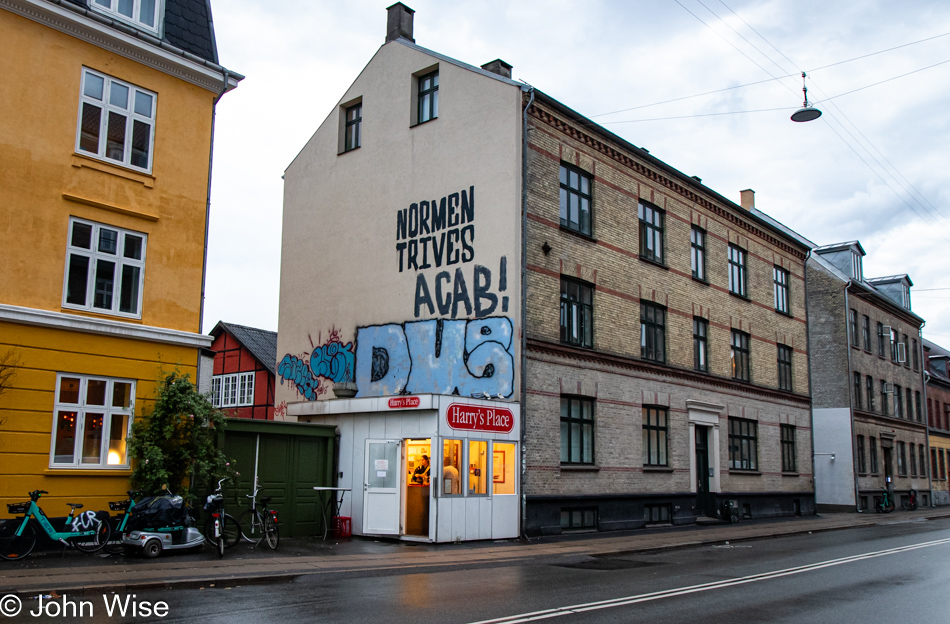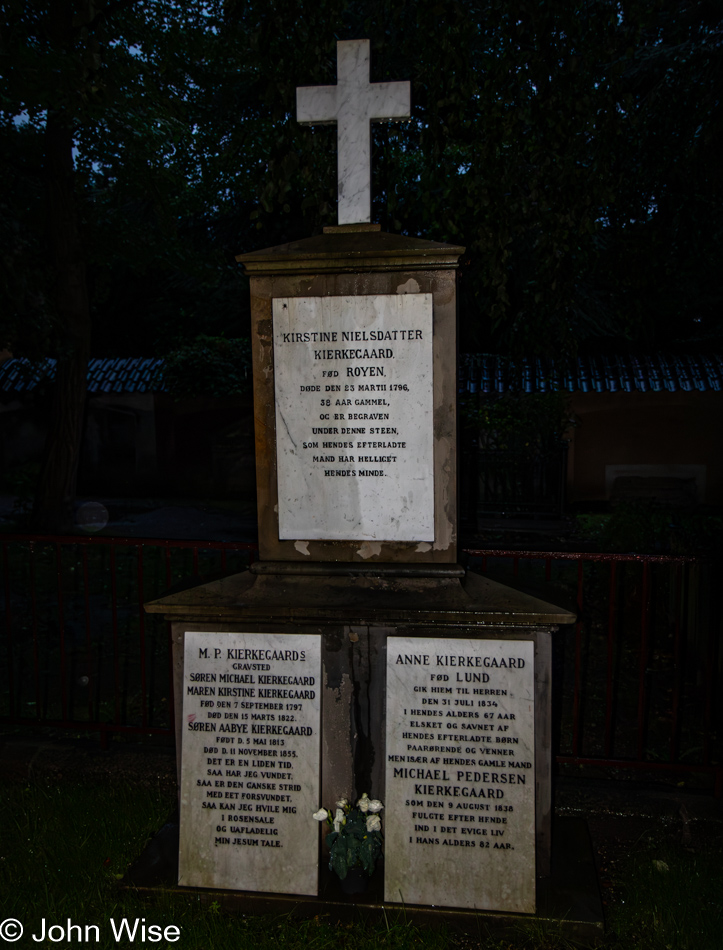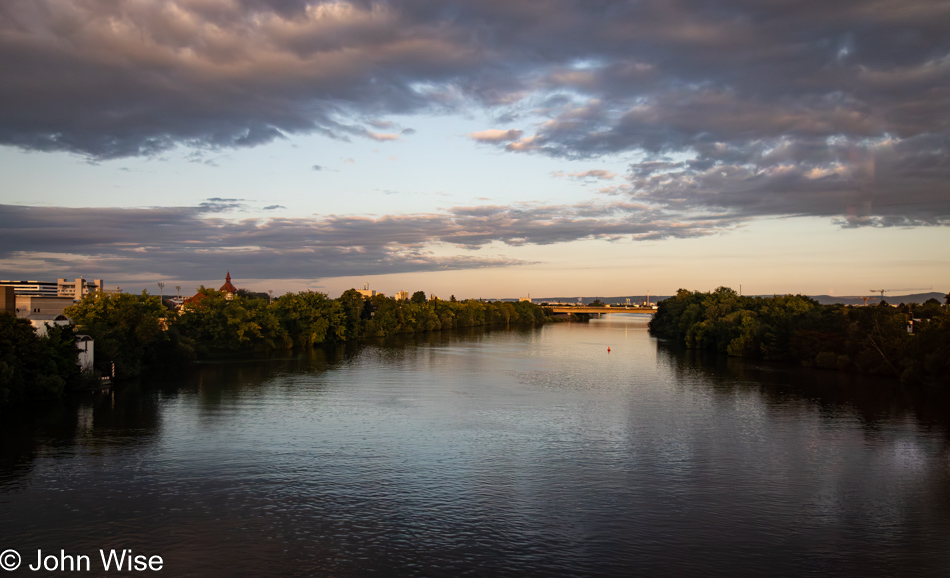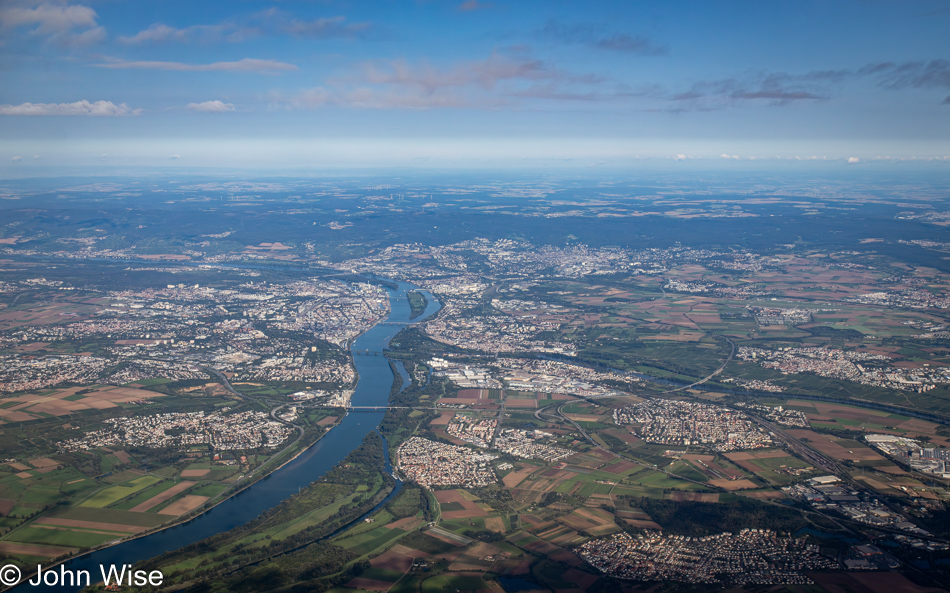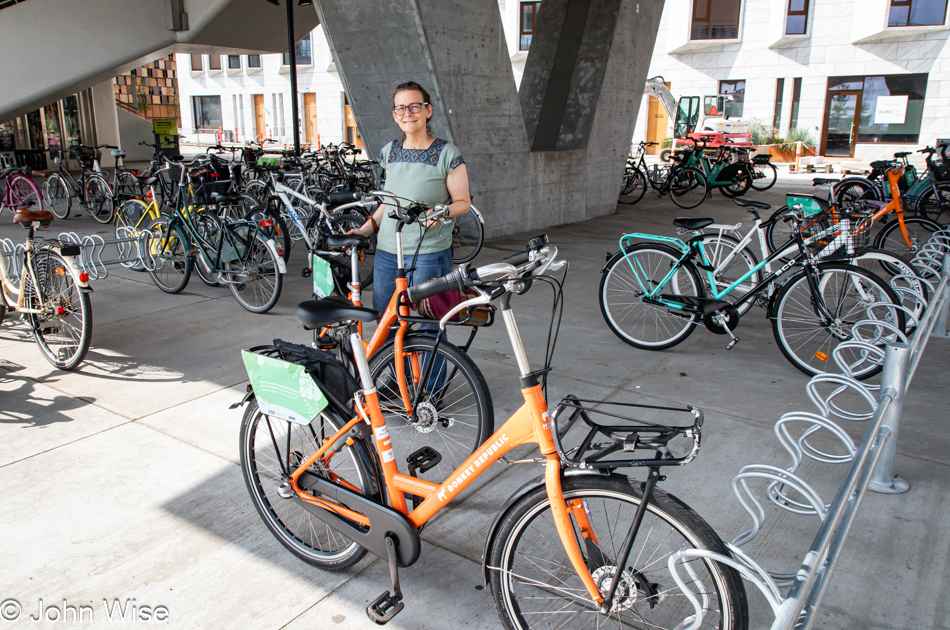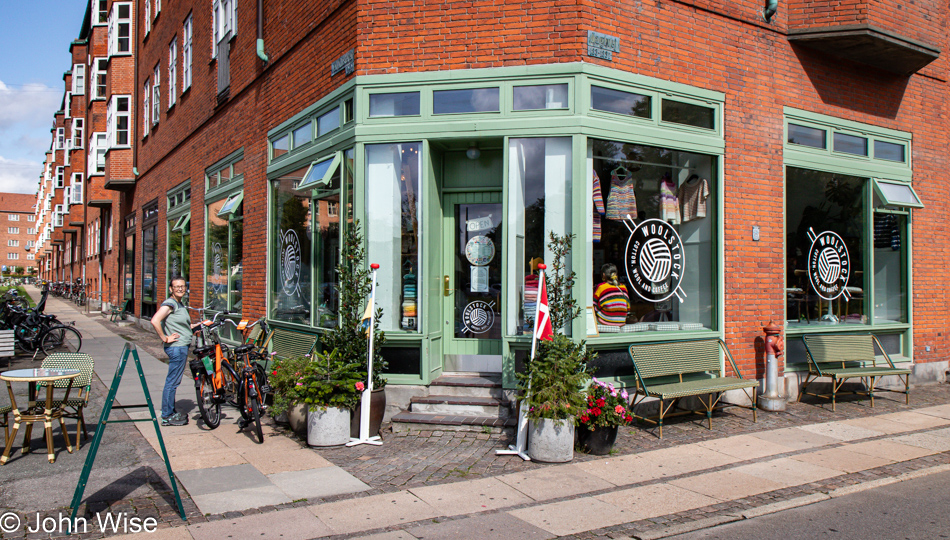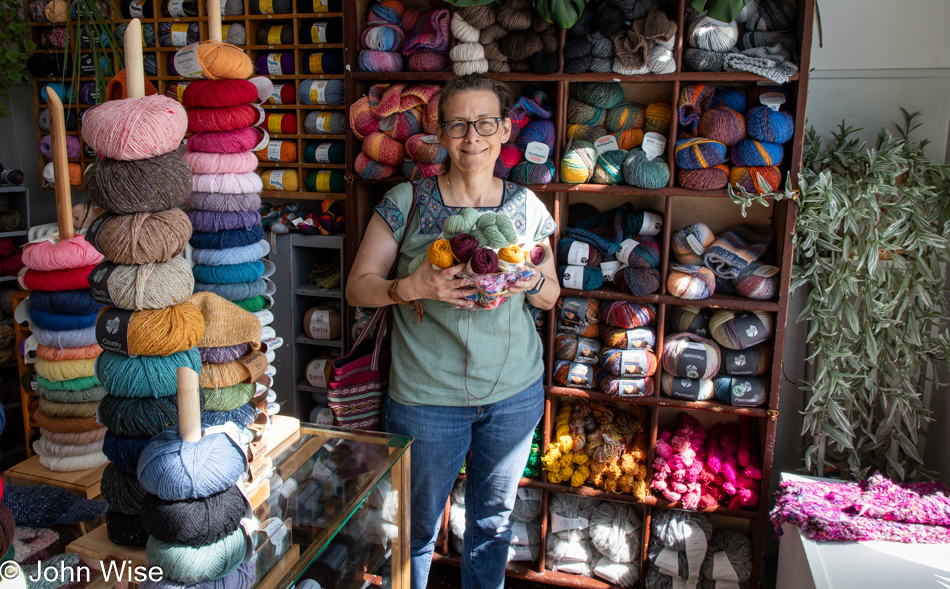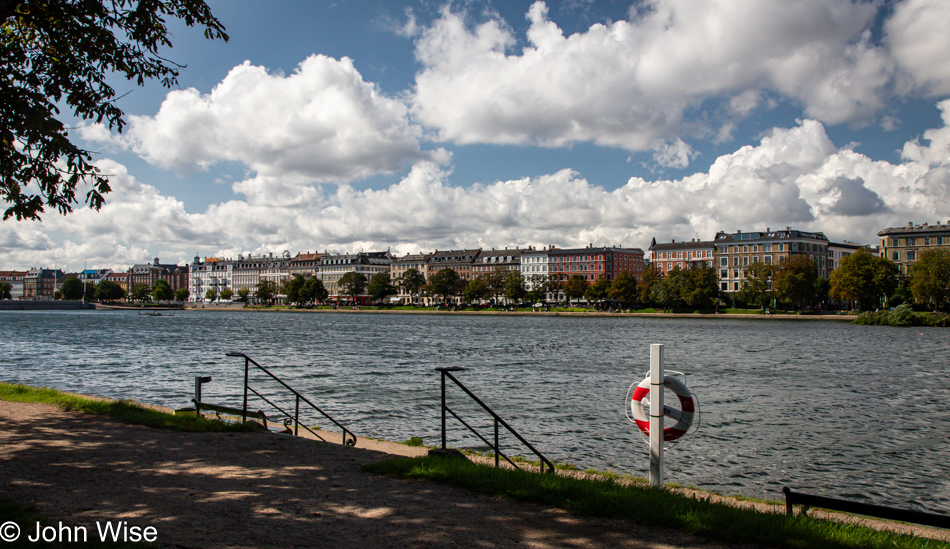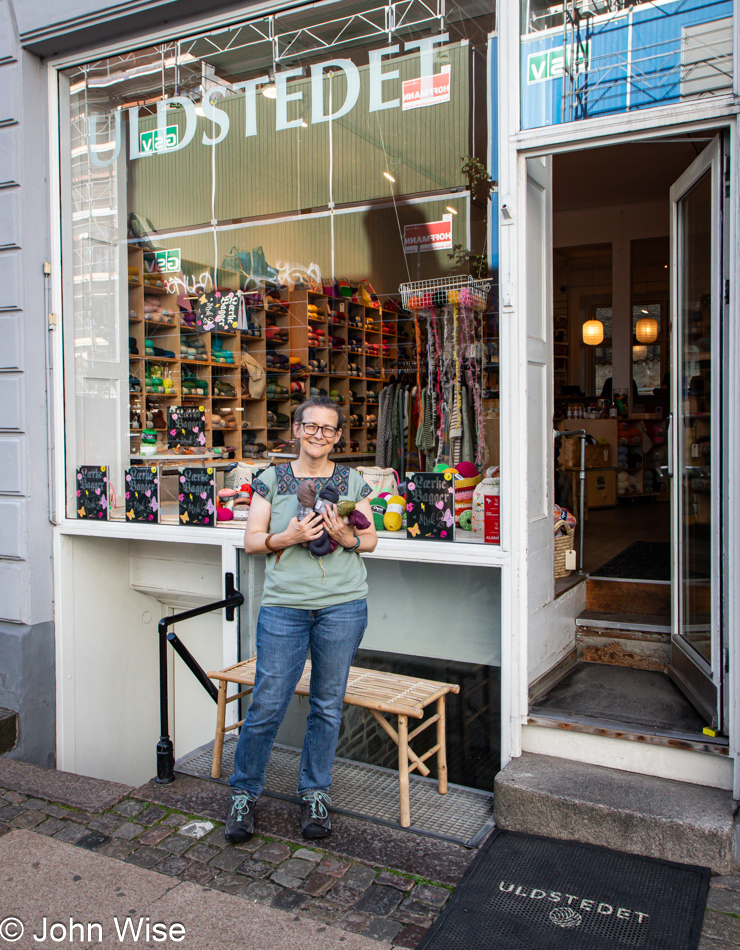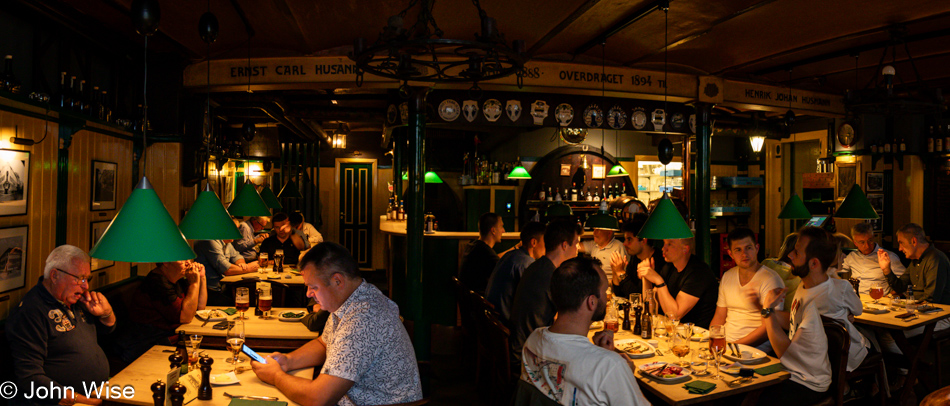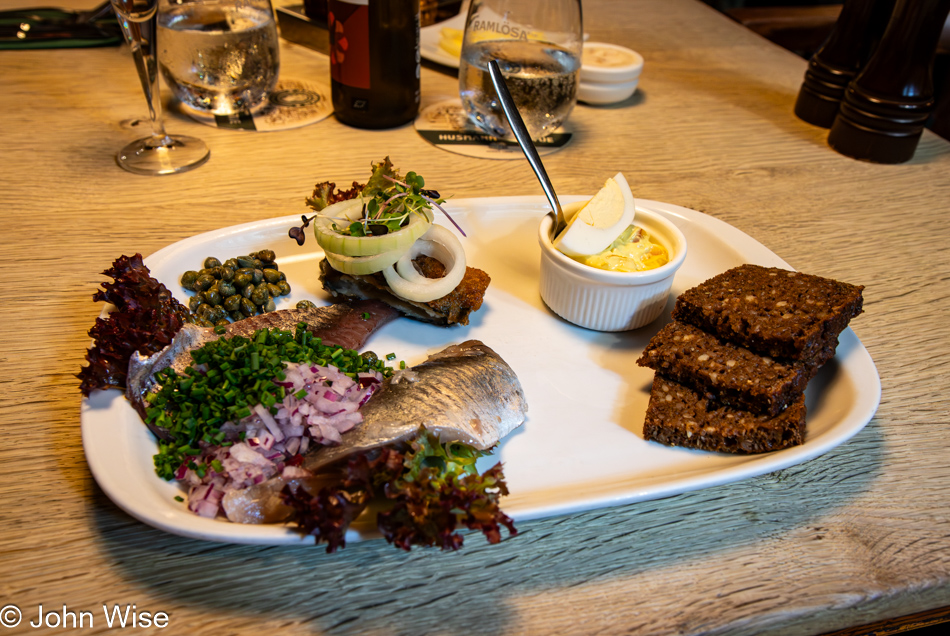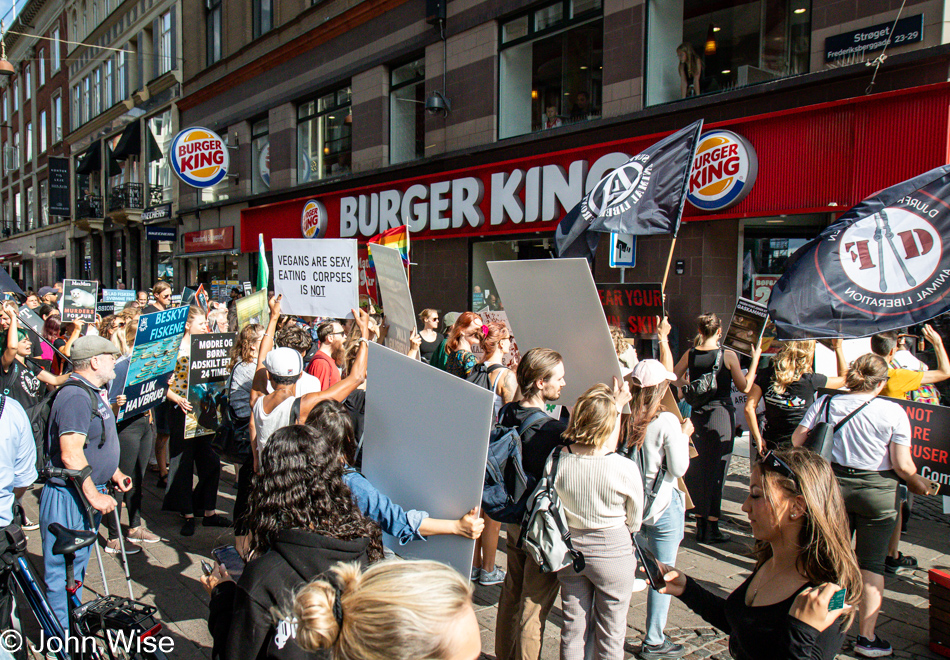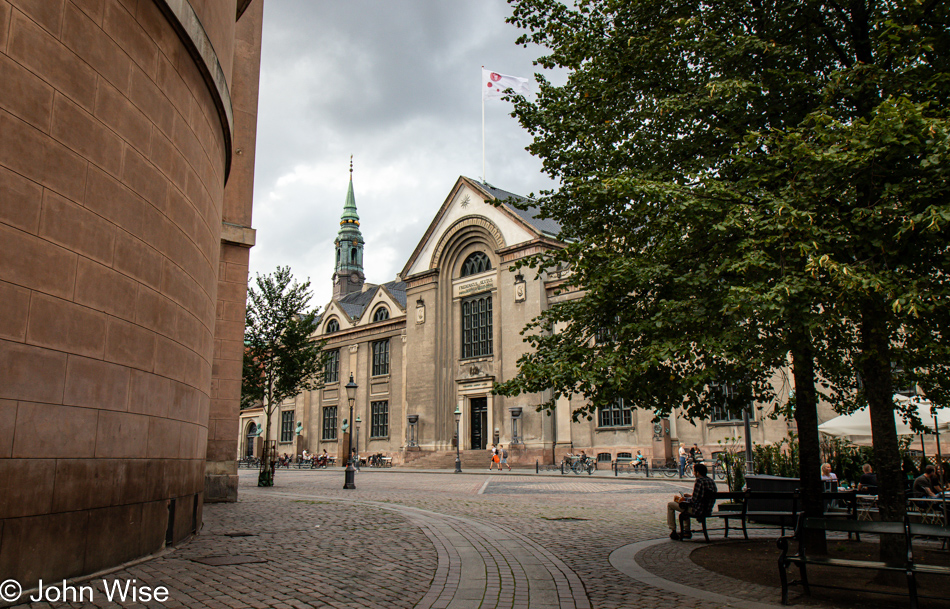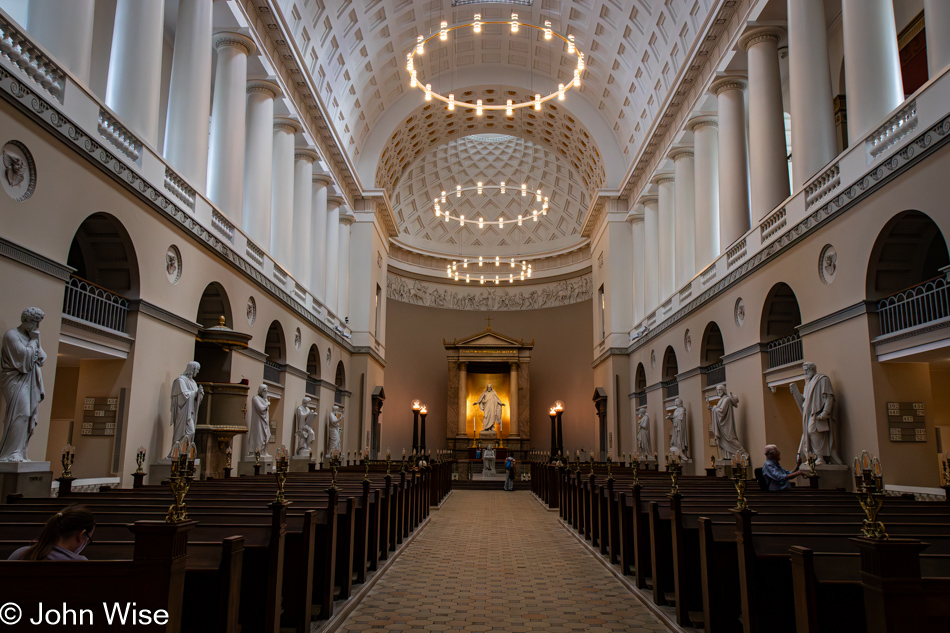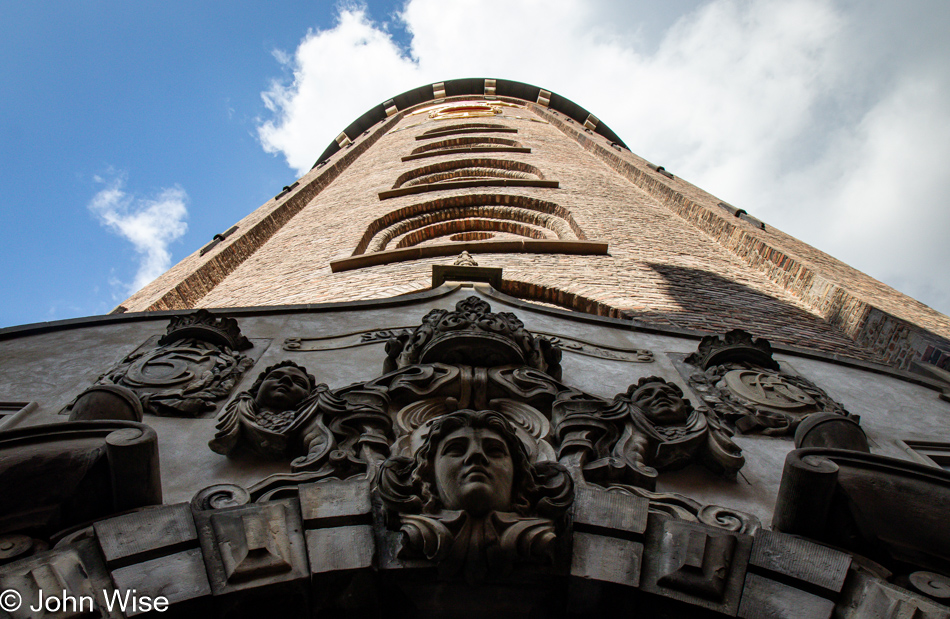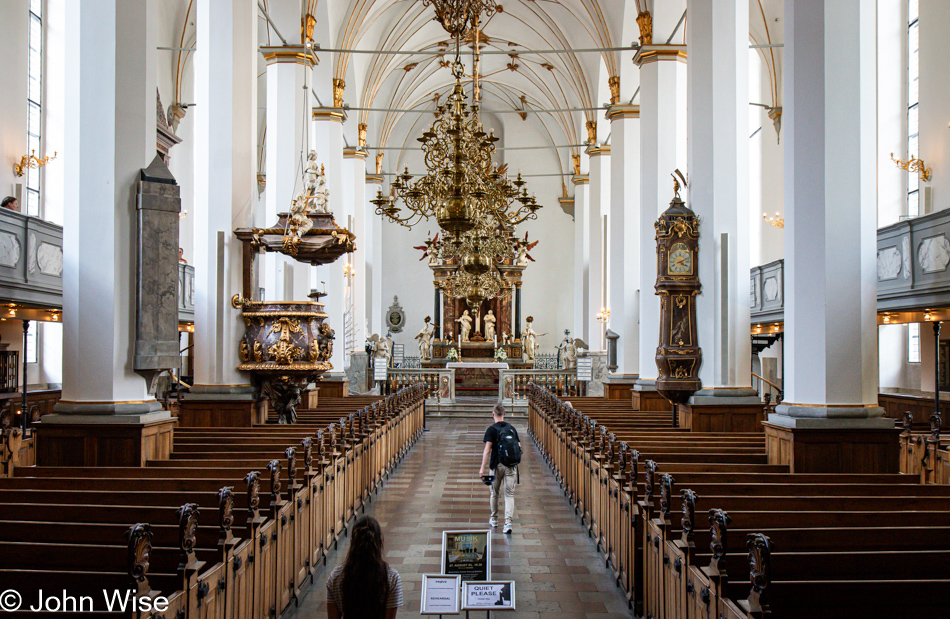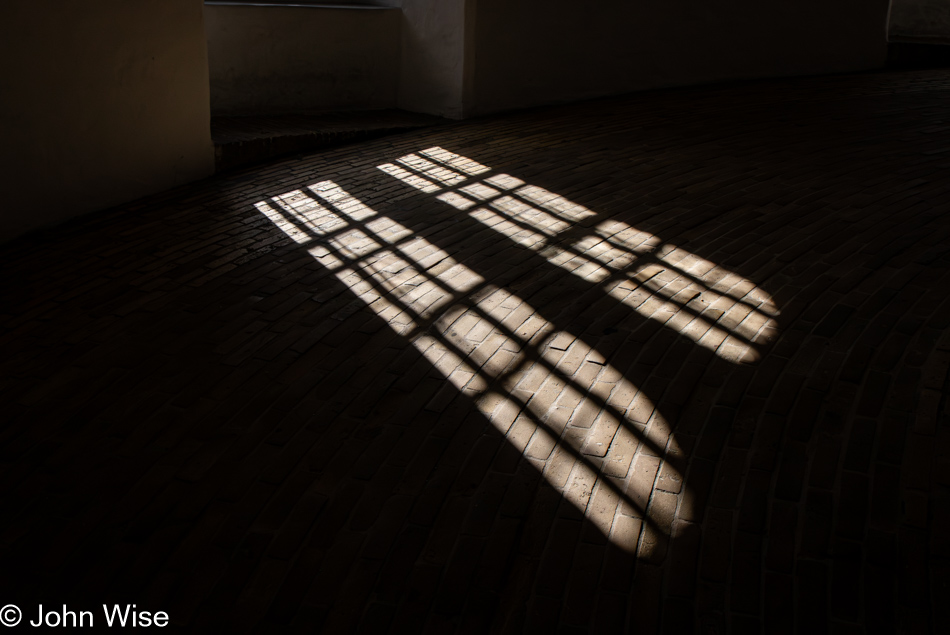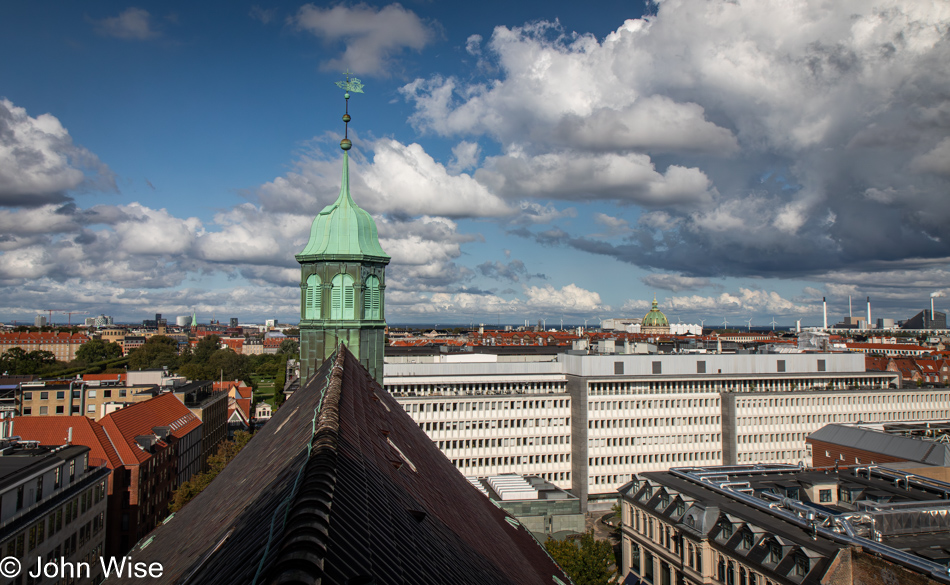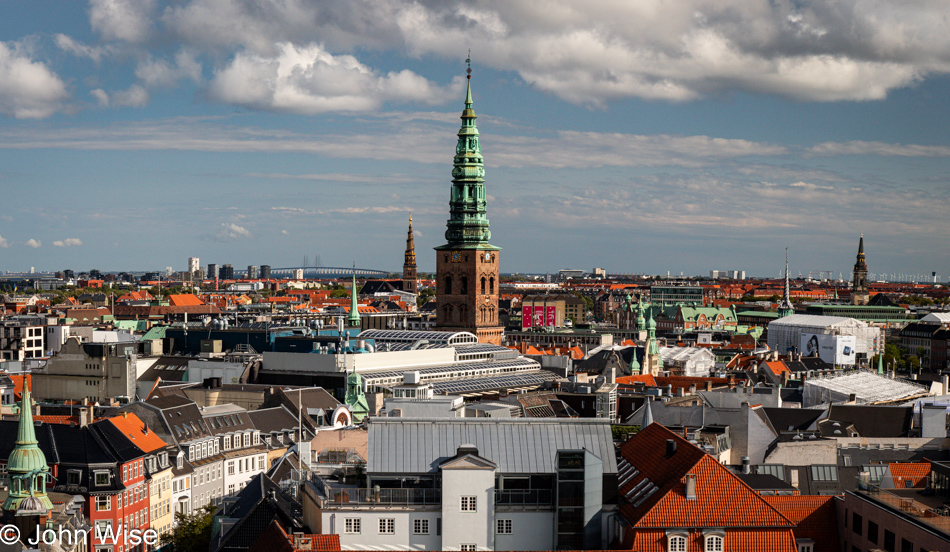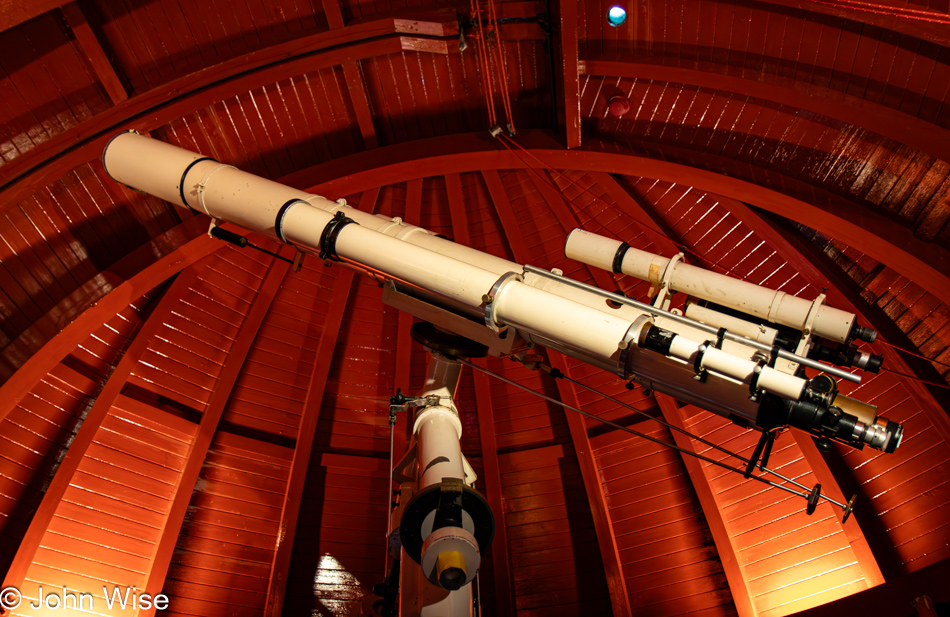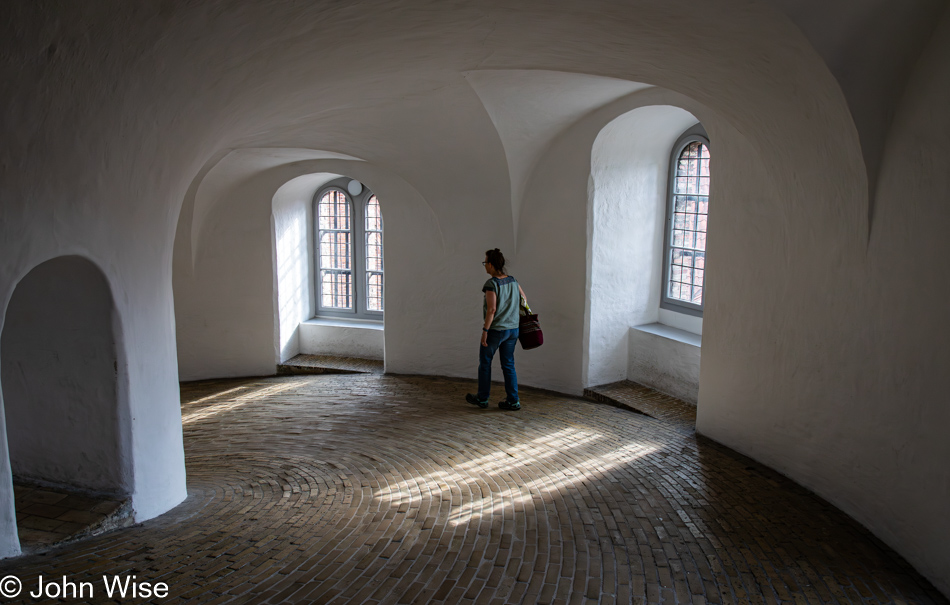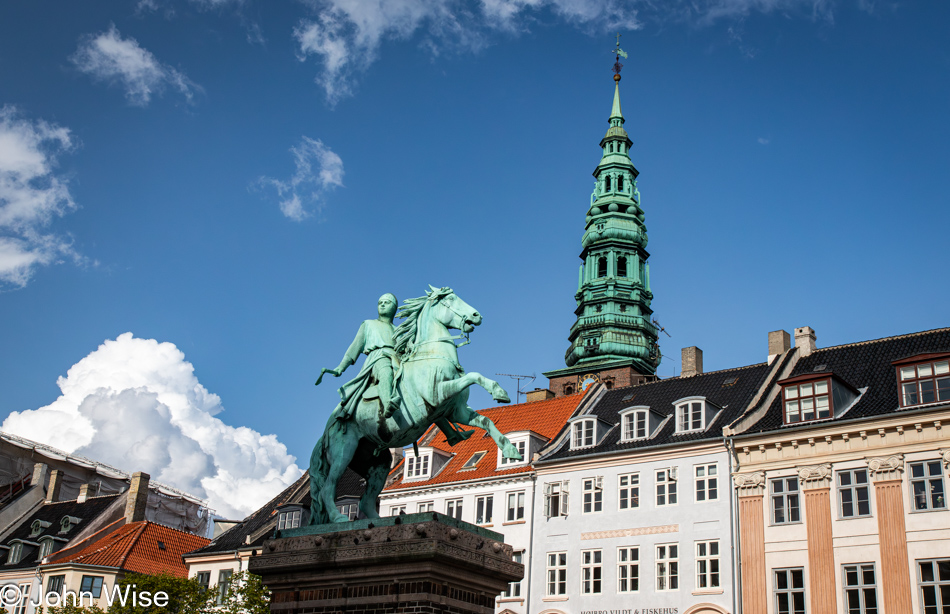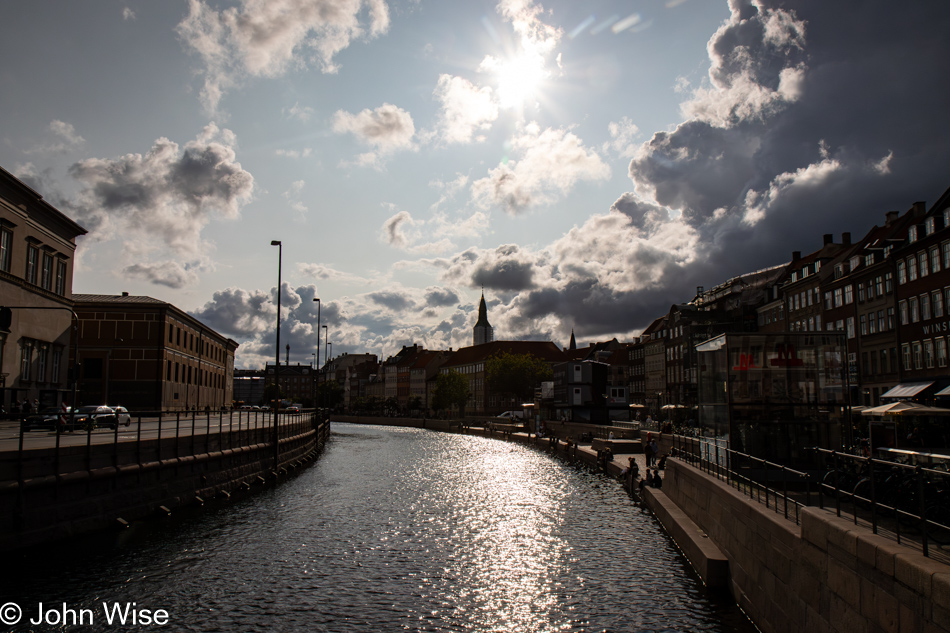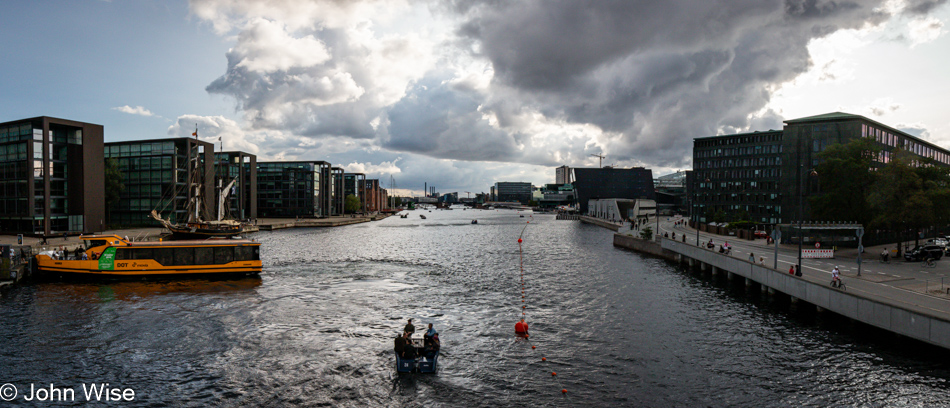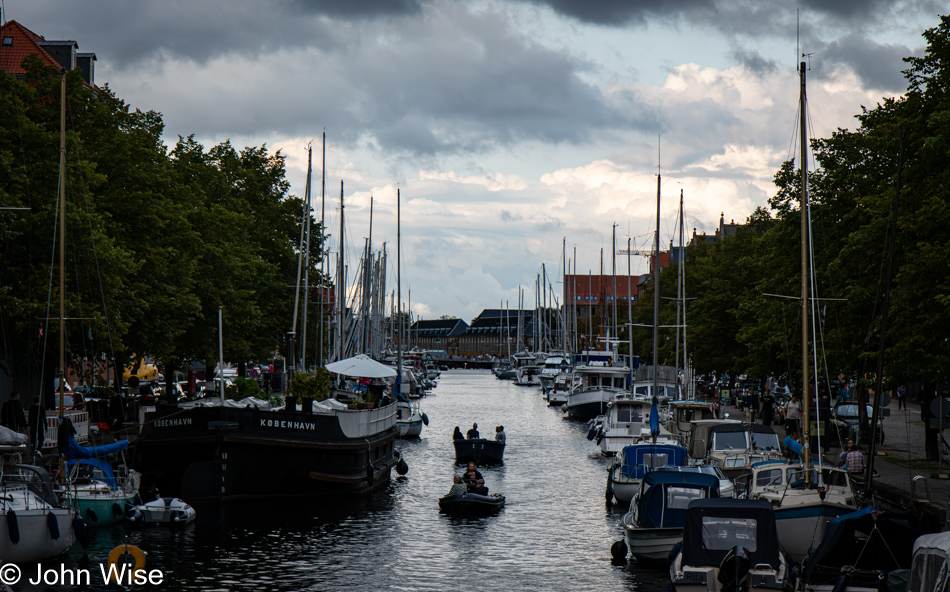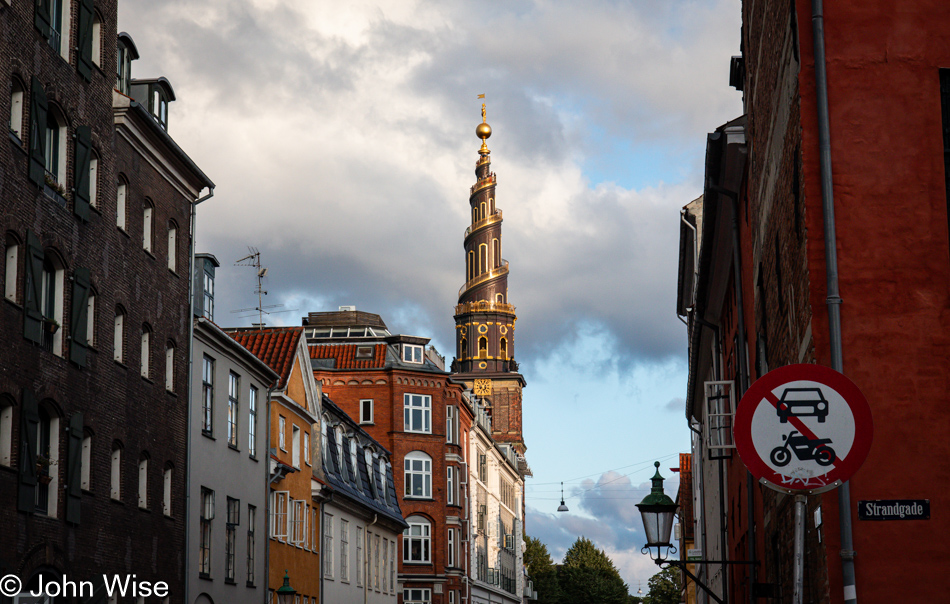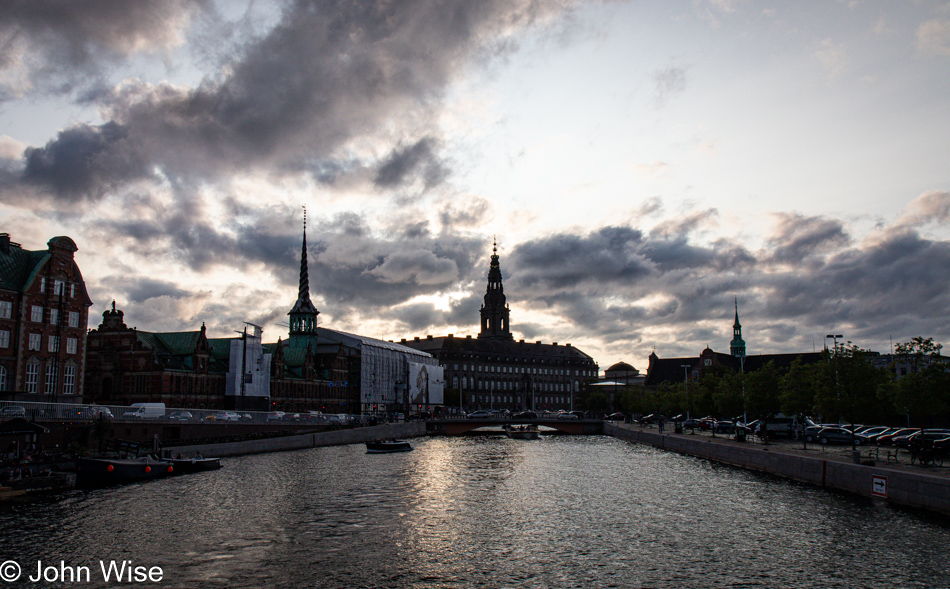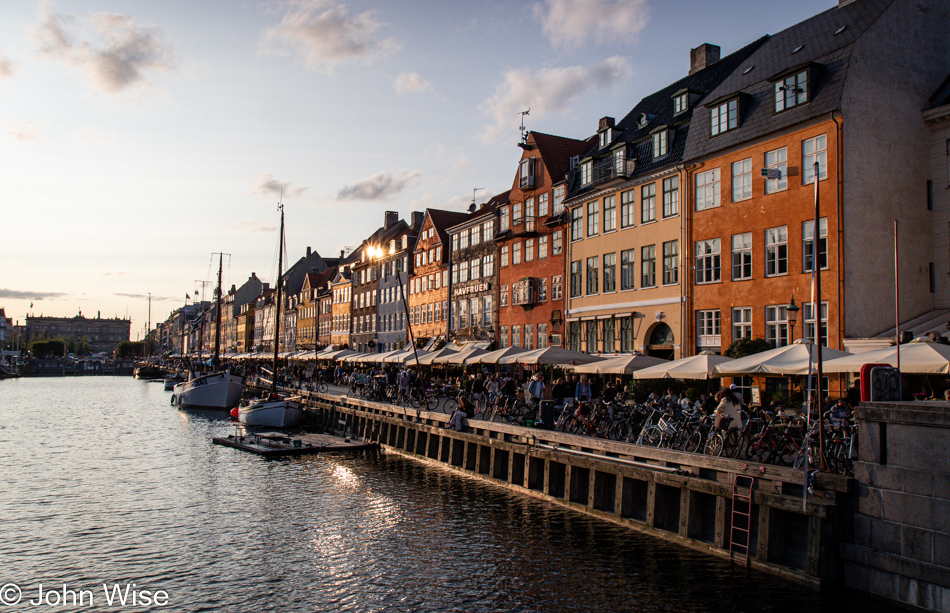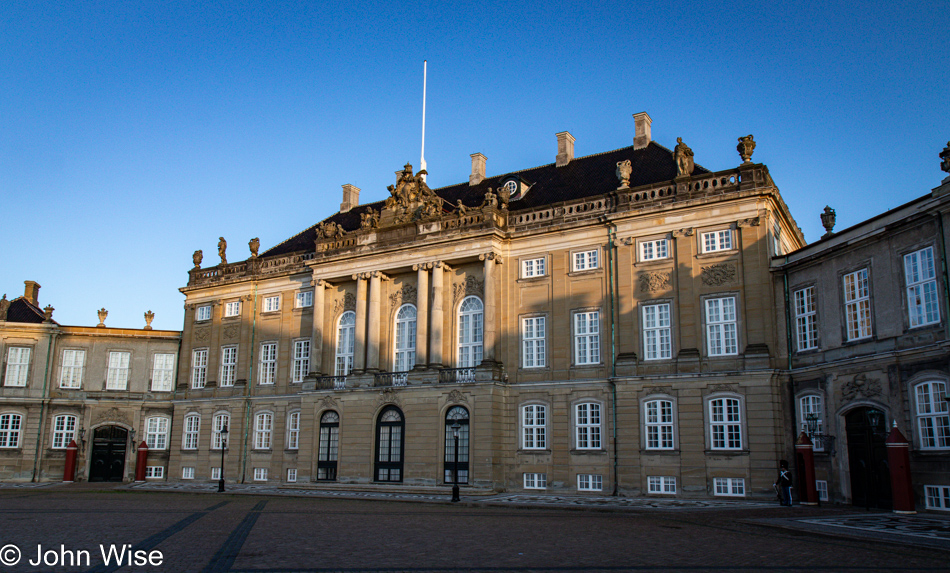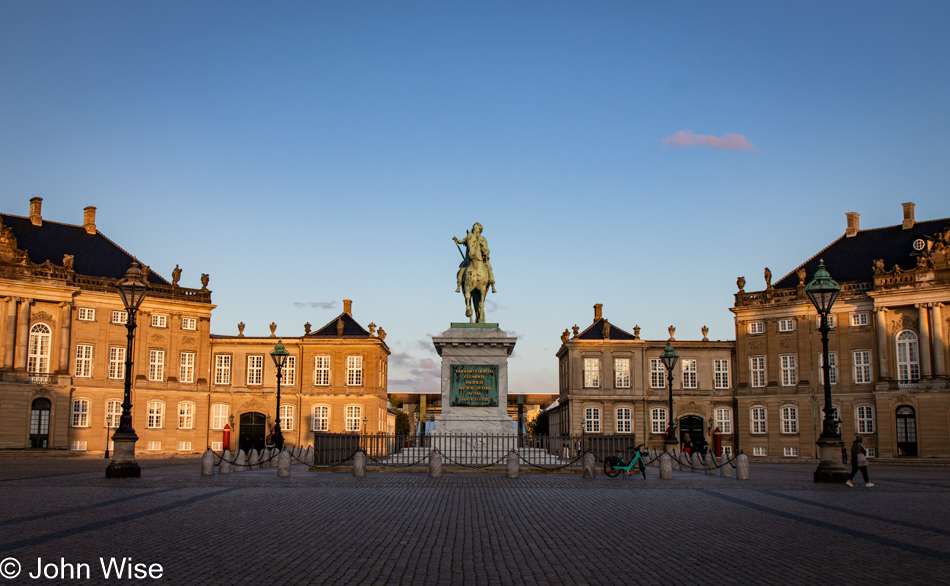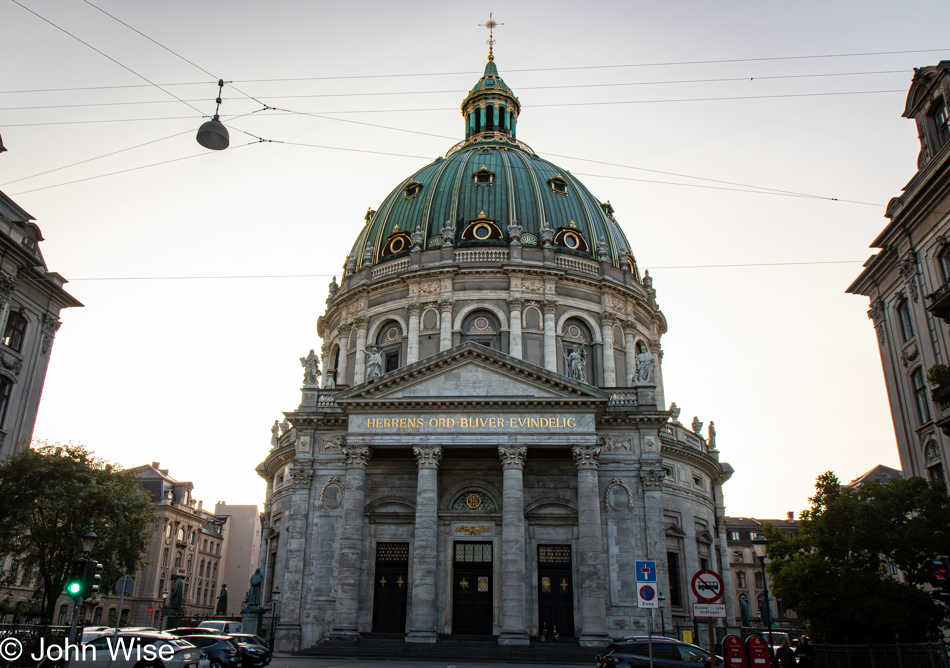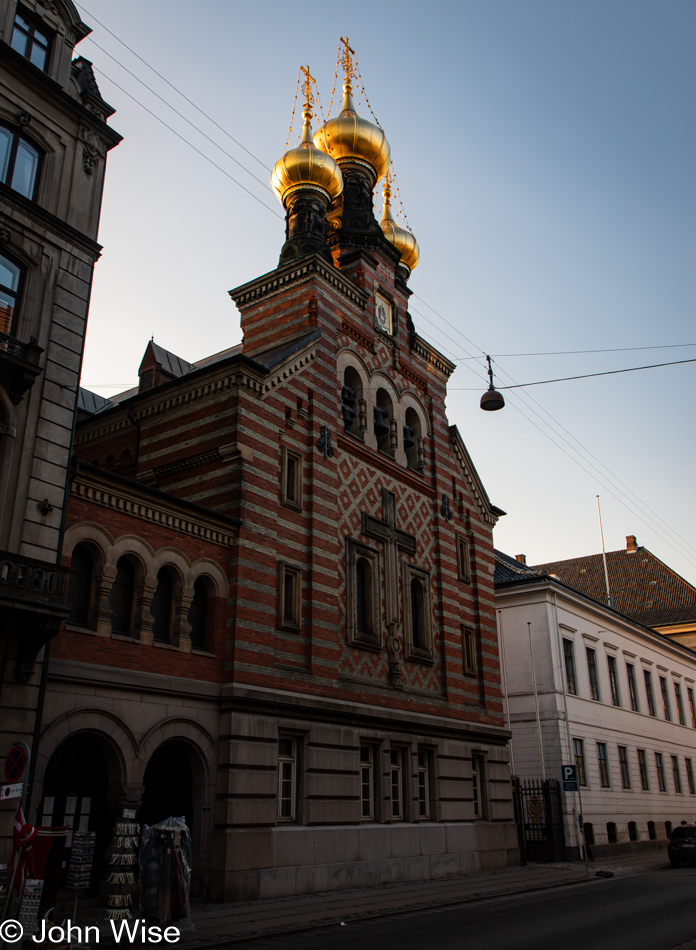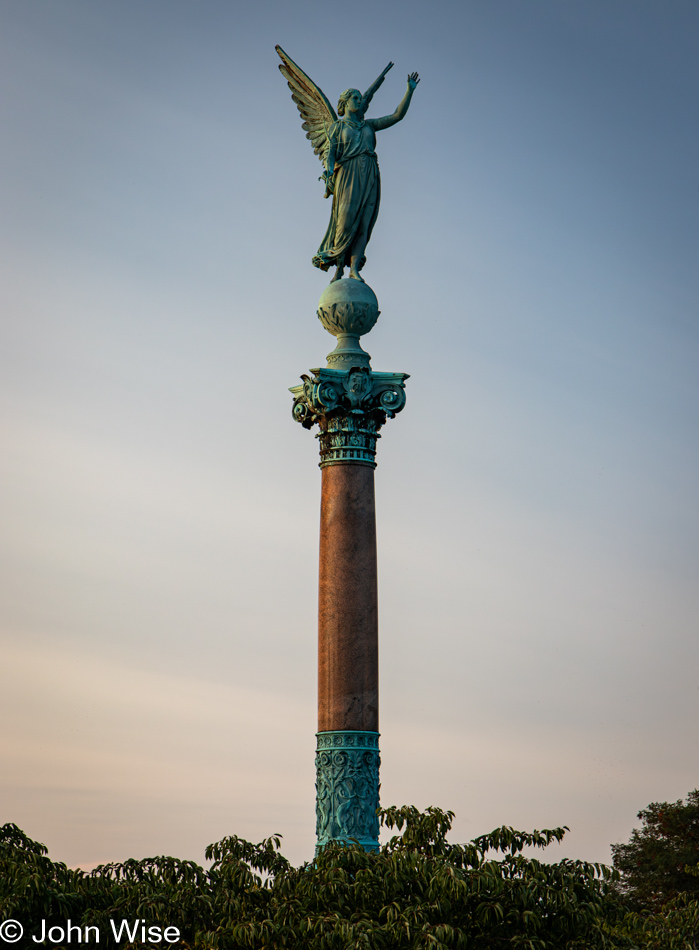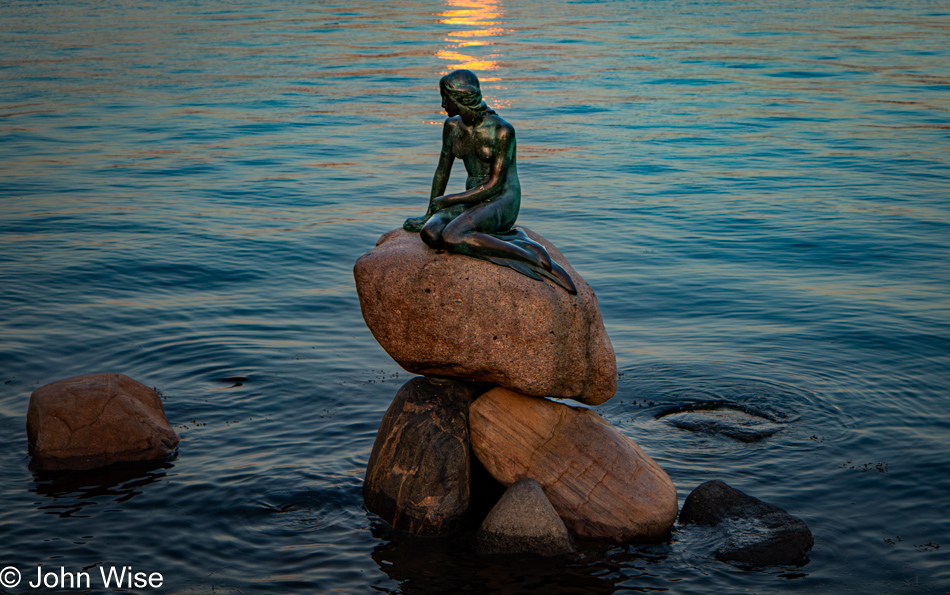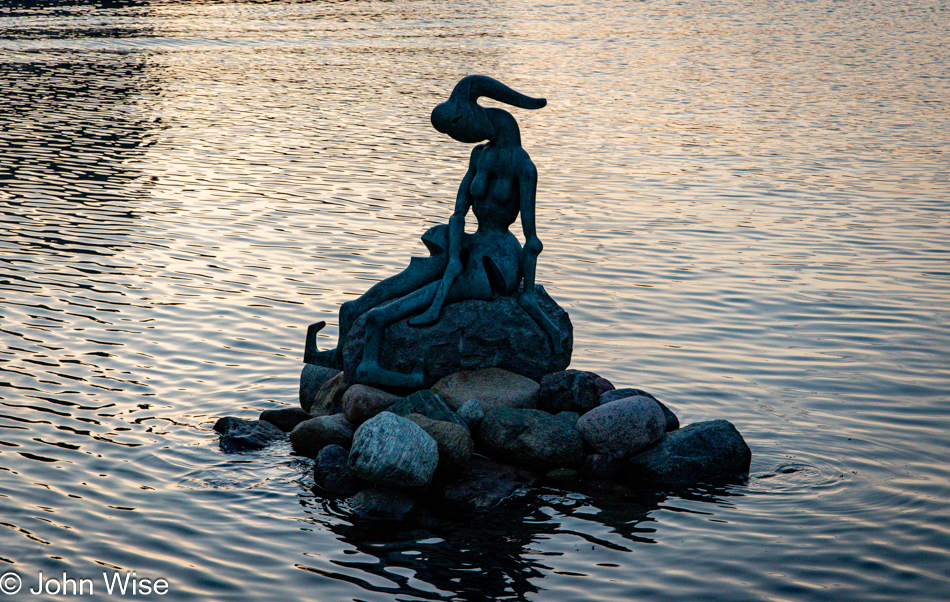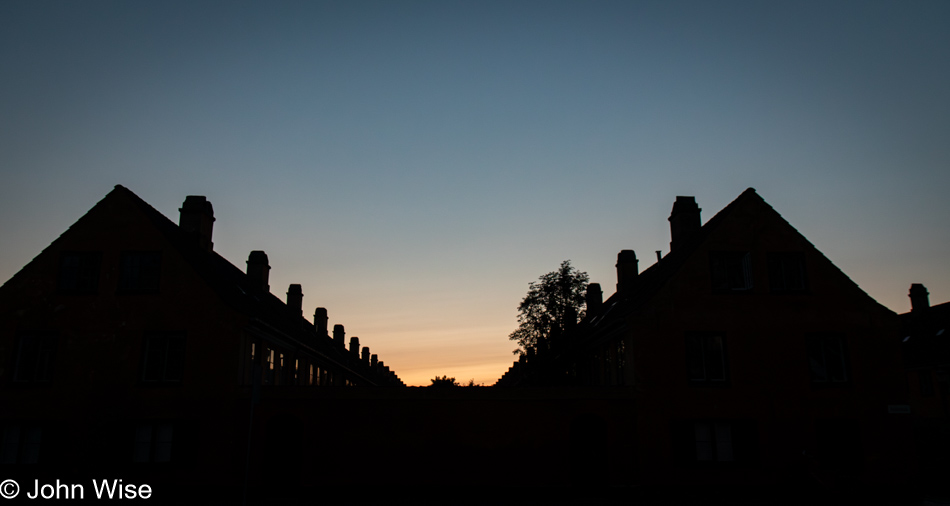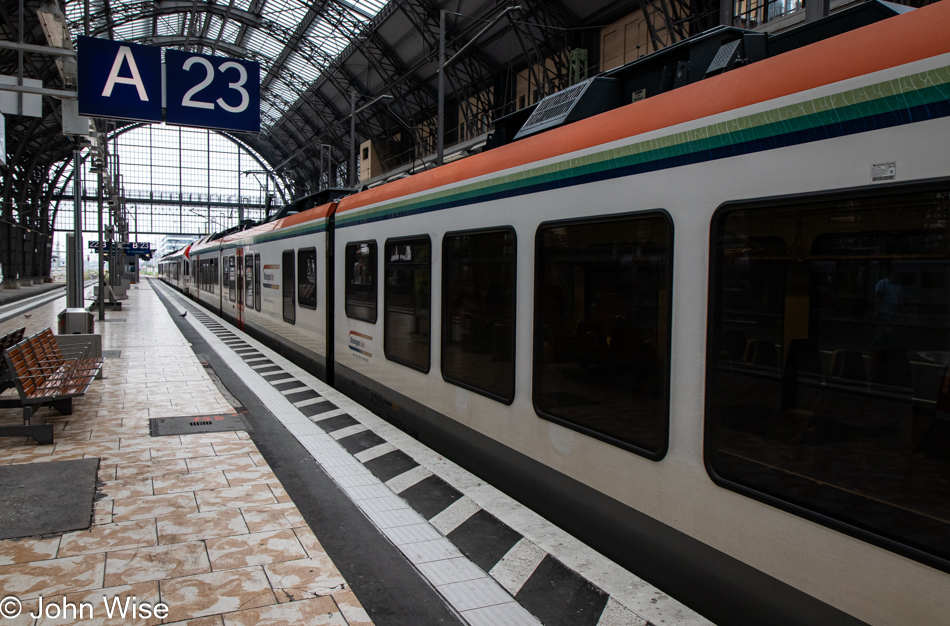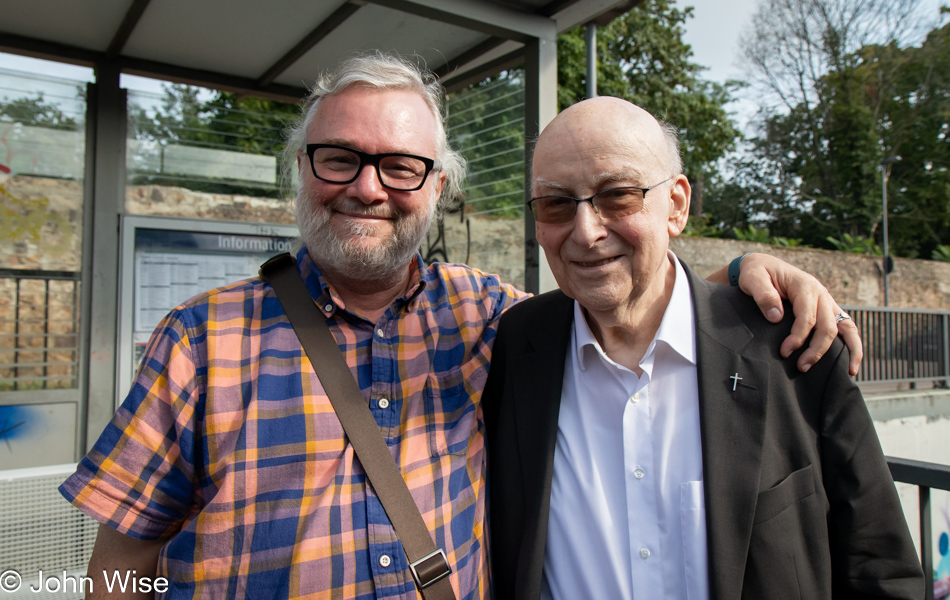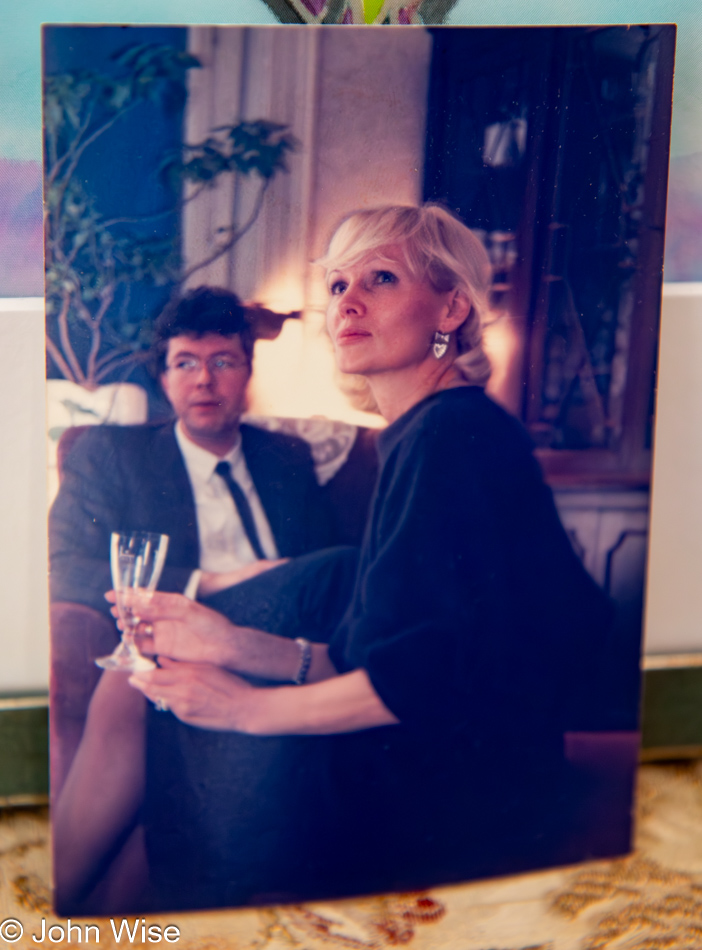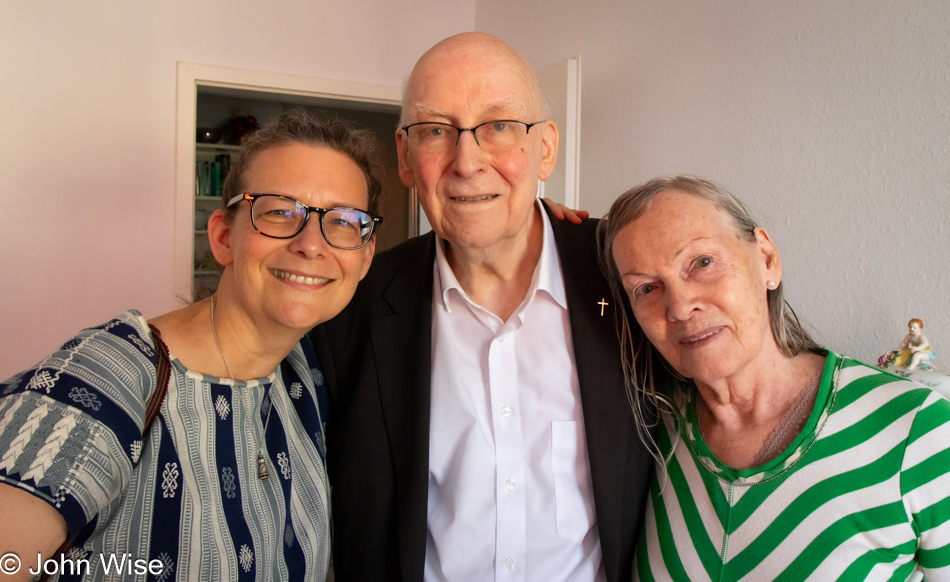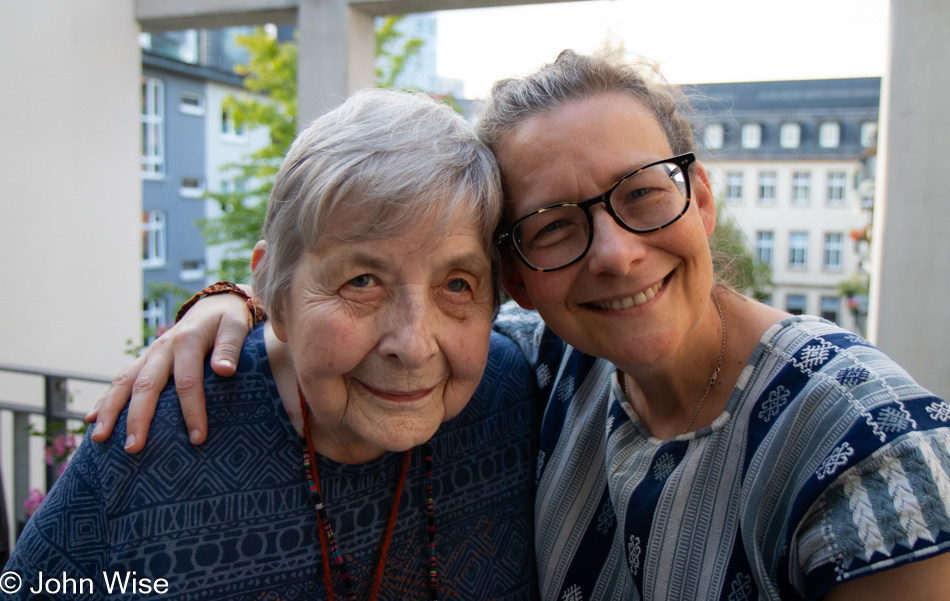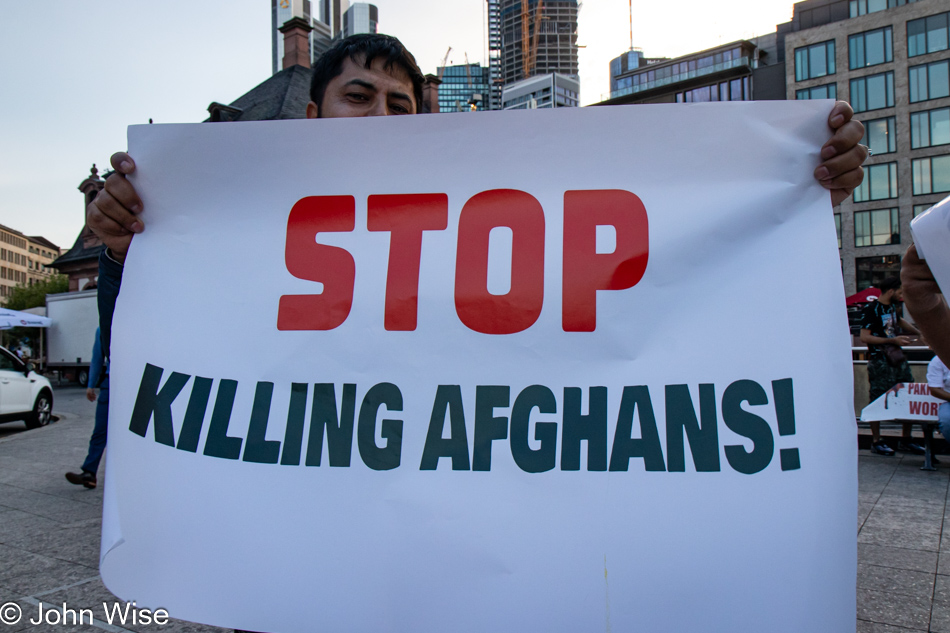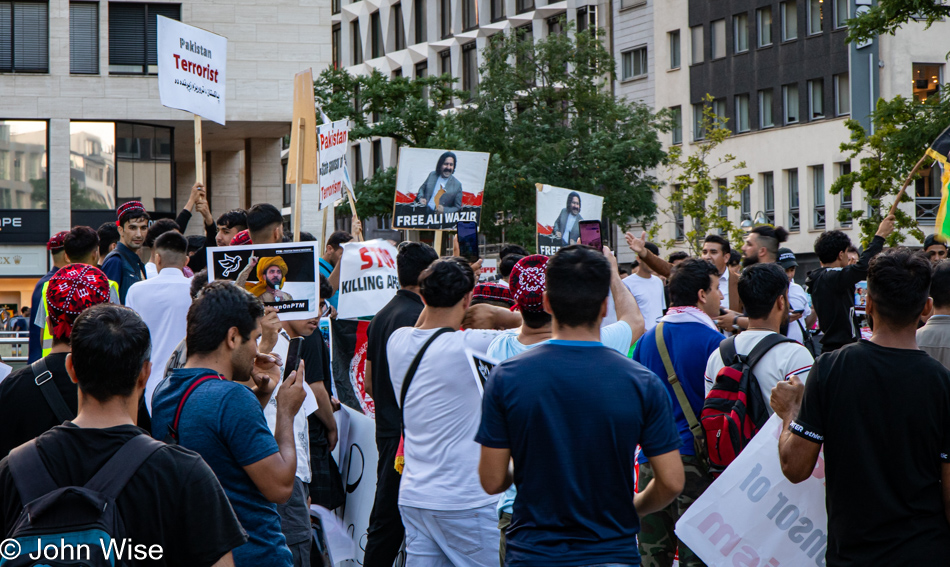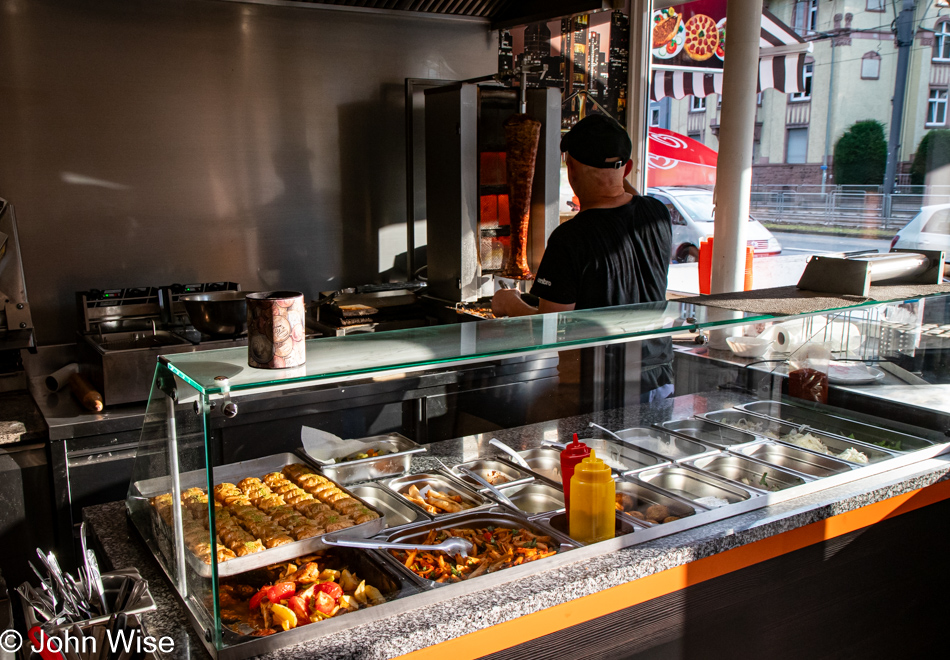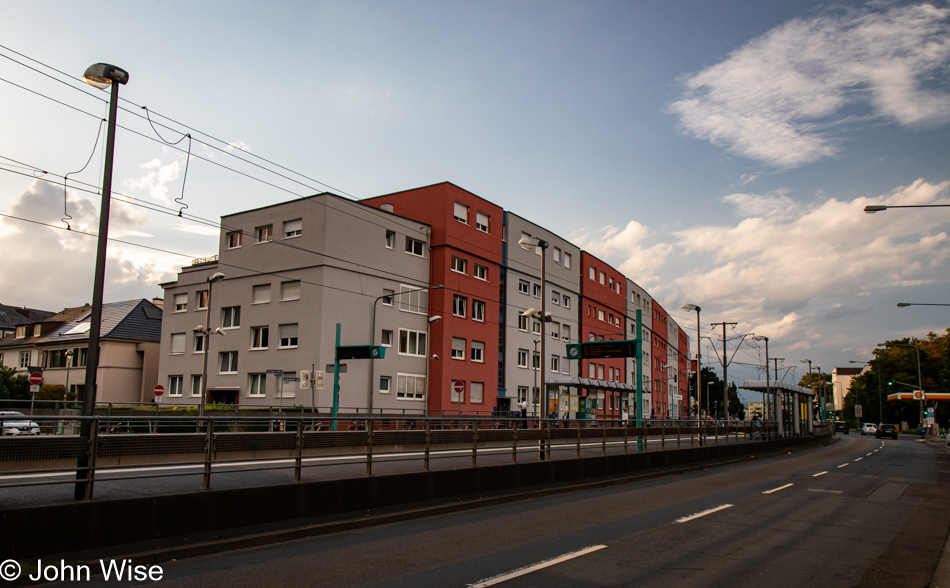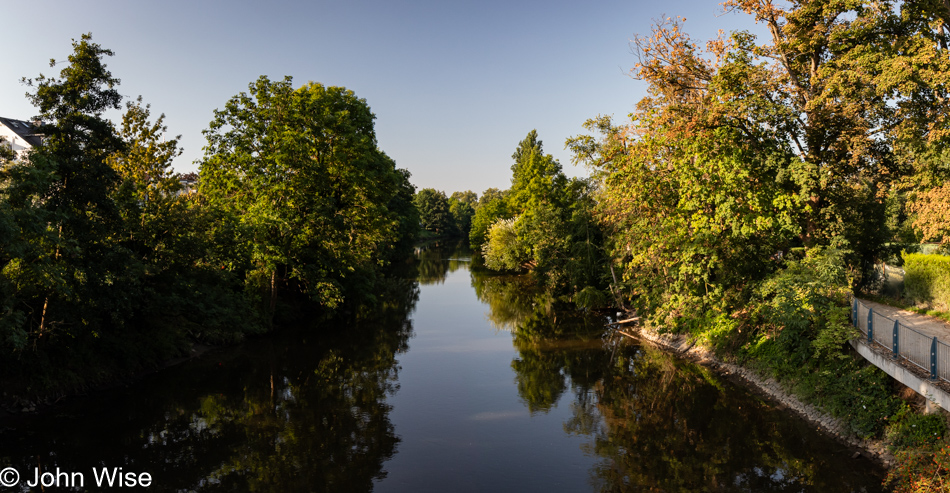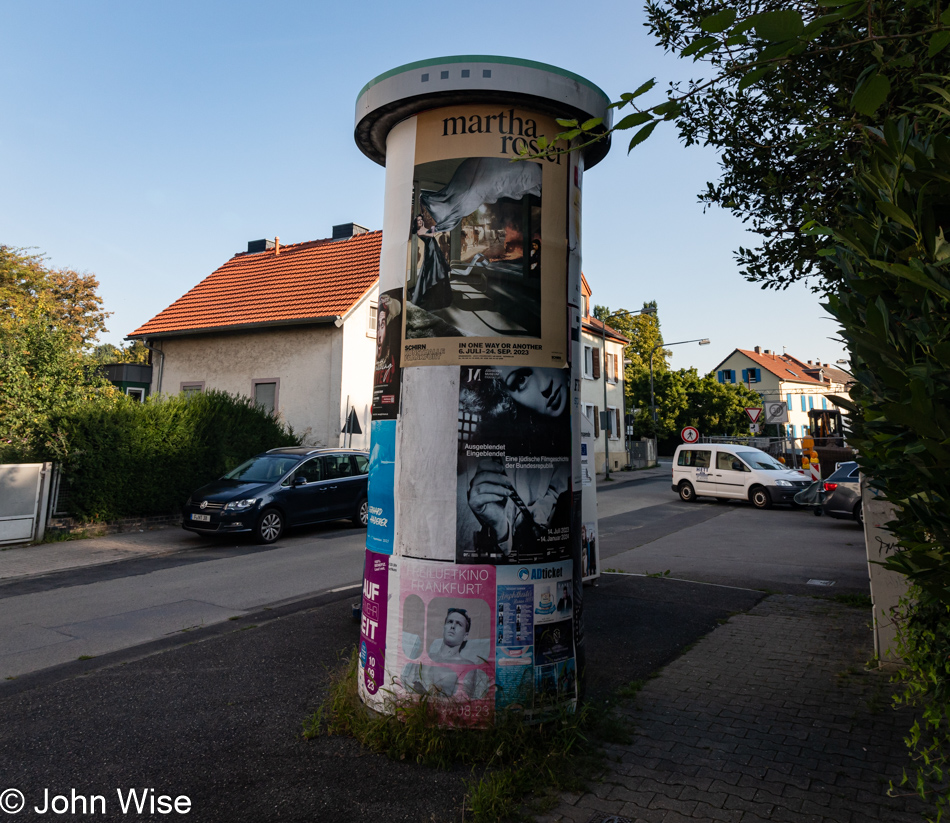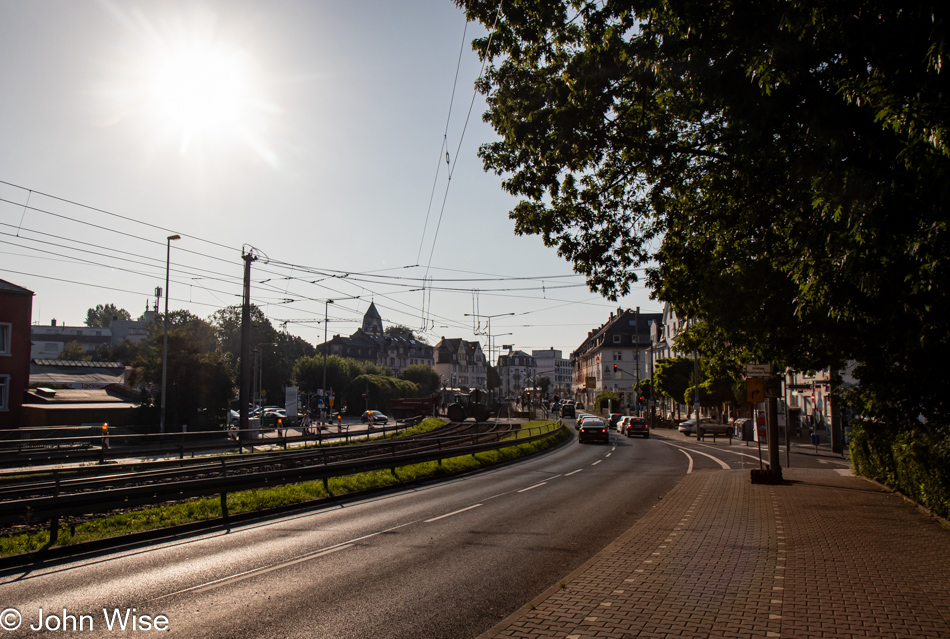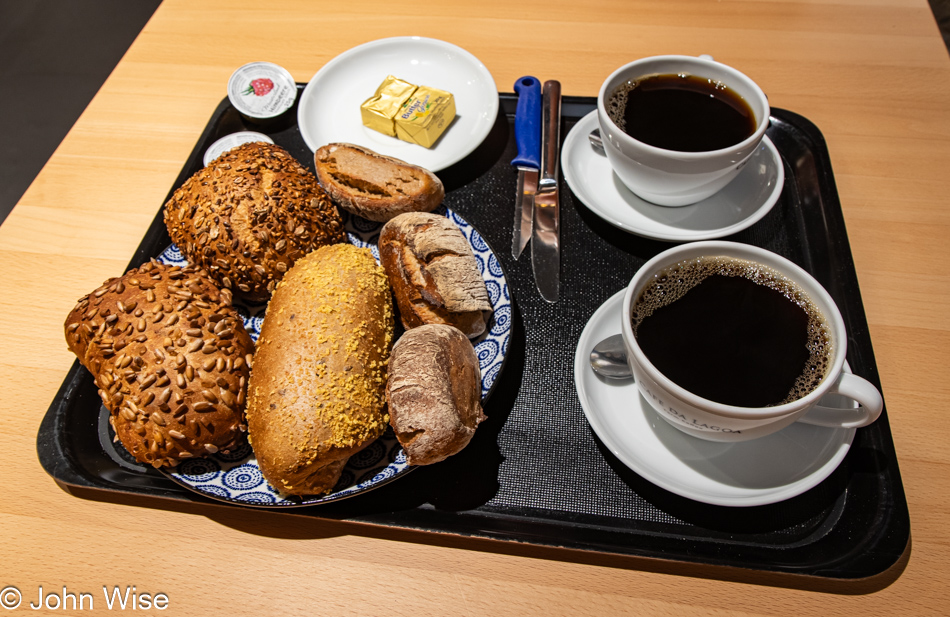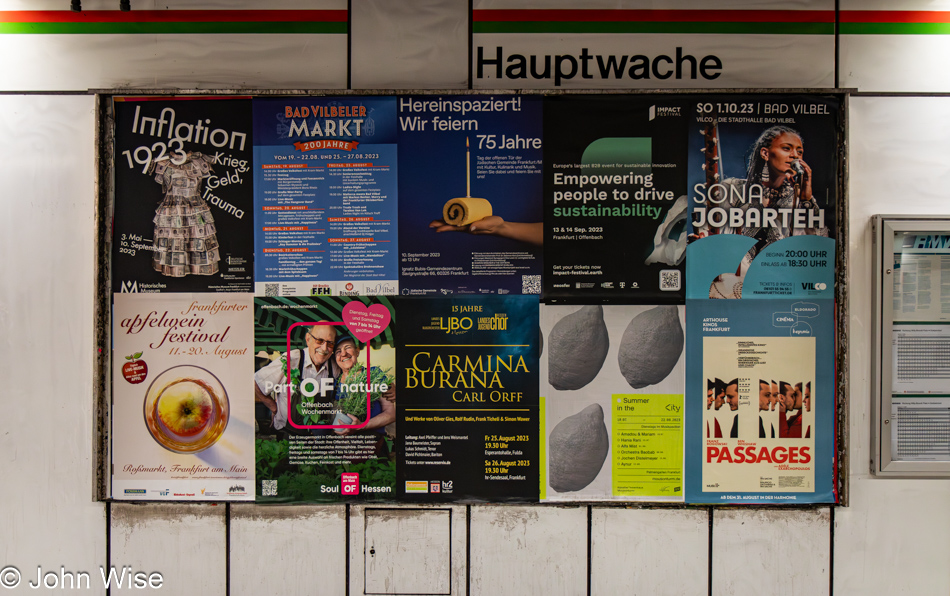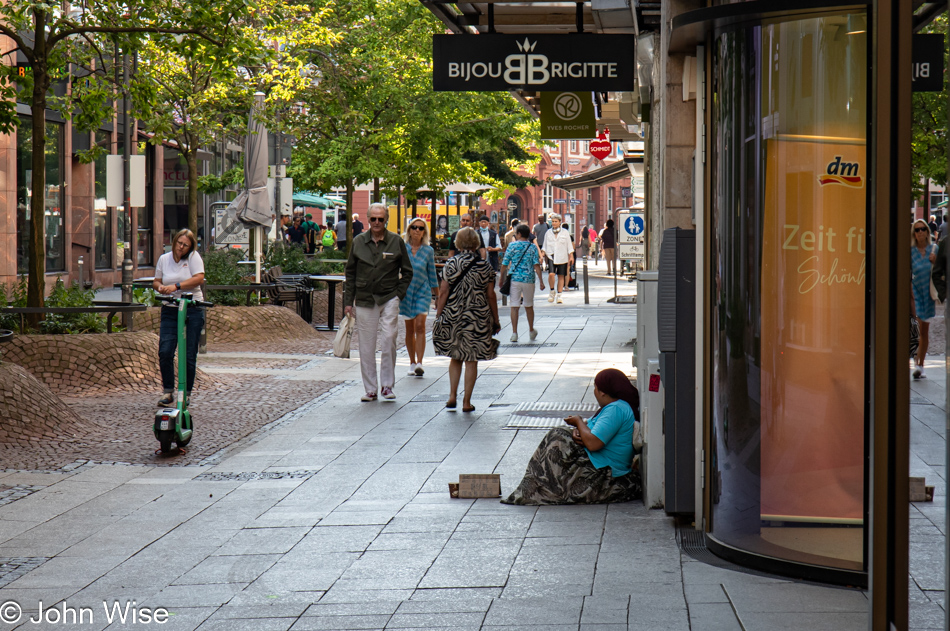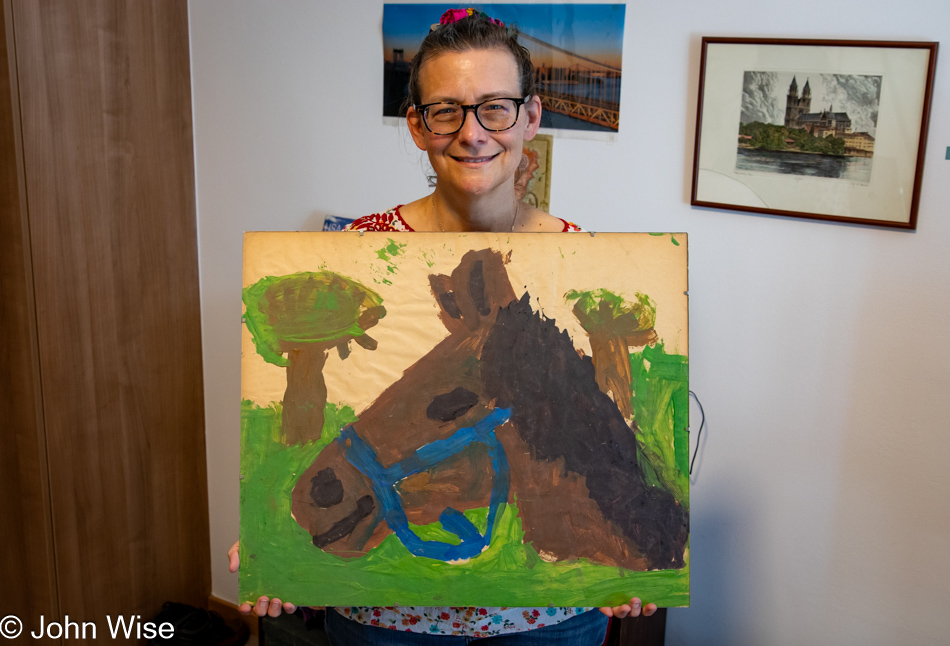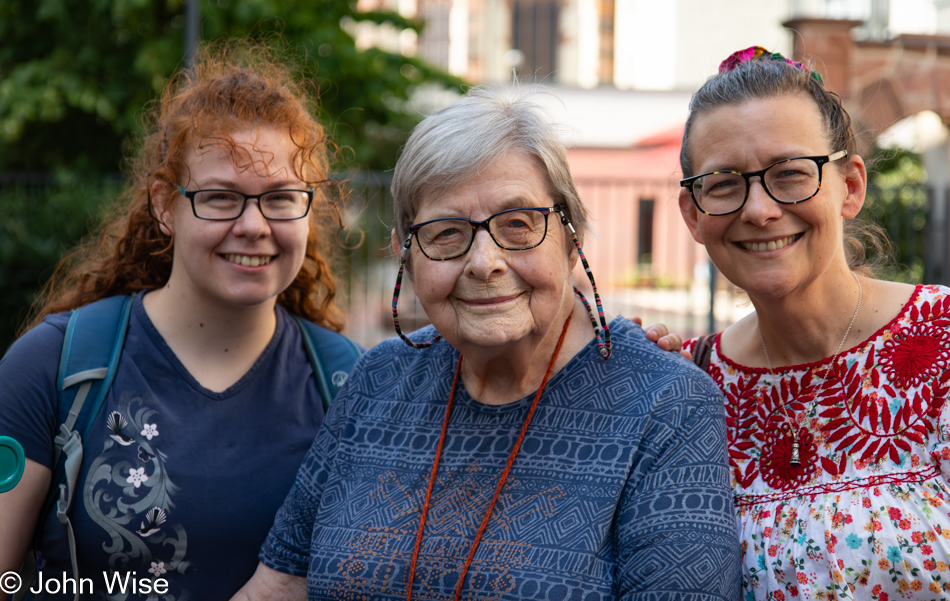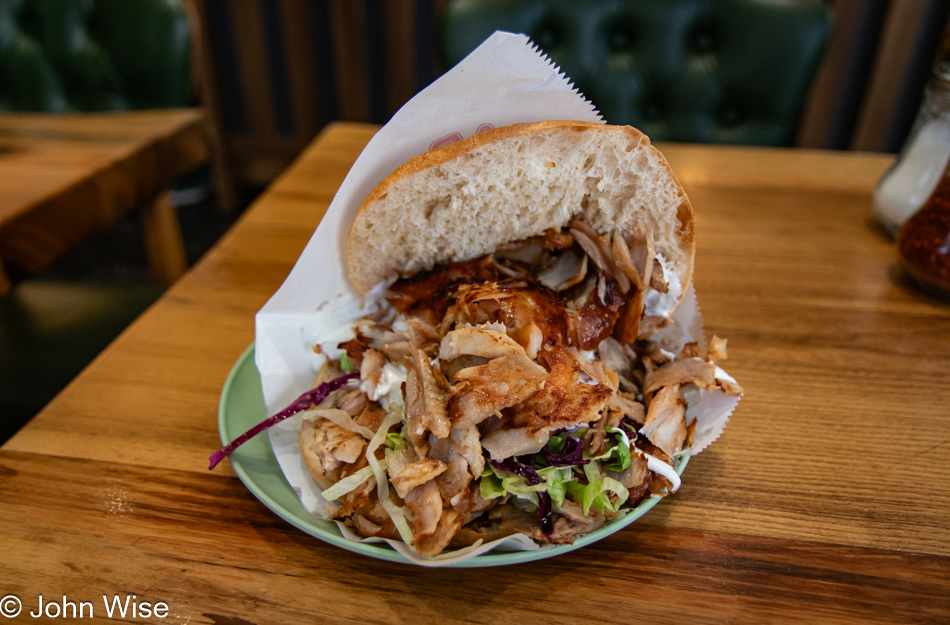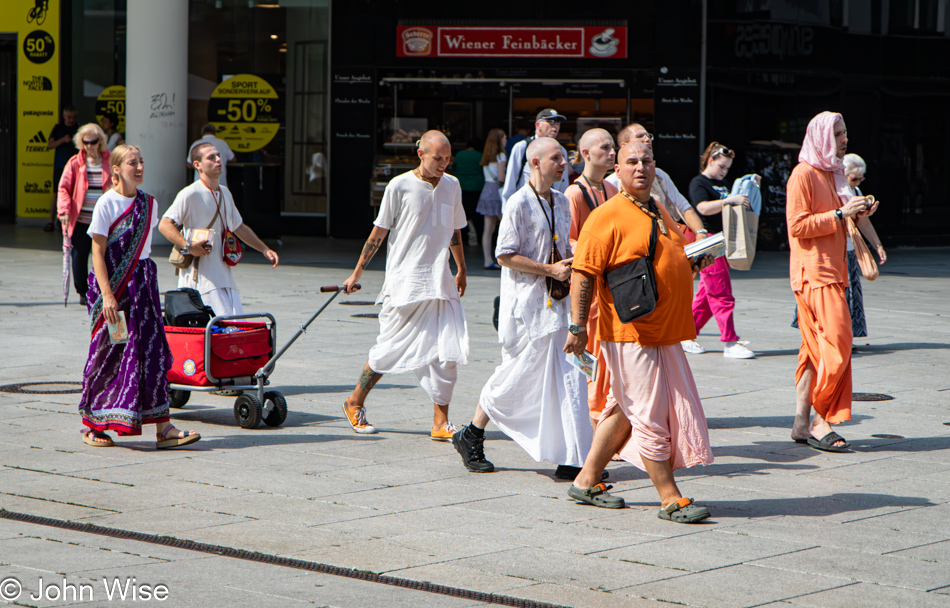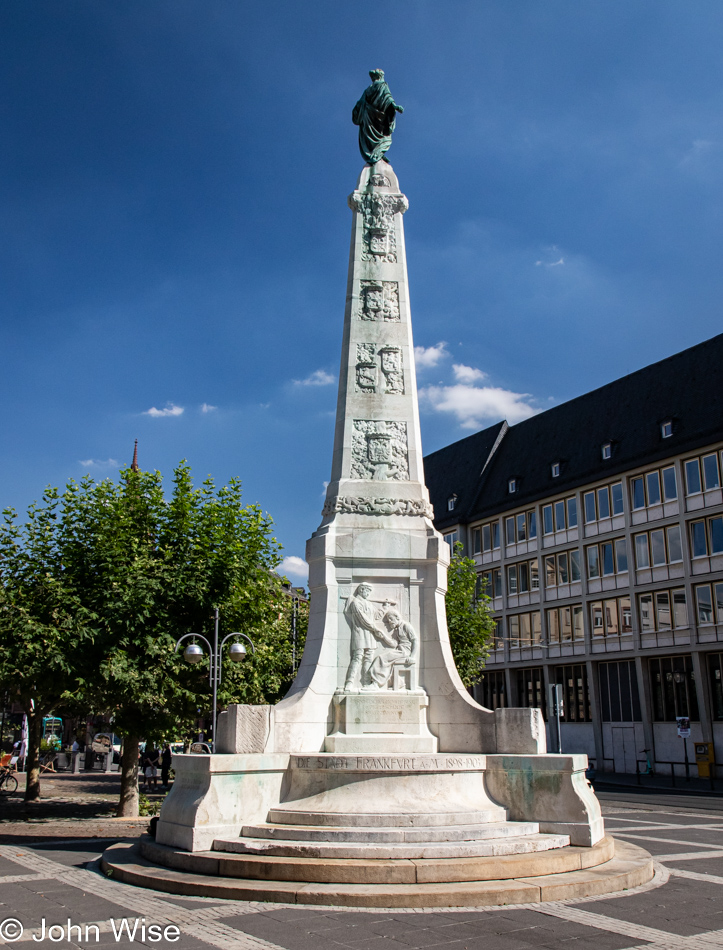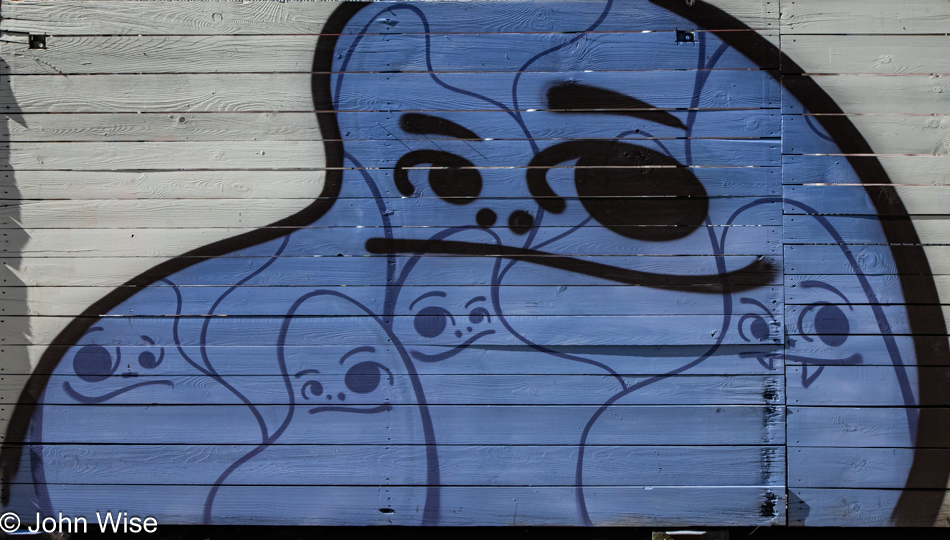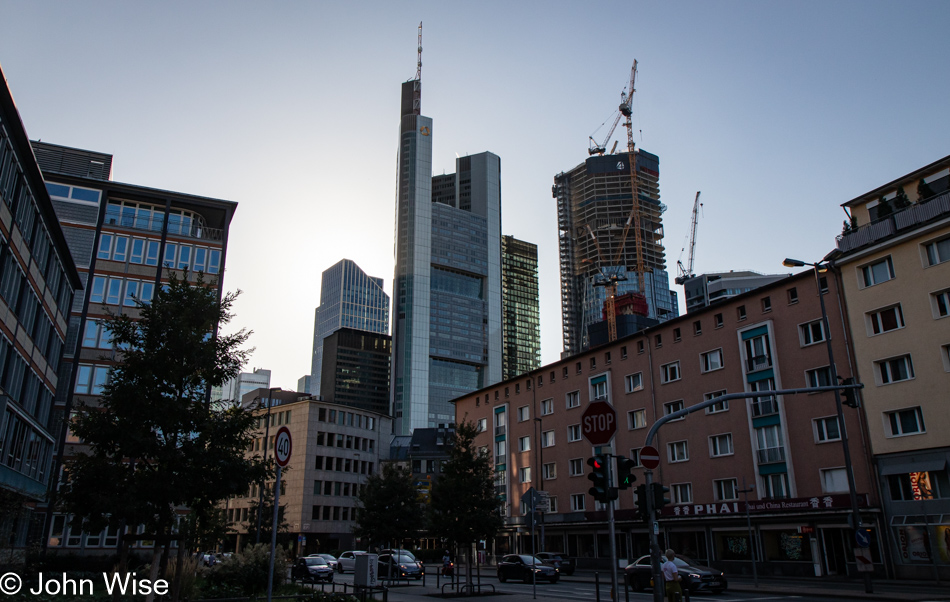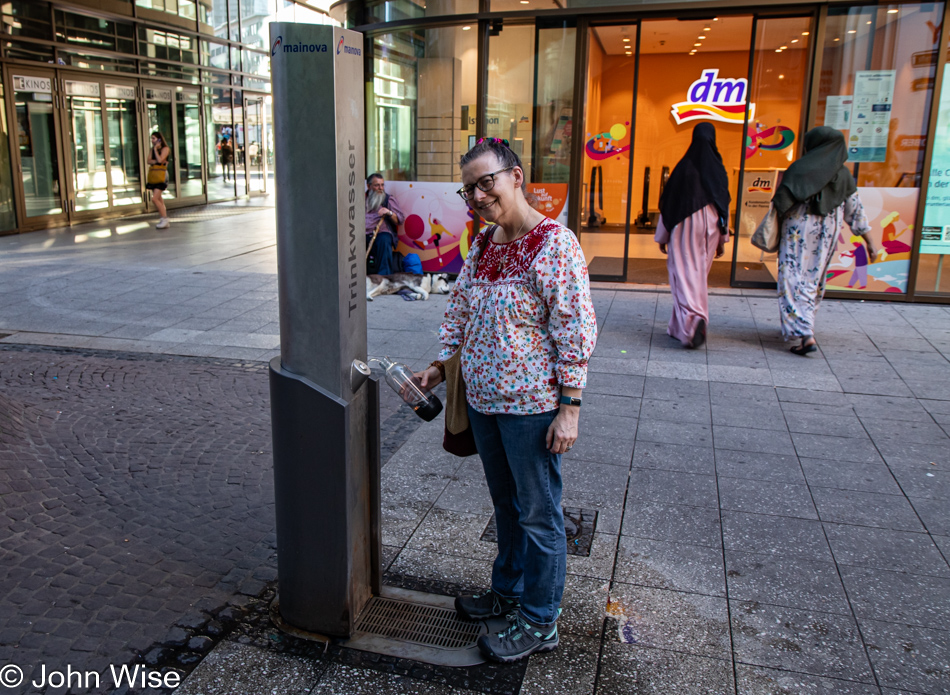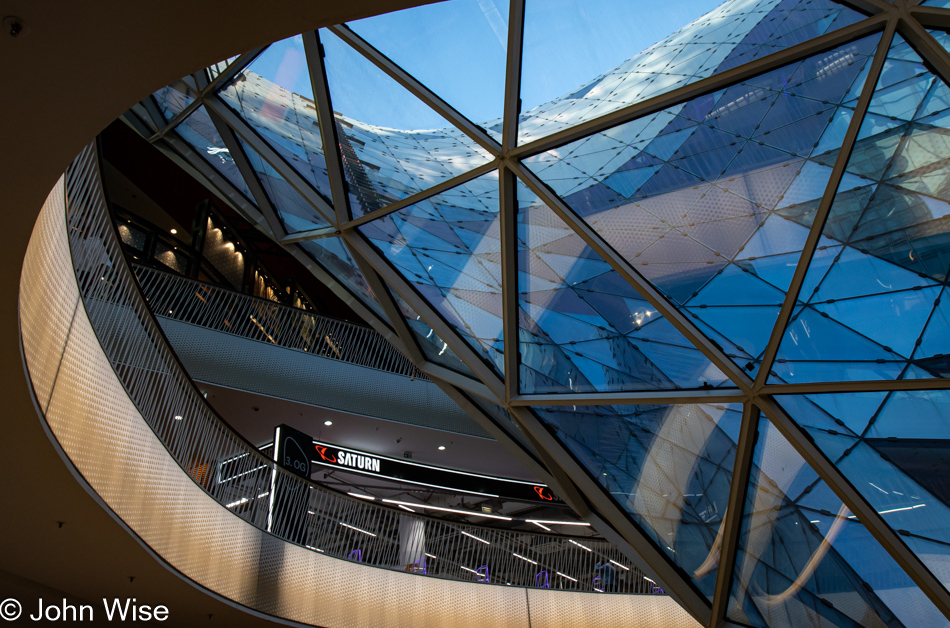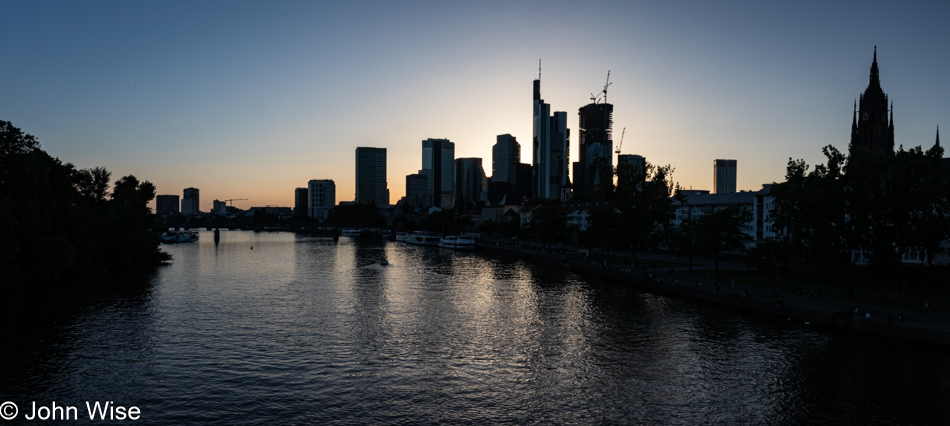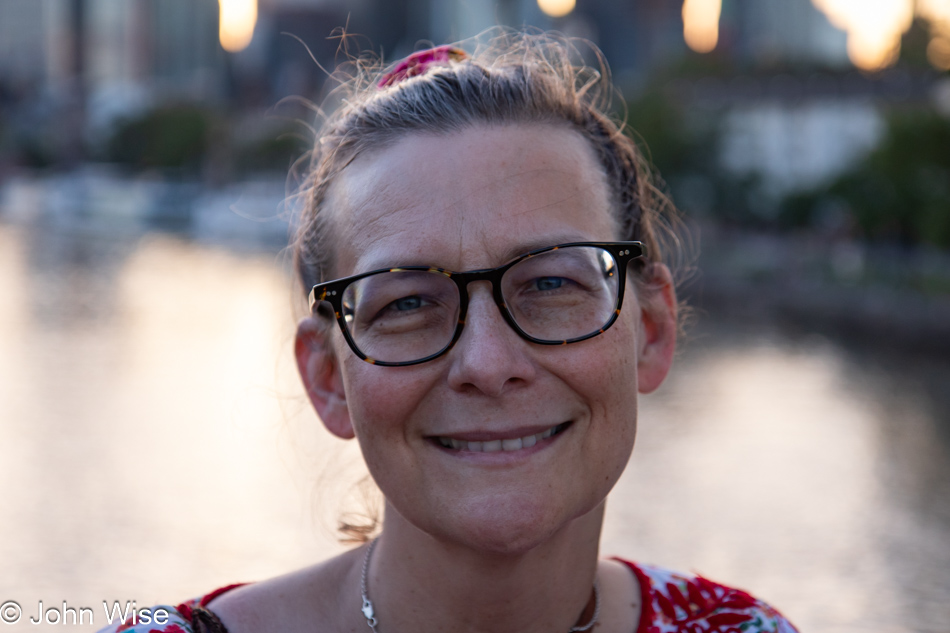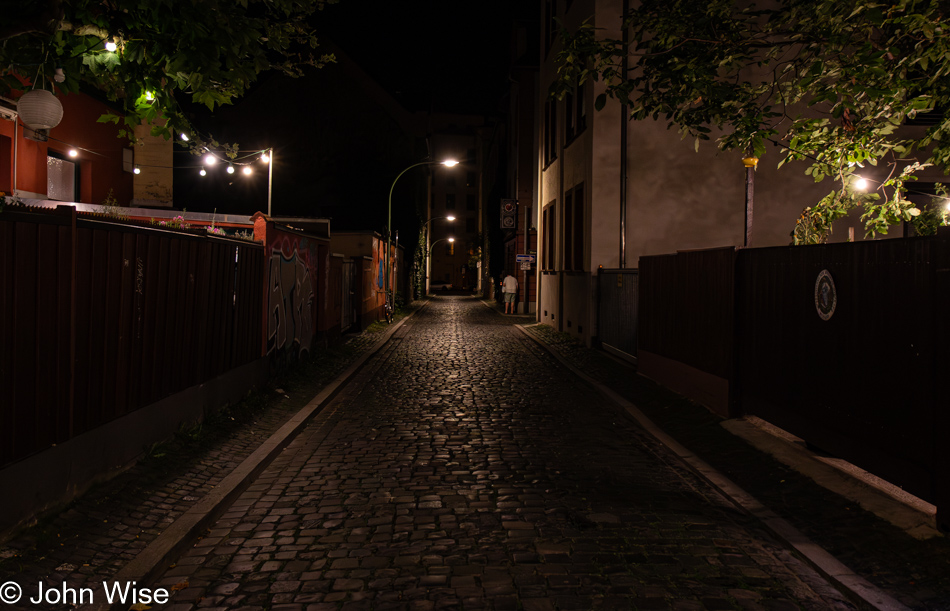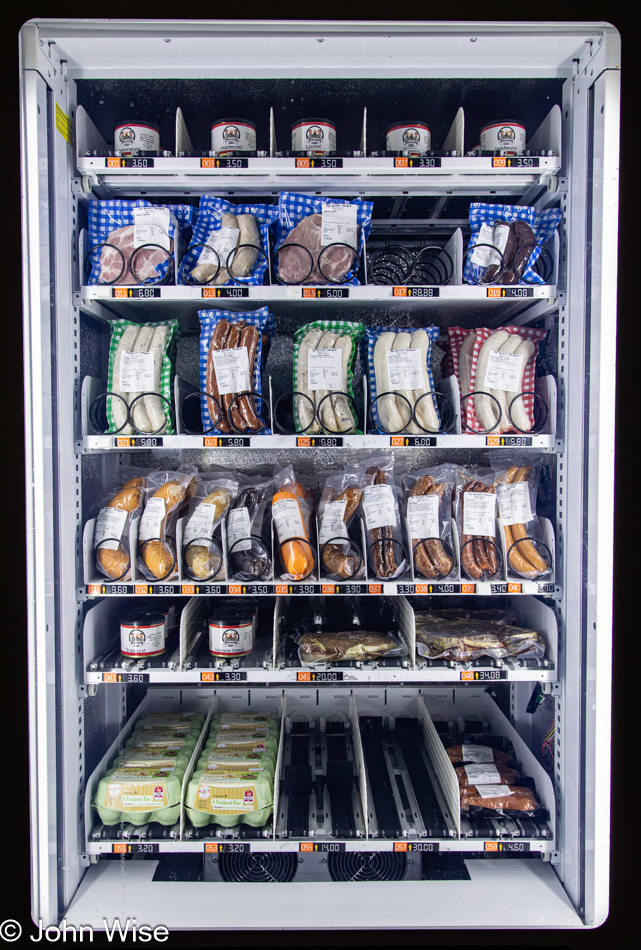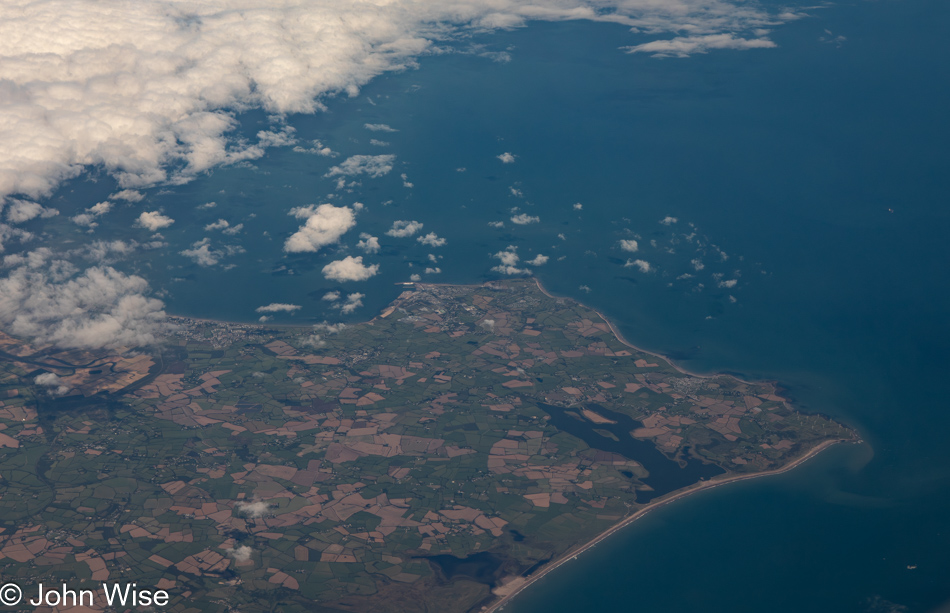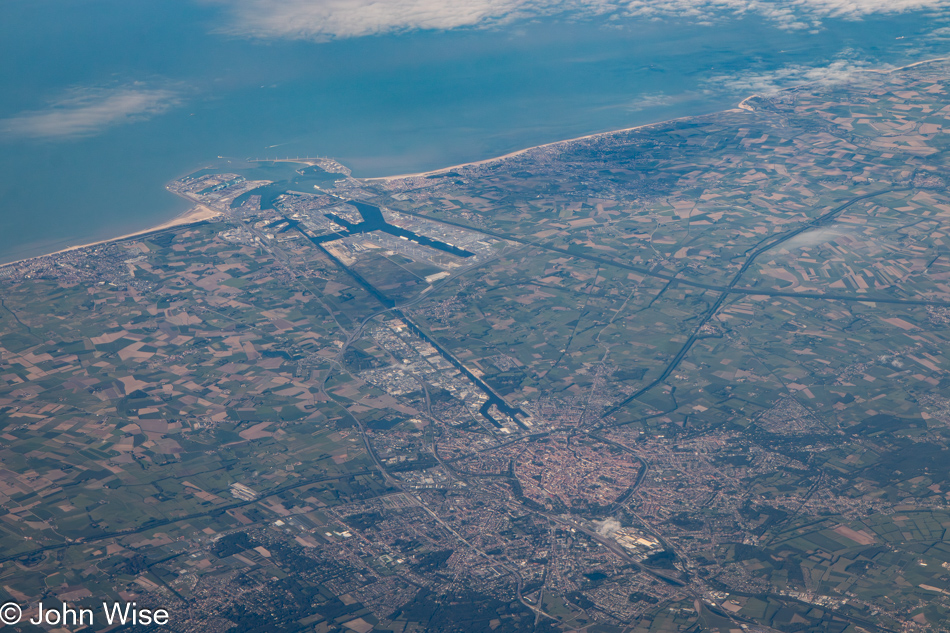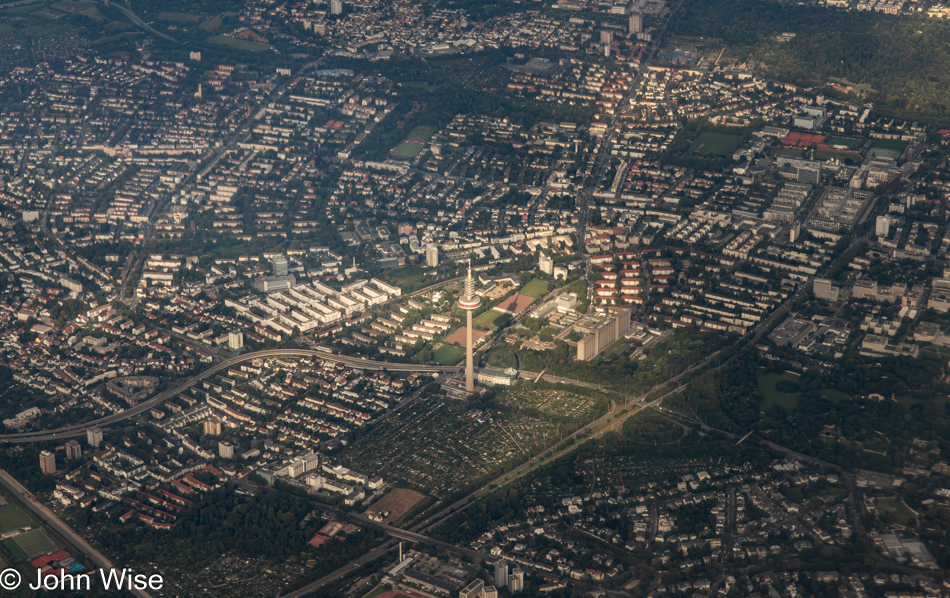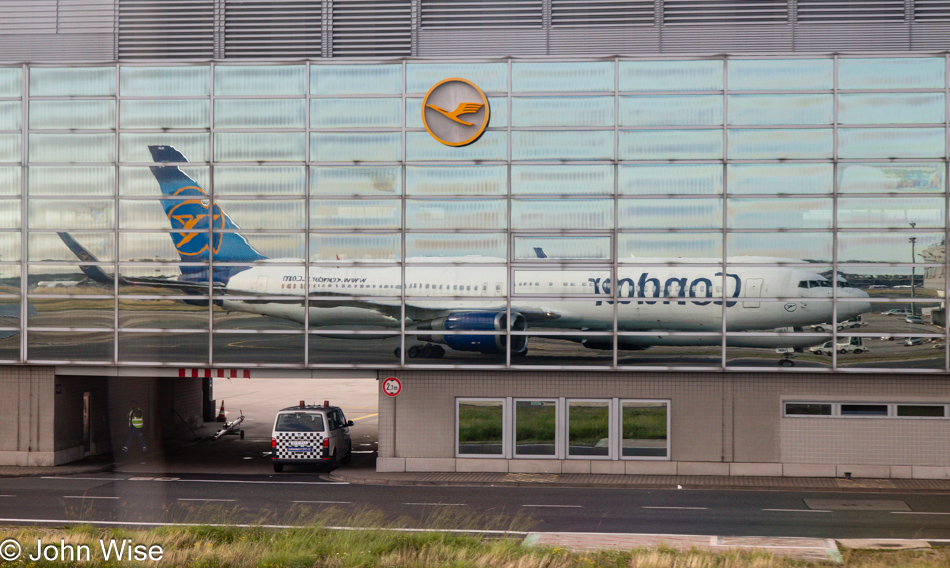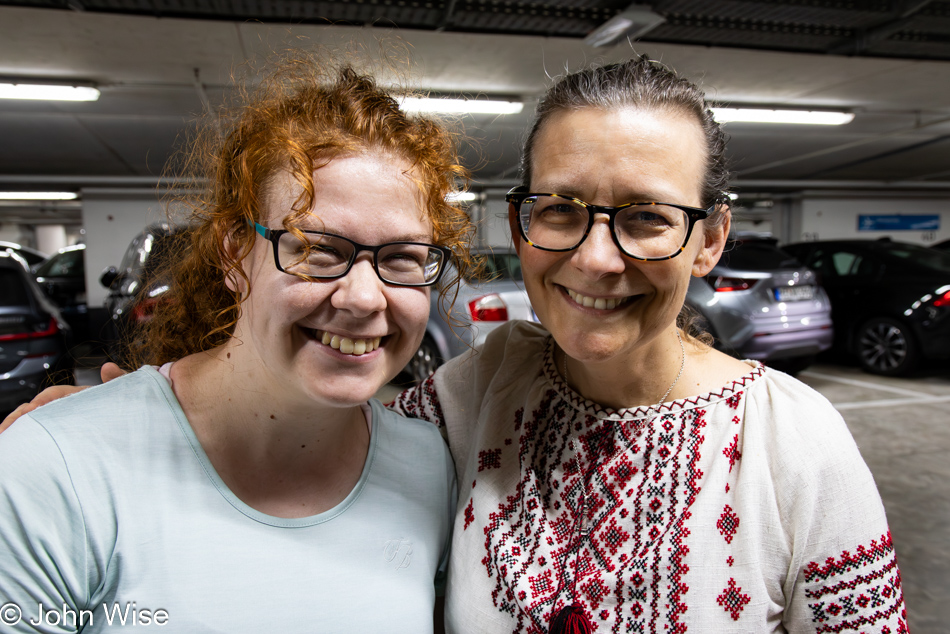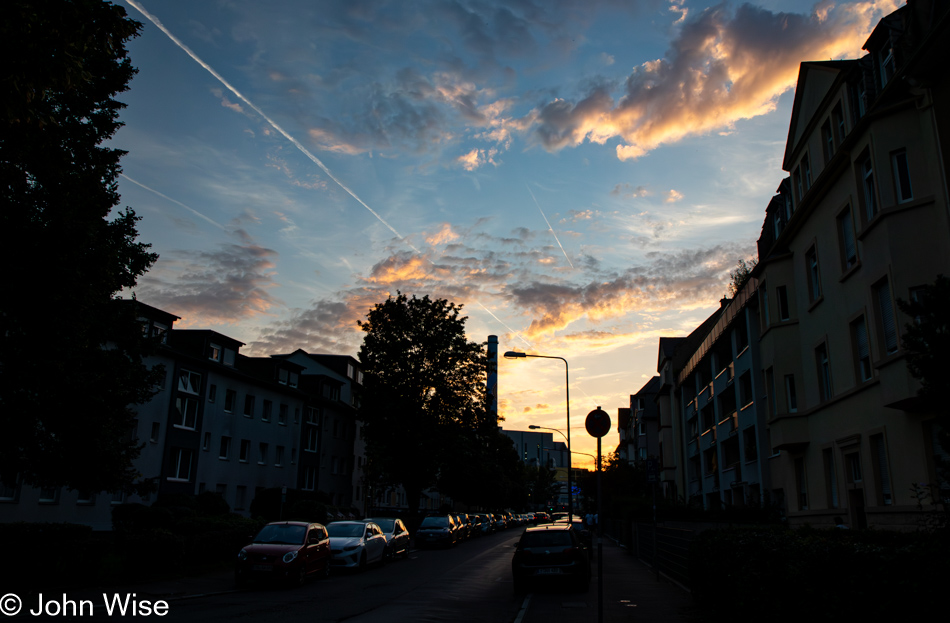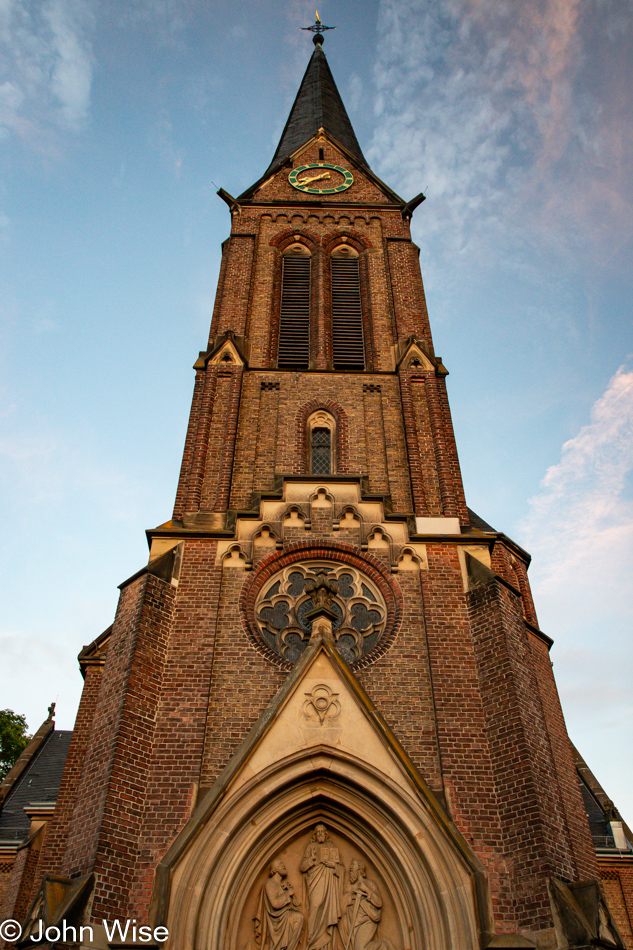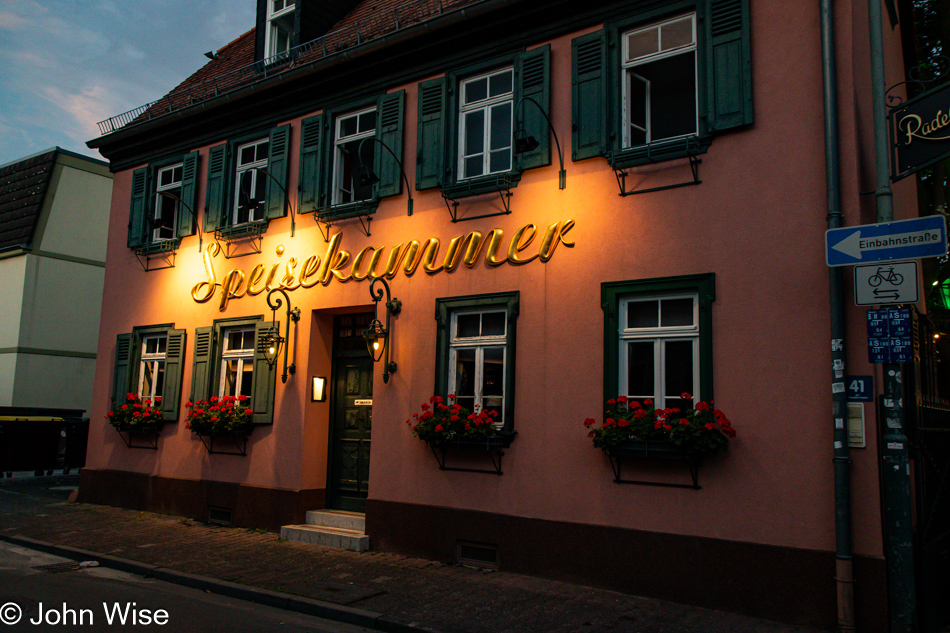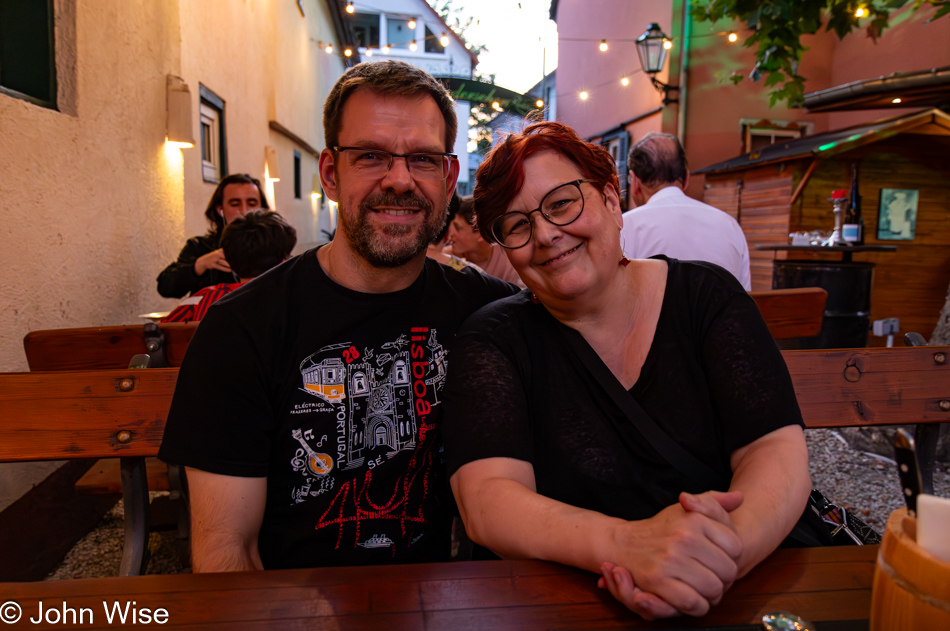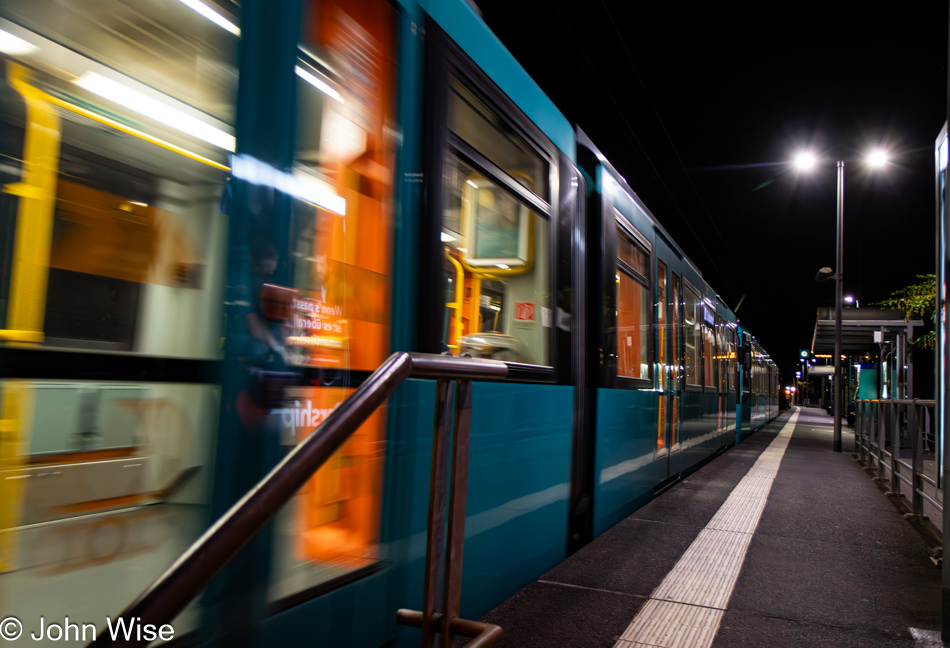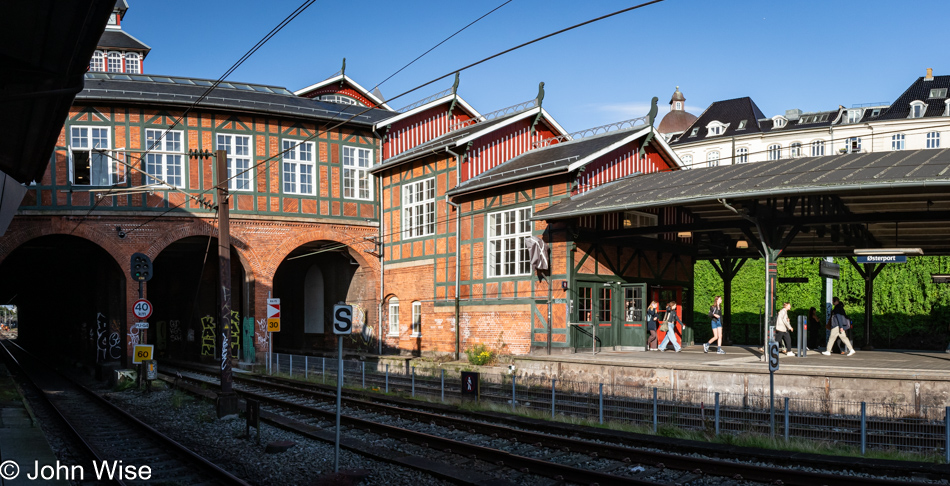
Taking the subway at Orientkaj nearly feels routine by now, except this morning, we experienced a slight snafu that left a look of shock on Caroline’s face. In Germany, when somebody wants to hold the door for someone else to jump on the train or bus, the door won’t shut if it senses pressure against it closing. Denmark doesn’t play that, and Caroline, who was already on the train, had to pull her hand out of harm’s way before I was able to catch up to her. In a second, she was starting to accelerate to the next station, but not before shooting me a look of astonishment on the verge of horror. I wasn’t worried because I knew that in five minutes, I’d be catching up to her at the next stop, where I was certain she’d be waiting. Sure enough, we reconnected and were soon at Osterport to catch our 45-minute ride out to Roskilde, Denmark.
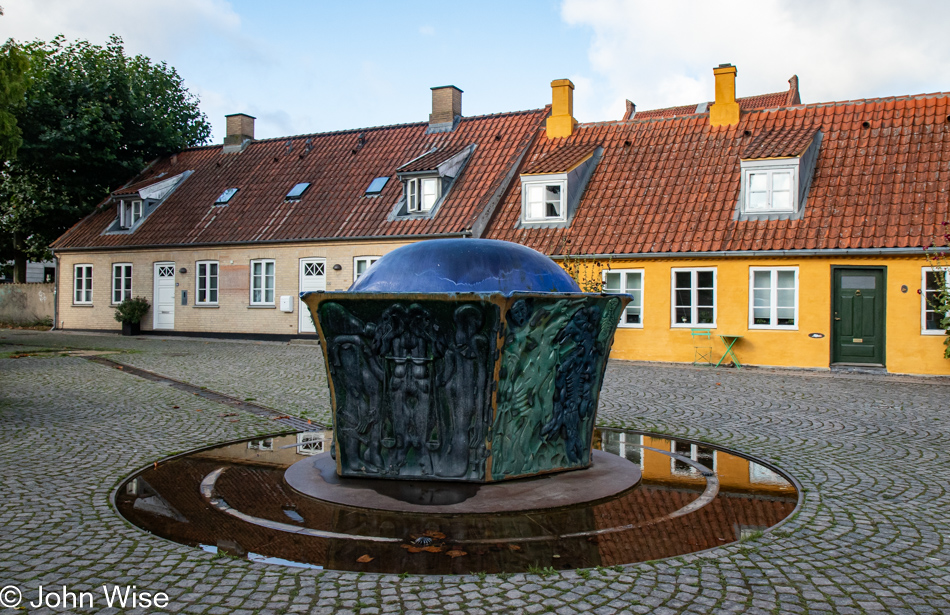
We stormed the coast, plundered, and were generally rude in the mayhem we spread upon our arrival because what else should one do when landing in a historic city that played an important role for the Vikings? The lives lost today due to our raid of the village were simply the cost of us adopting our new roles. Had Copenhagen not been suffering from overpopulation and a dearth of farmland, Caroline and I might have been able to make it there, but instead, we felt we had no other choice than to flee to the countryside and burn the abbey to demonstrate to the locals we meant business.
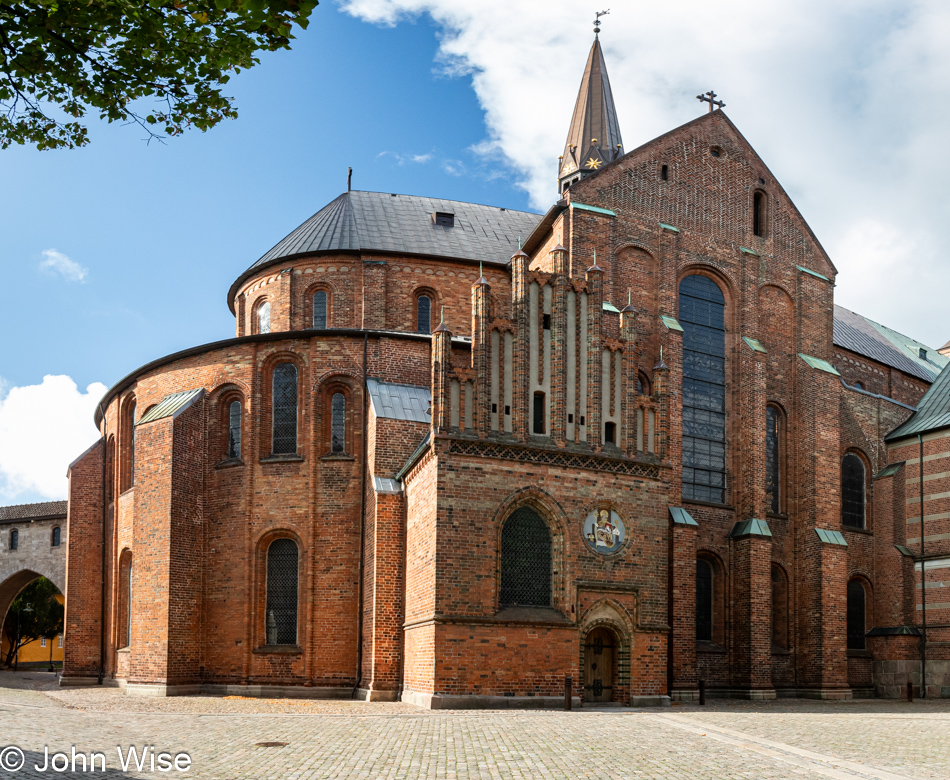
We should have, at this point, stopped in the cathedral to beg forgiveness (for such fabulous lies), but the doors were locked, so we decided to just hang around nearby, get some boating in, find a decent place for smørrebrød, and then return here to commune with the ancestors, even if they are not our own.
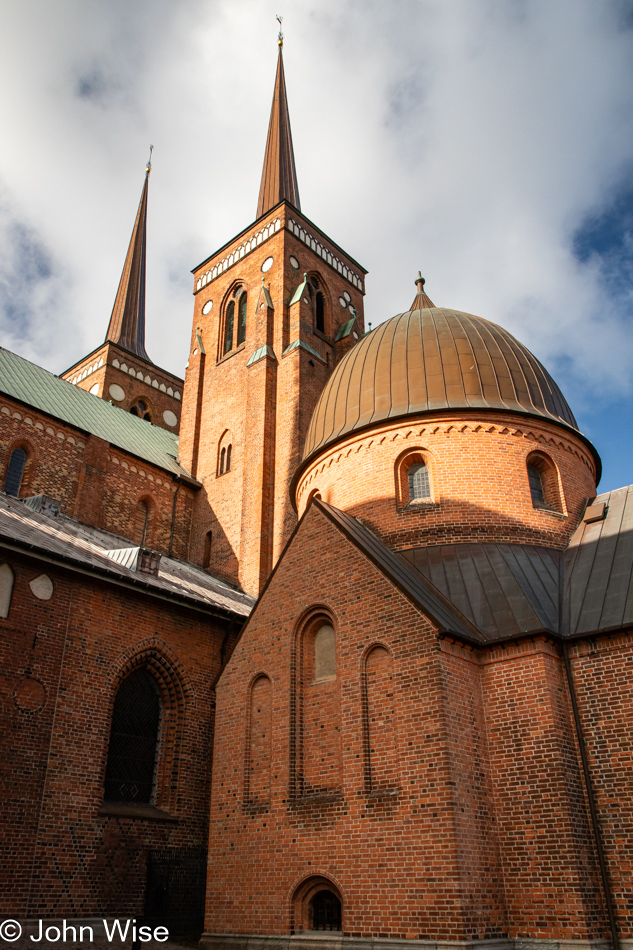
Early tech pioneer and trendsetter King Harald Bluetooth, son of Gorm the Old, founded Roskilde back in the 980s, and I don’t mean as found on some AM radio frequencies either. Seriously, the founding of Roskilde is attributed to Harald Bluetooth, the namesake of the wireless protocol. Construction of the Roskilde Cathedral was initiated by Absalon in the 12th century on top of the church that previously stood there. This is the same Absalon who moved on to build a castle where Christiansborg Palace stands today and who is considered by some the founder of Copenhagen. Unironically, I must admit feeling a sense of tragedy that we failed to utilize a Bluetooth device while in town.
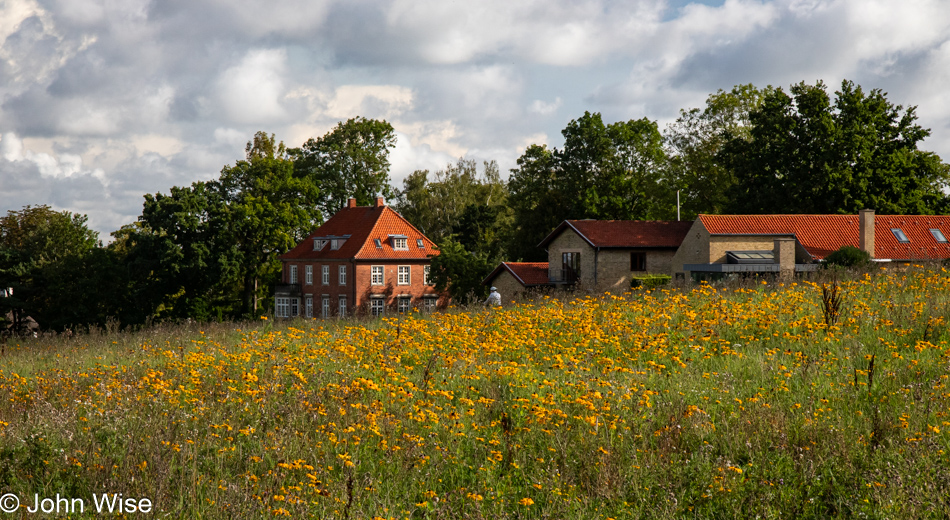
The human-based navigation system I’m traveling with is the Caroline Model 55, and it’s telling us that this is the right way to our destination at the harbor, but first, we must navigate this sea of flowers.
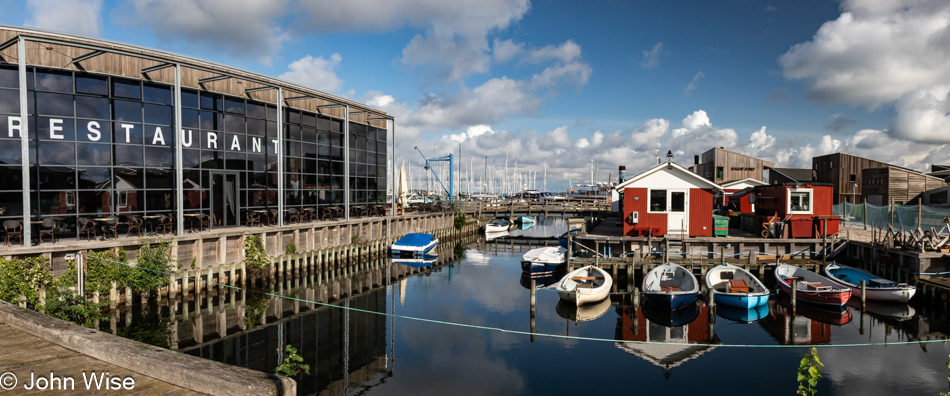
While planning our Scandinavian adventure, one wish of my wife’s was that we would stop in Oslo, Norway, to visit the Viking Ship Museum, where the best preserved Viking boat is kept. The Oseberg Ship was found in a burial mound, and based on the photos, it’s an amazing find. But we’ll not be visiting it on this trip because the museum is under renovation and will remain closed until 2026. Nothing would make up for that, so instead, I looked for something fun that still had to do with Vikings, and that’s when I found the Viking Ship Museum of Roskilde.
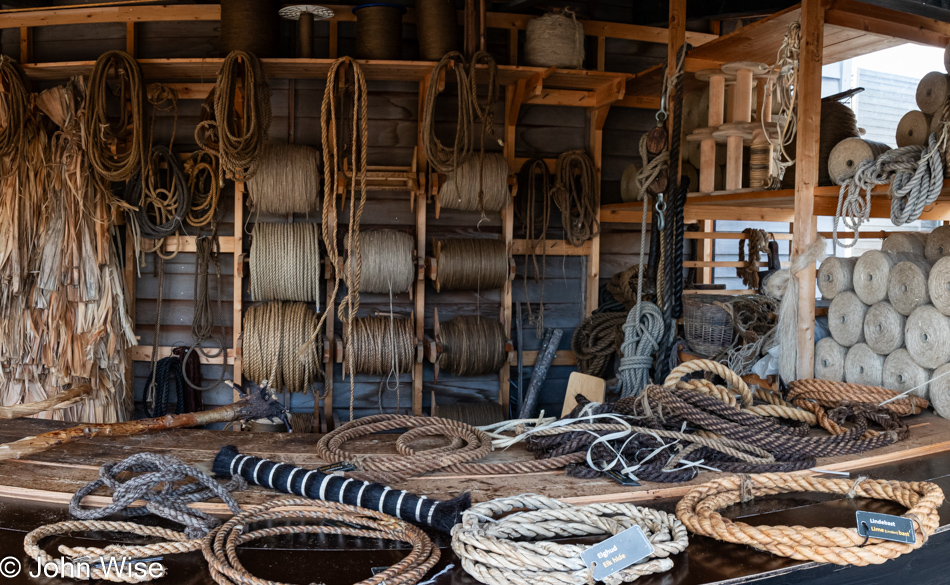
The museum wasn’t open yet when we arrived, but adjacent to its small restaurant, we ran into half a dozen workers, marine conservators to be precise, who were working on cleaning and protecting pieces of ancient ships that had been brought up from the sea and were being prepared to be shipped off to other museums. On the open grounds are a number of workshop areas, such as this one focused on rope making, while others deal with woodworking and other aspects of shipbuilding.
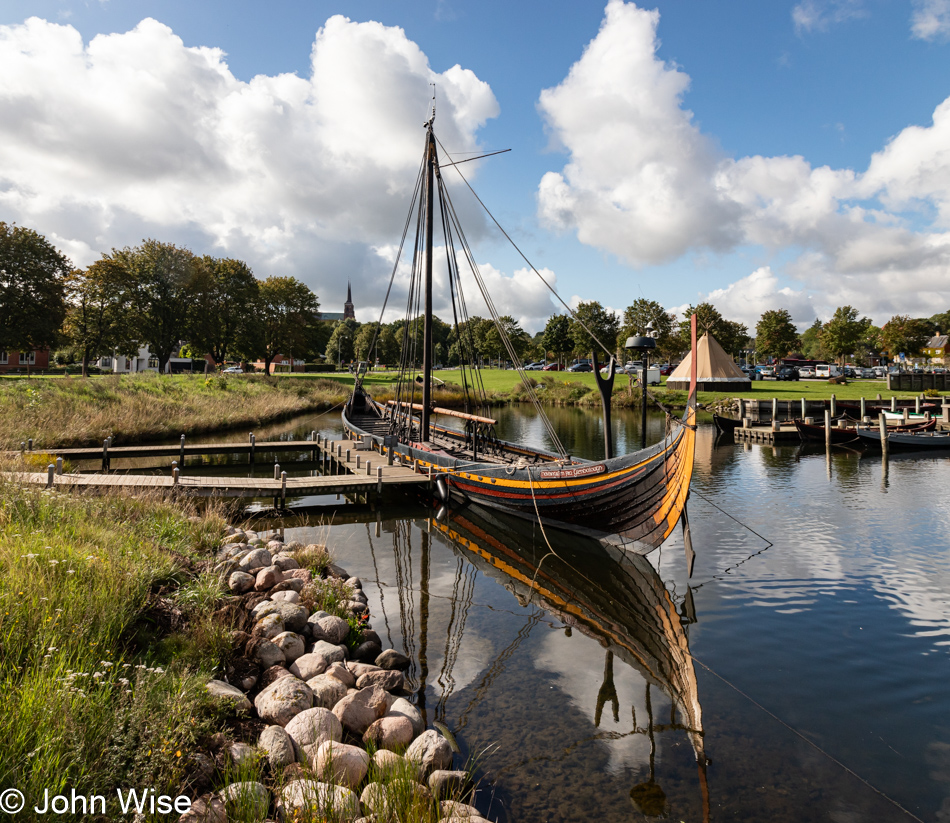
This is why we are here; we are going out on the high seas for some sailing aboard a replica Viking ship. Now, you might better understand my earlier description of plundering and mayhem upon reaching this coastal town.
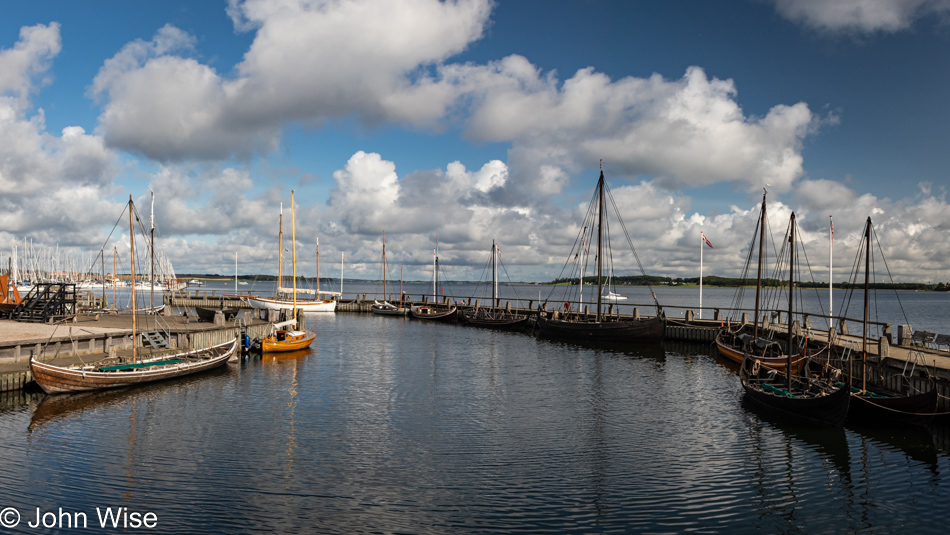
With time to spare and our tour including entry into the museum, we headed over to get an early look at what’s featured inside. On the left side of this photo, you can see the type of boat we’d be boarding in due time.
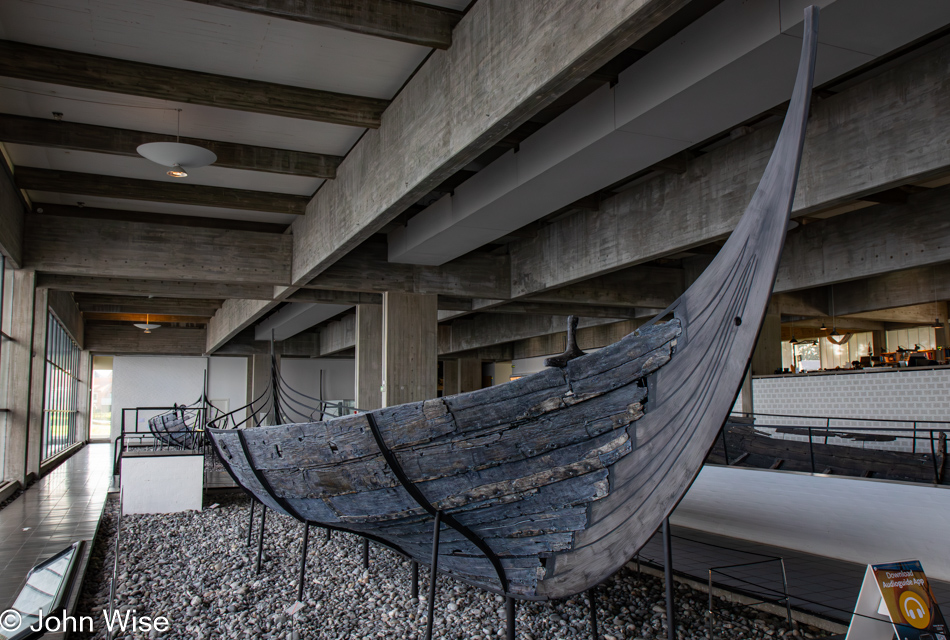
Wow, even if they are fragments, I’m thoroughly impressed with what we are seeing of original Viking ships. Back in 1962, five ships were salvaged from the mud about 12 miles north of Roskilde; they are now known as the Skuldelev ships based on the area where they were discovered. The ships were scuttled in order to create a hazard for others who might have been considering attacking Roskilde. This particular ship, known as Skuldelev 2, was a 30-meter-long warship built in the Dublin, Ireland, area around the year 1042. Over the course of four years, shipbuilders here in Roskilde built a replica of this ship, naming it the Sea Stallion from Glendalough (in Danish: Havhingsten). They painted it black, red, and orange, and you can see it in the photo following the rope shop above.
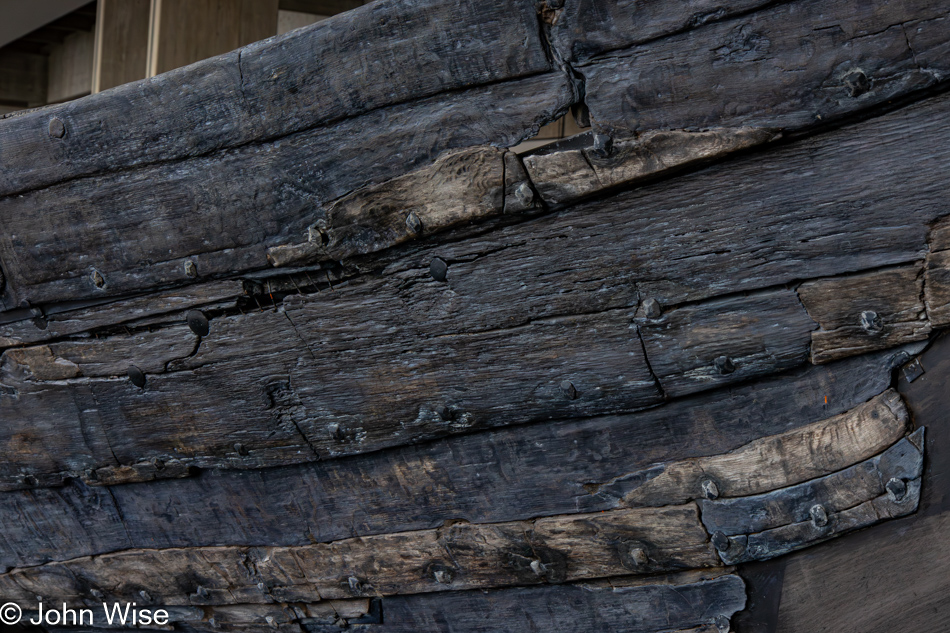
Approximately 39 generations ago, some of our ancestors helped in varying capacities to build these ships. Lucky us for being able to see these five old Viking ships today as this museum, too, will close at some point in the future because the ships need to move to a new facility (yet to be built) that doesn’t expose the old timbers to the sunlight which damages them.
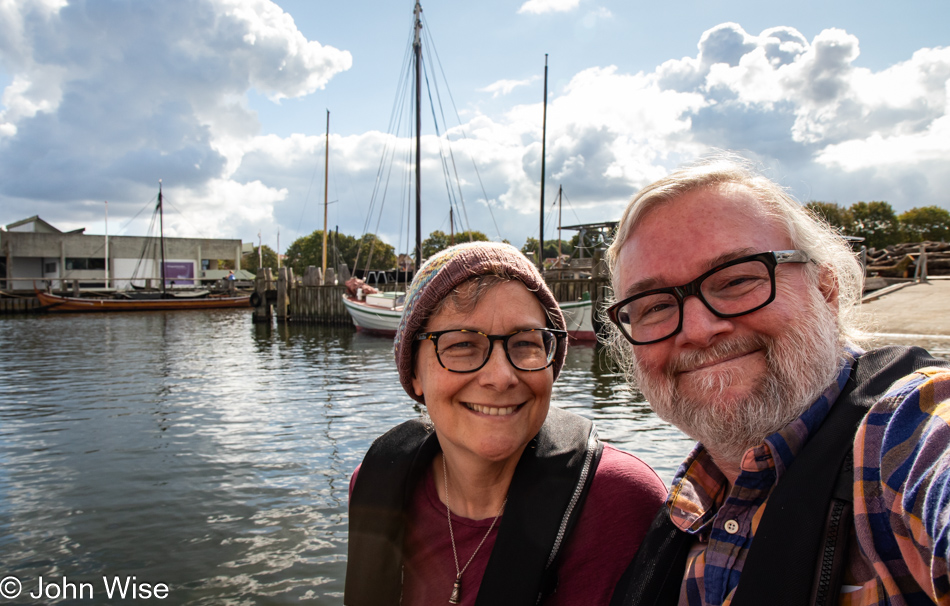
These may be the faces of pillocks, but they are certainly not angry Vikings. It was just a dozen years ago that nobody would have confused us for anything other than serious marauders as we were getting our Viking on like it was nobody’s business; just check this post here to verify the ferocity.
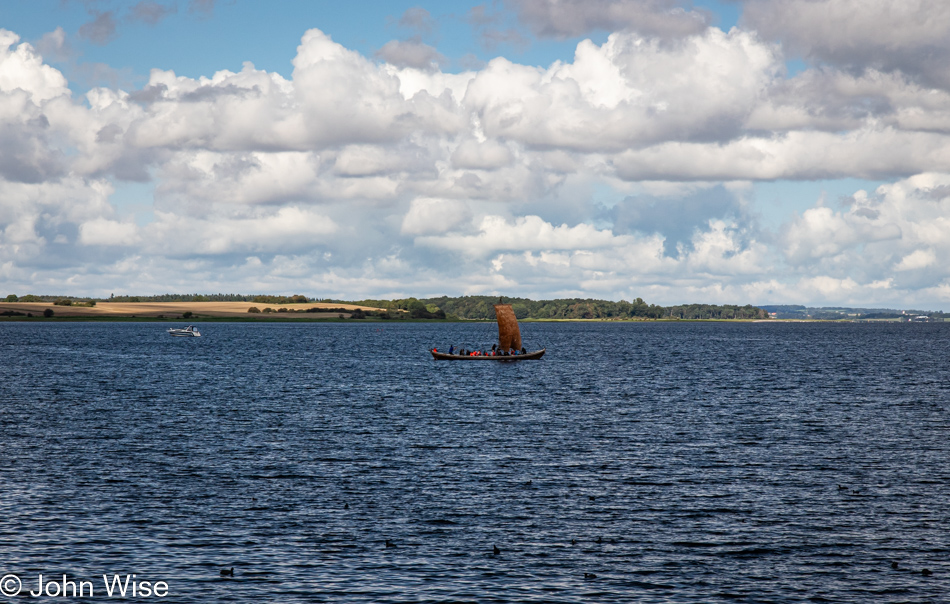
That is not us out on the fjord but some other Vikings (tourists) because getting photos while on the boat rowing or dealing with the raising and lowering of the sail in tight confines doesn’t make for very good images. The one-hour adventure included safety instructions, getting onboard, learning how to row as a group, and finally getting out on the water and back to port. Before you know it, the $89-a-person journey is already over, leaving us wishing for a longer three-hour trip onto the fjord.
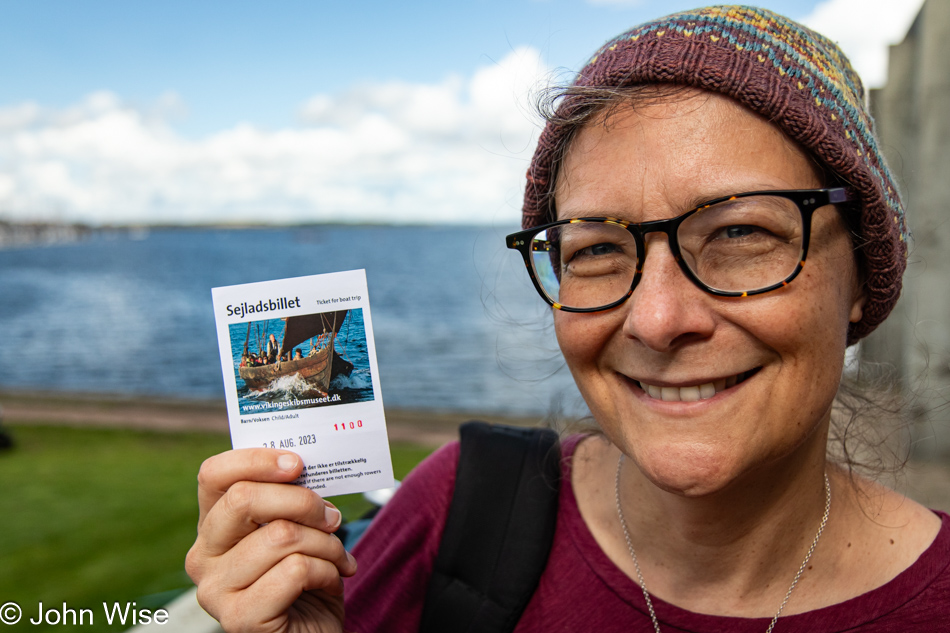
It’s only our 3rd day in Denmark, and there are so many reasons to come back.
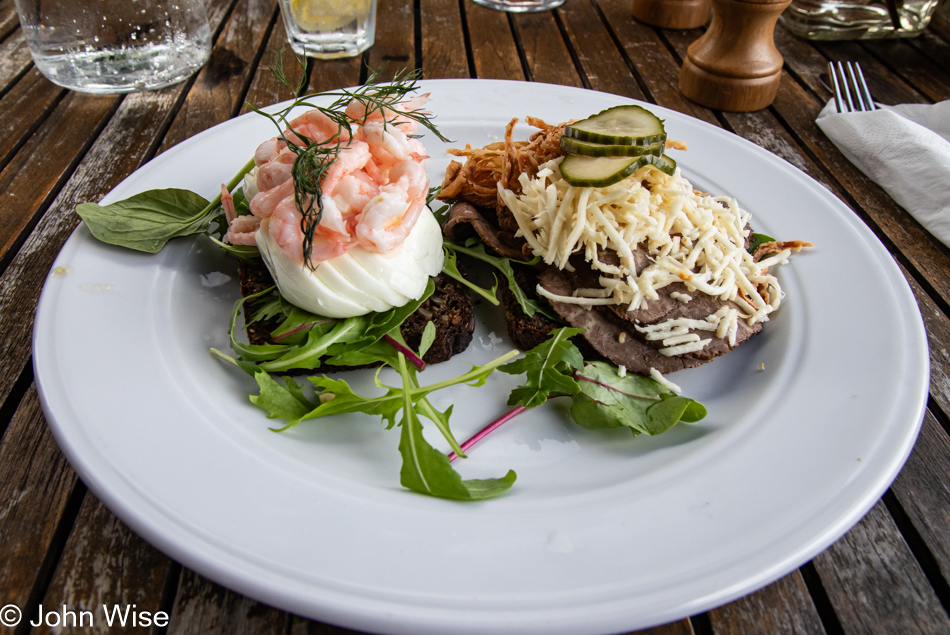
Reason Number 1: more smørrebrød. These fine specimens of open-faced yummy treats were taken at Pipers Hus up the hill between the port and the cathedral. You couldn’t ask for a better setting on a beautiful day which was exactly the day we were having in Roskilde.
Note: upon getting home and being determined to add smørrebrød to our diet, we are finding it nearly impossible to find bay shrimp in the stores. Not even Whole Foods is offering them, though we are having no problem finding raw horseradish root.
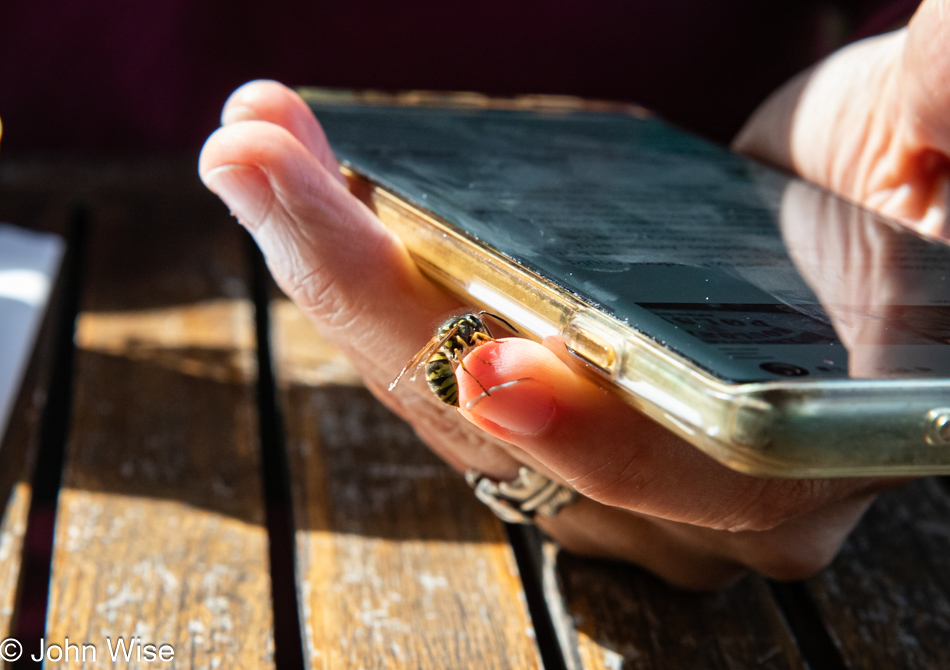
While I and others frantically gesticulate, even jumping from our seats to avoid the wasps, Caroline tries calming me by demonstrating that these flying insects are not bloodthirsty ferocious incarnations of Vikings. I think she’s only mastered this level of calm due to her practice of dealing with my antics for over 30 years. She should be thanking me for this ability to manifest zen in the face of such a deadly threat.
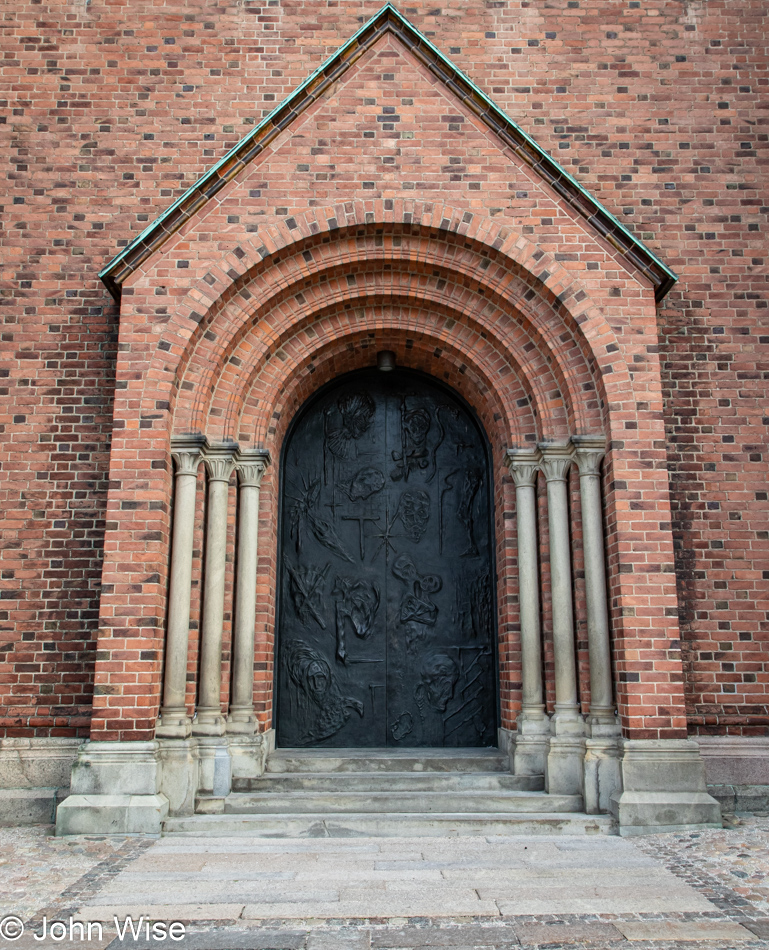
This is the King’s entry to Roskilde Cathedral that we’ll not be entering through. Not that we ever skip out on visiting cathedrals, churches, chapels, temples, mosques, or synagogues if they are available, but this particular cathedral has been getting the endorsement of everyone who has heard about our plans to come to Roskilde. We’ve been to a good number of incredible places that are dedicated to worship, so we are curious why this one has elicited such enthusiasm.
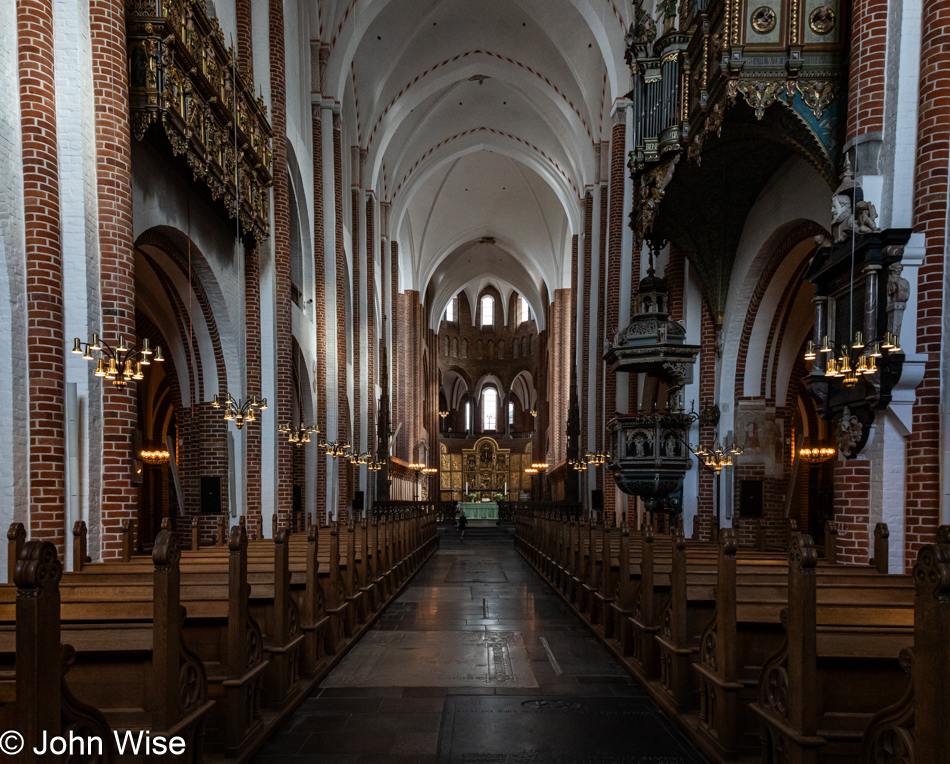
Upon walking in, nothing really stands out that screams, you’ve arrived at the place.
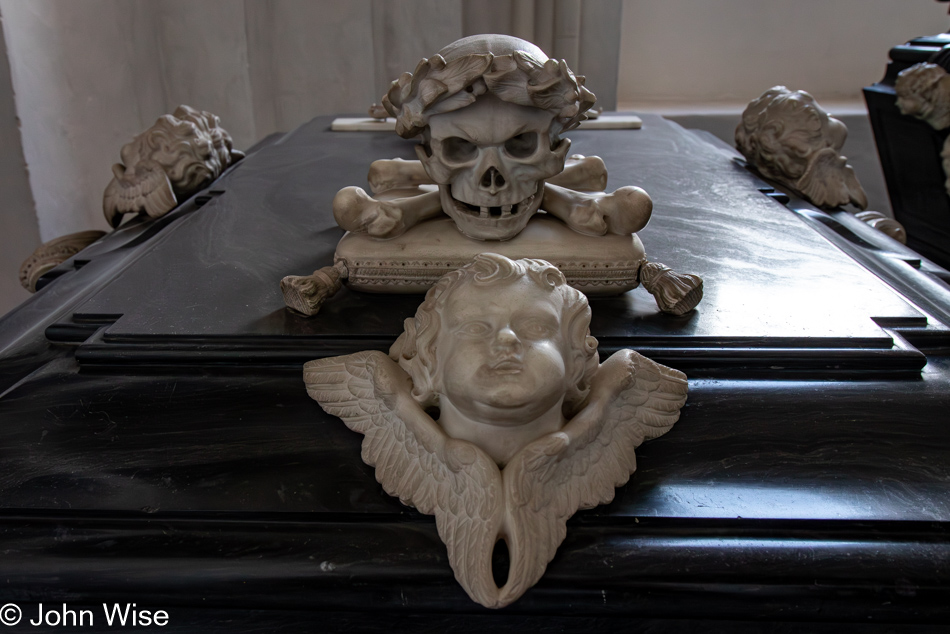
Near the entry, a custodian has opened an otherwise locked gate and is inside the crypt cleaning coffins. I interrupted him, thinking this might be my best chance to catch an unobstructed view of some ornate coffins; after a second of thought, he welcomed me in. Little did I understand what was still to be found here.
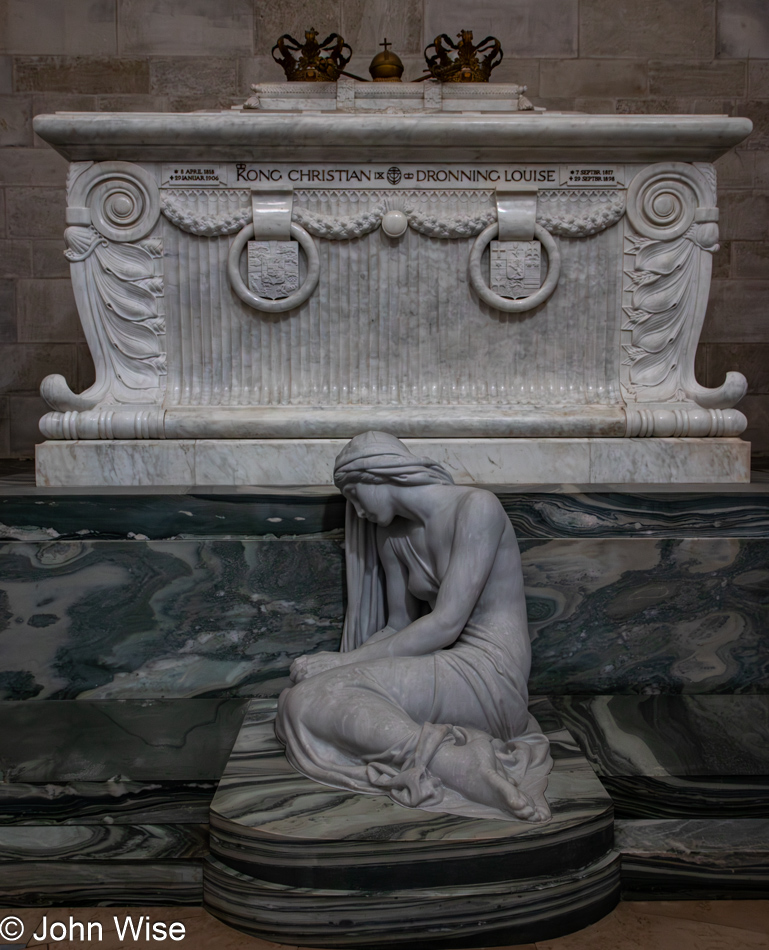
A few chapels down, King Christian IX and Queen Louise are buried in this tomb, and what we’re about to discover is that nearly every other king and queen from about the last 1000 years are buried here at the cathedral, too. Something else that is interesting about this particular burial site is that the grieving maiden looks very much like the mermaid statue in Copenhagen, and that is no coincidence. They were both created by Edvard Eriksen using his wife and an actress as models for the body and head of each statue.
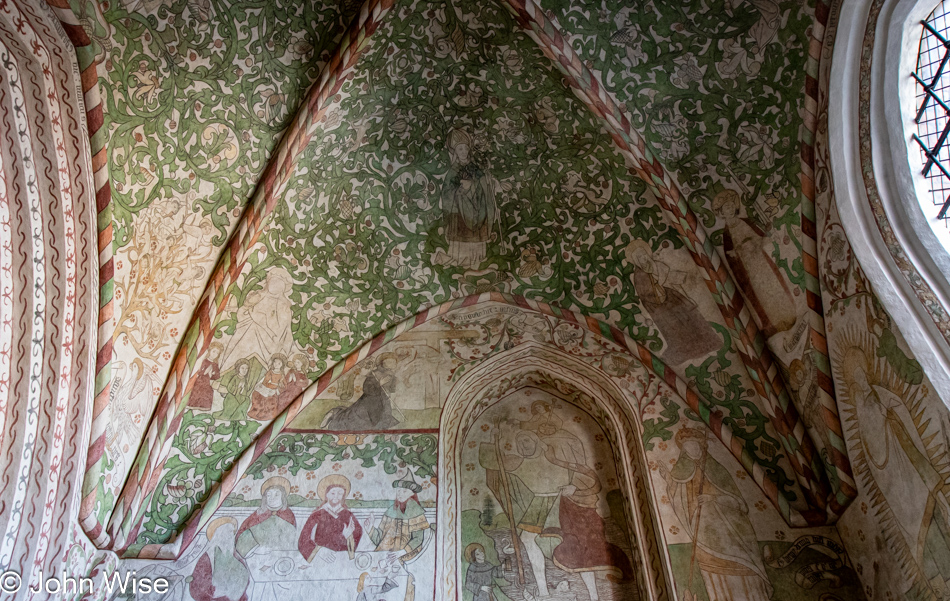
From the 11th century until 1443, Roskilde was the capital of Denmark. Maybe it was this distinction that elevated the city to be the place where royalty would be laid to rest. To date, there are between 37 and 40 tombs of Danish monarchs taking up permanent residence inside this old building, with parts that date back nearly 900 years, while the main cathedral was finished only about 460 years ago.
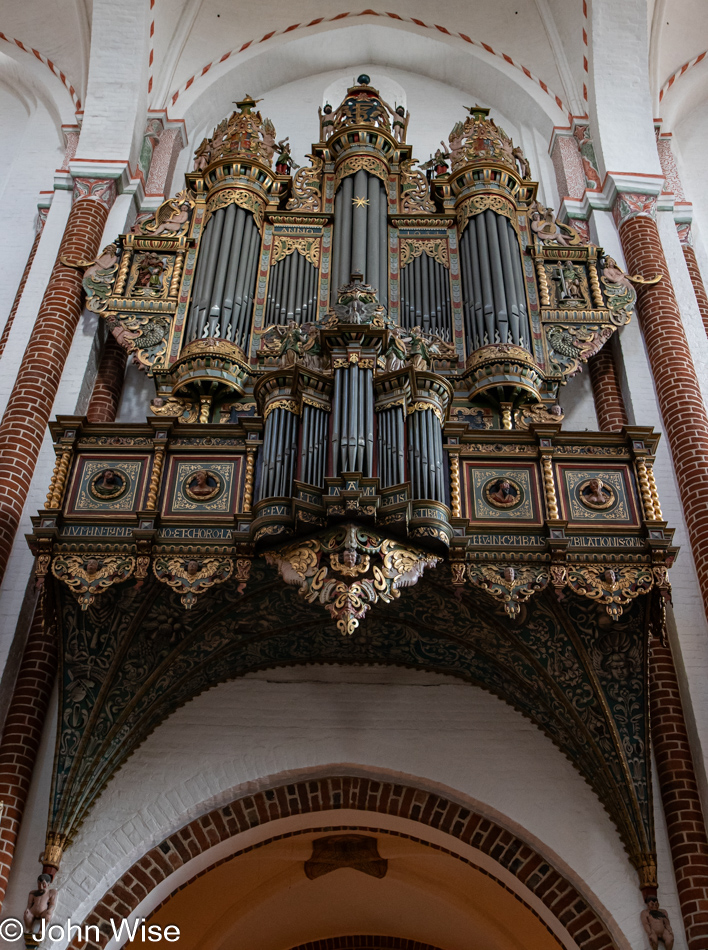
This is Denmark’s largest organ, with more than 6000 pipes and 100 stops. Forgive me, but I didn’t know what was meant by stops, and I likely am not alone, so here’s a simple explanation: stops are sets of organ pipes that the organist activates to control timbre and pitch range, enabling the performance of intricate polyphonic music unique to the organ. Known as the Raphaëlis Organ, the original organ from the Middle Ages was rebuilt in 1554 by Herman Raphaëlis, hence the name, and then in 1654, it was renovated, taking into Baroque elements that were popular at the time. The last restoration occurred between 1988 and 1991.
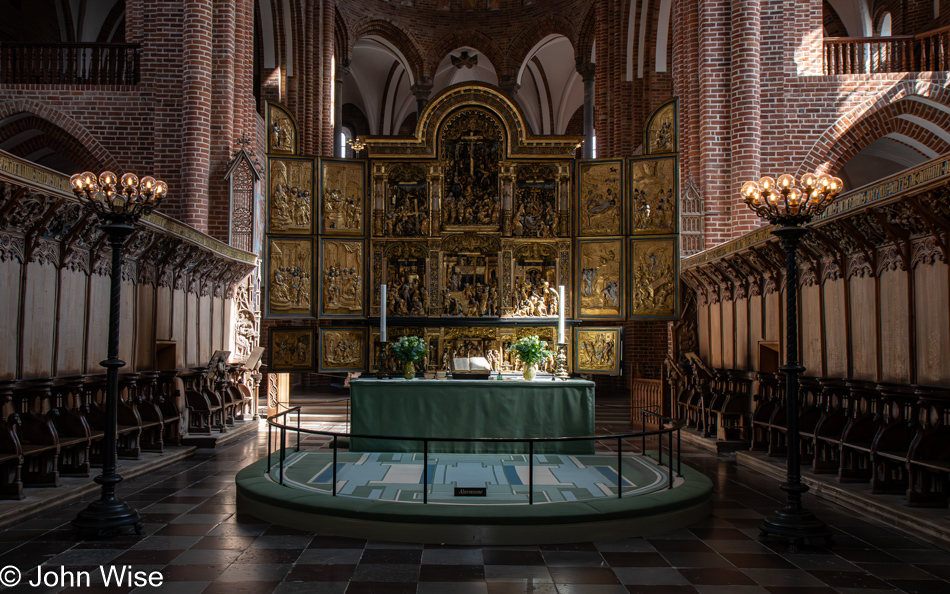
There are so many details that become increasingly difficult to see here in the cathedral as we look over into the side chapels where the many monarchs of Denmark are entombed. The Renaissance era altarpiece standing tall before the congregation was made in Antwerp around the year 1560 while the altar turns out to be relatively new from the 1850s, with two previous versions being lost to time, possibly. The choir stalls on the left and right of the chancel were carved of oak and still feature intricate details, even though they are now over 500 years old, having been crafted between 1490 and 1500.
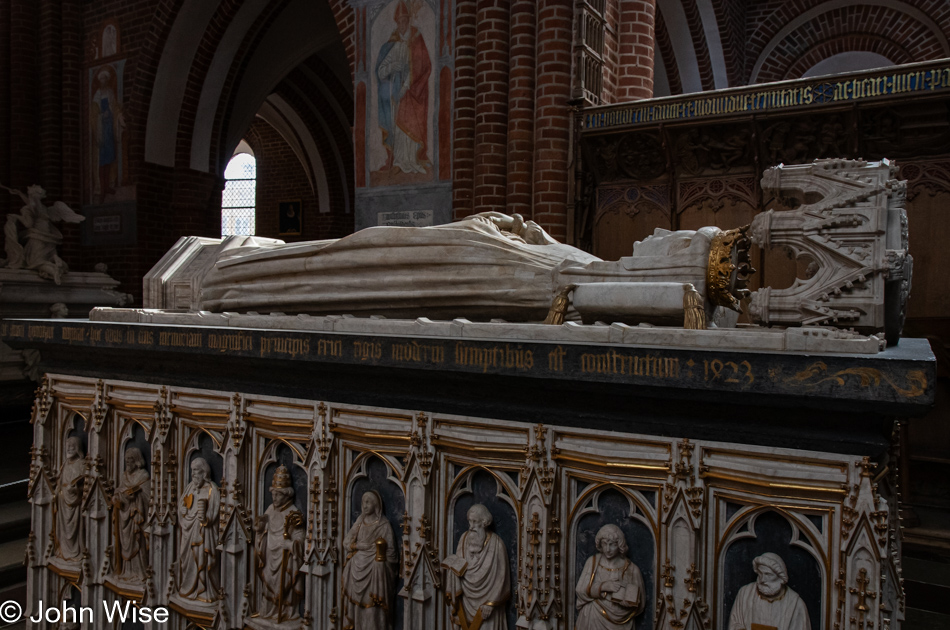
Queen Margrethe I is probably best known for bringing together the kingdoms of Denmark, Sweden, and Norway in the Kalmar Union. As her husband, King Haakon VI, died early in his reign at only 40 years old (she was 33), the queen took on the role of regent as her son Olaf was too young to rule. He, too, died young, leaving Margrethe to continue ruling until 1412, when she died at the age of 59. She was also known as the queen who pushed back on the powerful Hanseatic League.
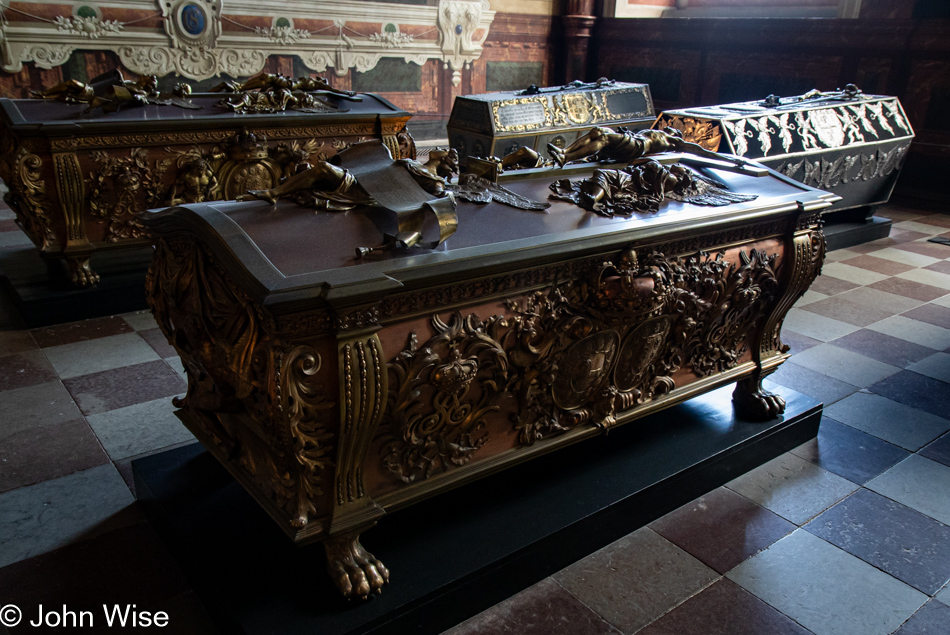
We are in Christian IV’s Chapel, which houses the sarcophagi and coffins of no less than five dignitaries, including King Christian IV himself, who rests in the casket on the right in the background. Christian IV was the king behind the building of Rosenborg Castle that we visited yesterday.
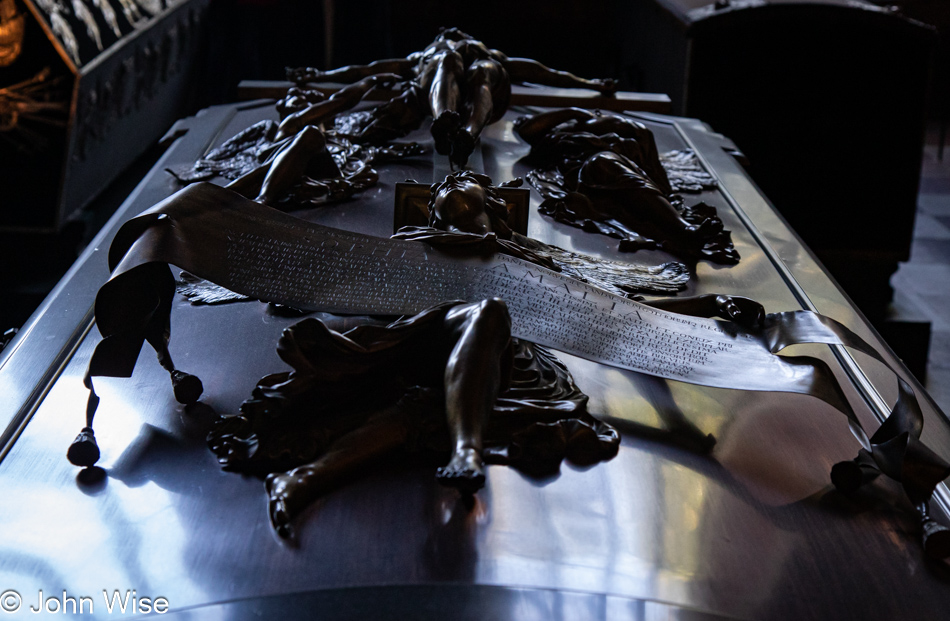
The sarcophagus of Queen Sophia Amalia, wife of King Frederick III, who’s entombed on her left, is also in the Christian IV Chapel.
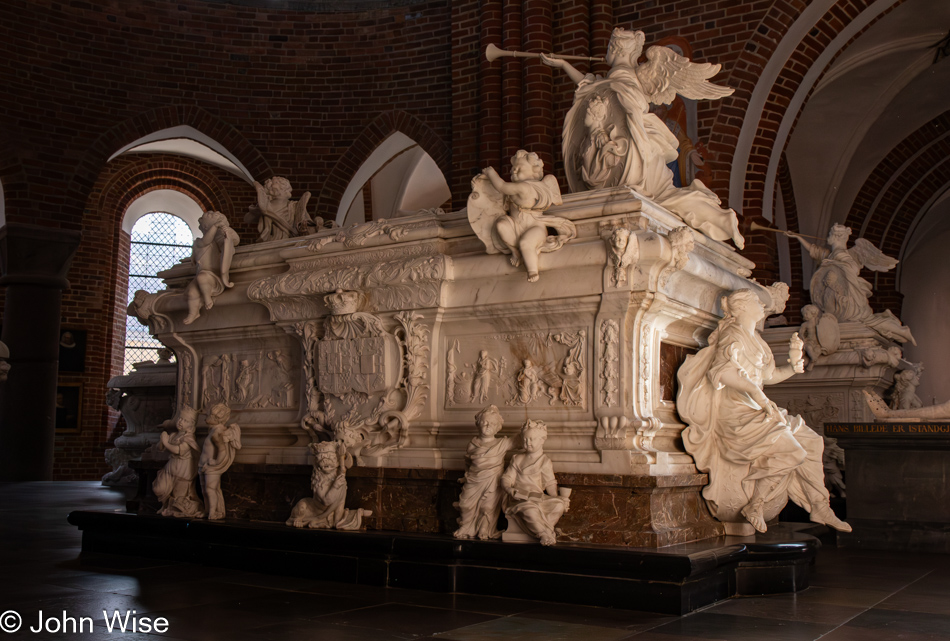
King Frederick IV and his wife, Queen Louise, are interred in these extravagant marble sarcophagi; there’s one directly behind the one in the foreground that appears as a mirror image.
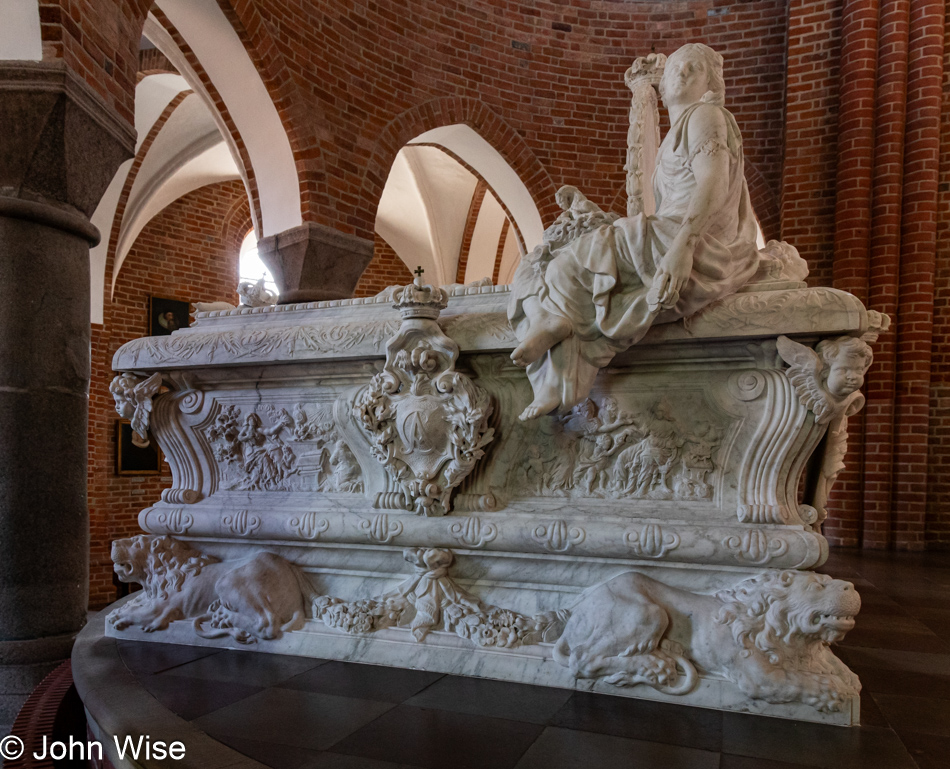
Queen Charlotte Amalie, wife of Christian V. Charlotte, came to Denmark from Kassel, Germany, north of Frankfurt, adding the Danish language to her repertoire of French, German, Italian, and likely a smattering of Latin. It was while reading about her life that I learned about “court dwarfs.” These people of short stature were traded and owned by members of the court and used as gifts to kings and queens. As a kind of sidekick, the dwarf next to a king gave the impression of the king being a giant while the dwarf also offered the appearance of being a “Kobold,” a magic and mythological goblin or hobgoblin. Charlotte’s dwarf went by the name Frøken Elsebe (Miss Elsebe), a quite magical name if you ask me.
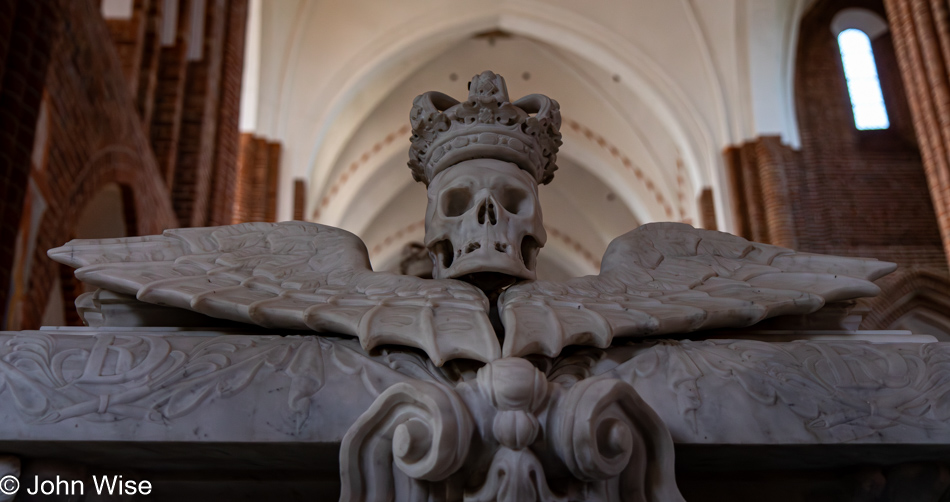
Christian V – the first absolute monarch of Denmark. There are so many interesting details on the sarcophagi and coffins that one could gather 100s of images of details while also photographing the entire tomb before also capturing it in its setting; each angle is as interesting as the first. It was Christian V who ordered the clearing of Catholic artifacts from the chancel, creating space for his and his wife’s internment.
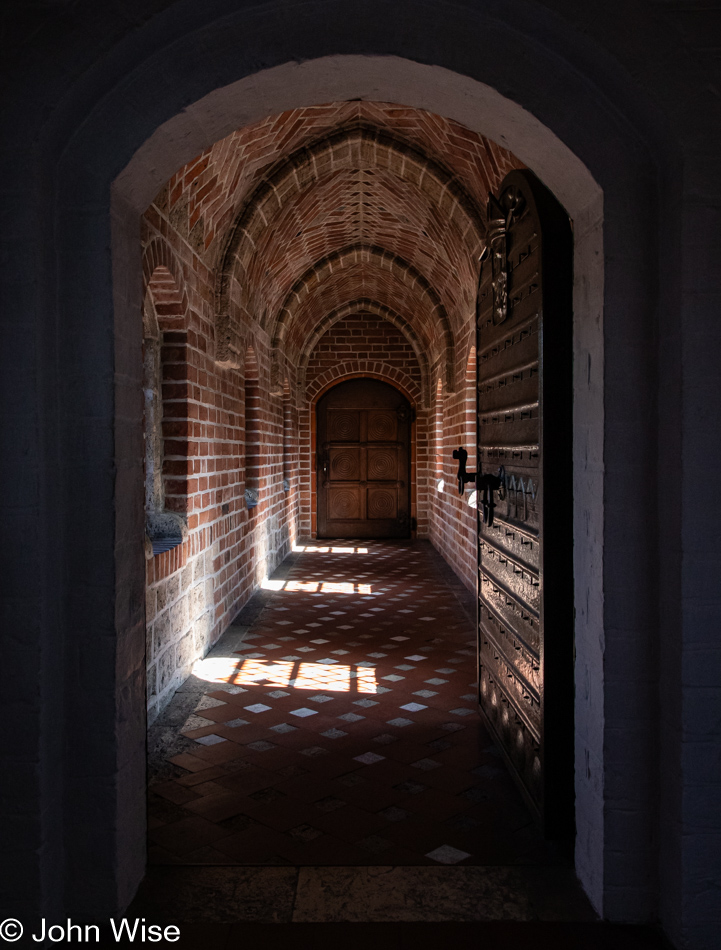
The Absalon Arch is the bridge between the cathedral and the Roskilde Palace. A very small corner of the arch can be seen in the third photo down on this post. The original crumbling Gothic arch that was here since the time of Absalon was torn down and rebuilt as an exact replica of the 12th-century arch.
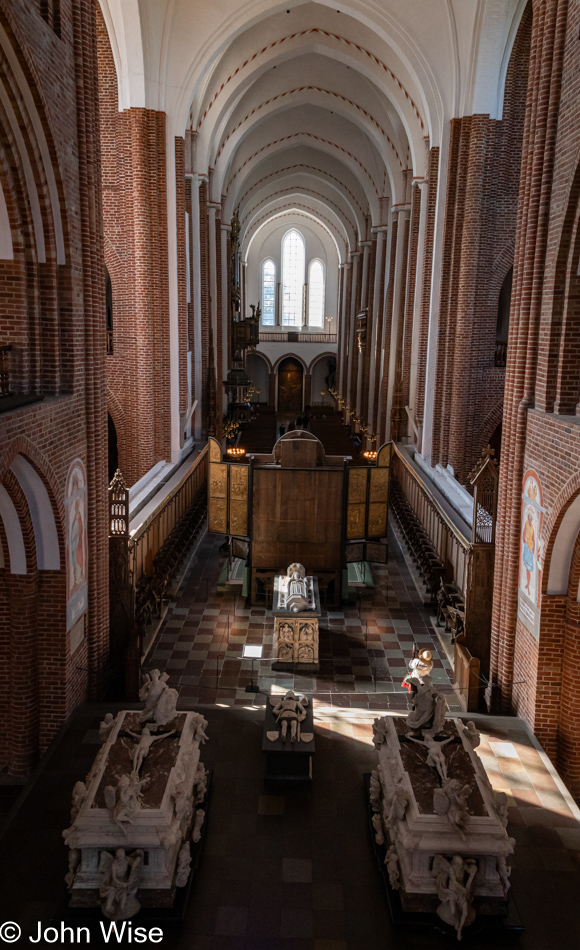
In the foreground is King Frederick IV on the left and to the right Queen Louise. The farthest sarcophagus, centered just behind the altarpiece, is the resting place of Queen Margrethe I, while her brother Christopher, Duke of Lolland, is in the small tomb at the center. It turns out that his sarcophagus is empty, and the young man is likely buried under the church as his original tomb was destroyed during the Reformation.
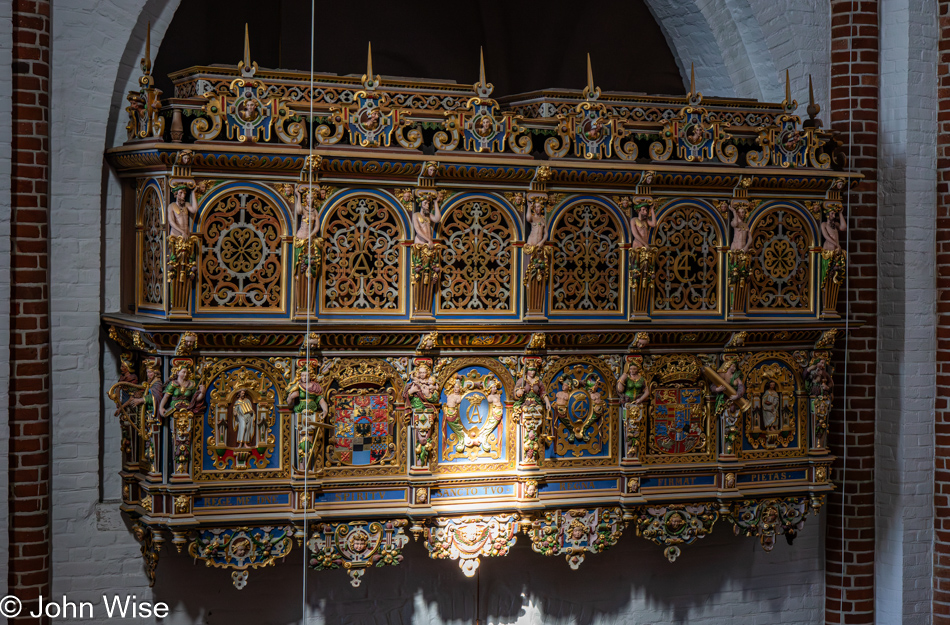
Private box of Christian IV that is no longer in use as current monarchs sit in the chancel.
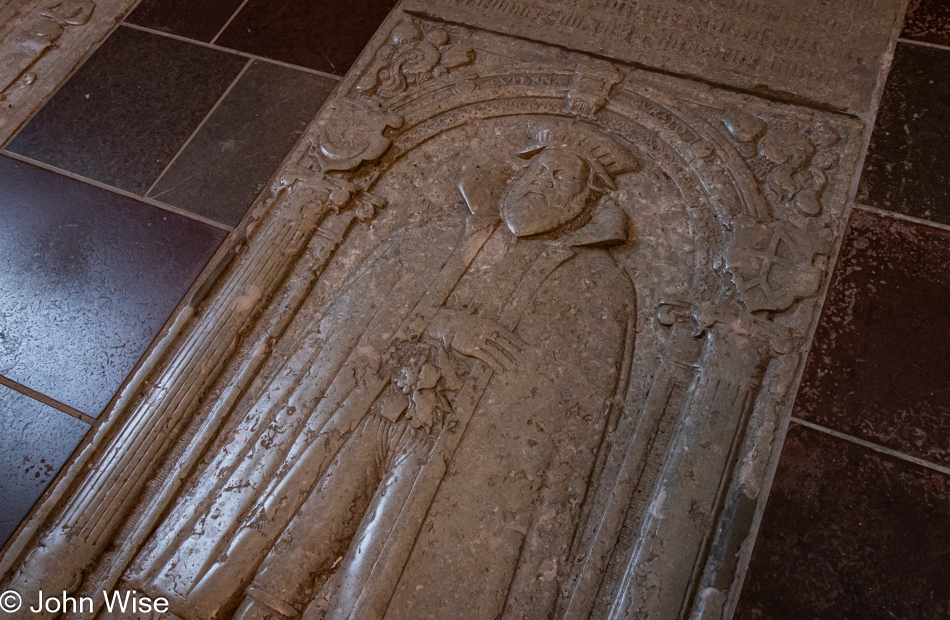
More than 1,000 nobles and citizens are buried under the floor of the church.
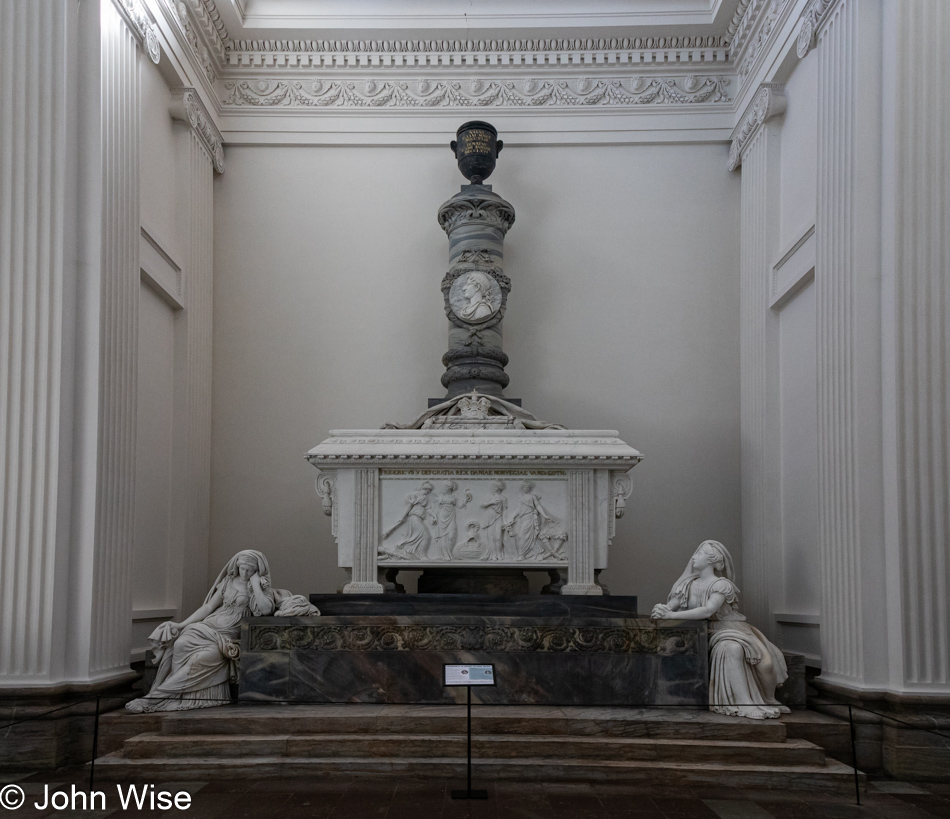
Frederick V, the drunken king, somehow still earned an impressive sarcophagus. His father, Christian VI, had considered declaring the man incapable of becoming a king, but in the end, his broken son was allowed to assume the role, though his advisors likely played a greater role.
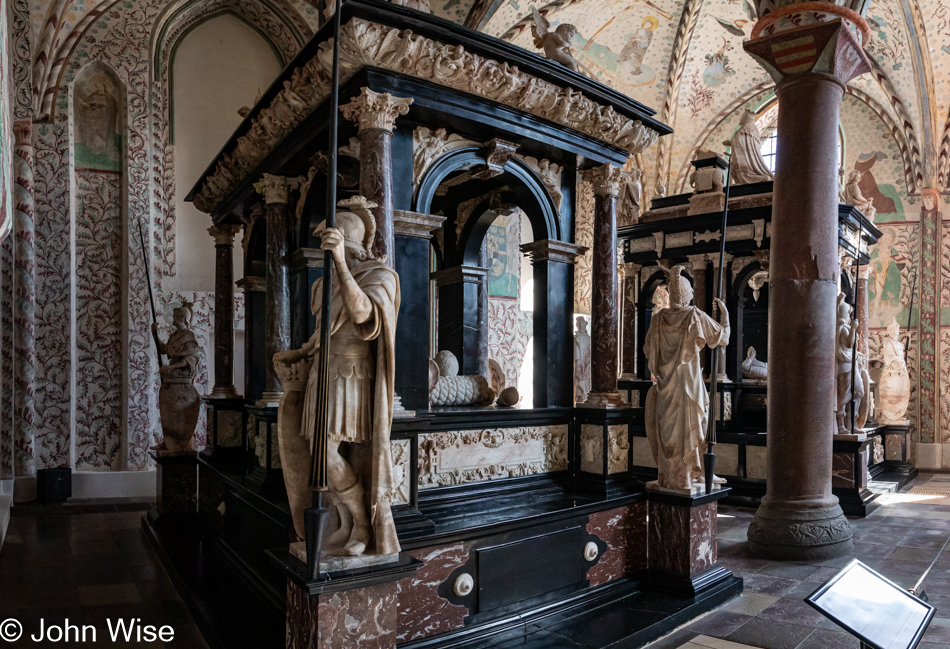
King Christian III (August 12, 1503 – January 1, 1559) was the first Protestant king. As a prince, he met with monk Martin Luther, and in 1536, he implemented the Reformation, turning his country Lutheran.
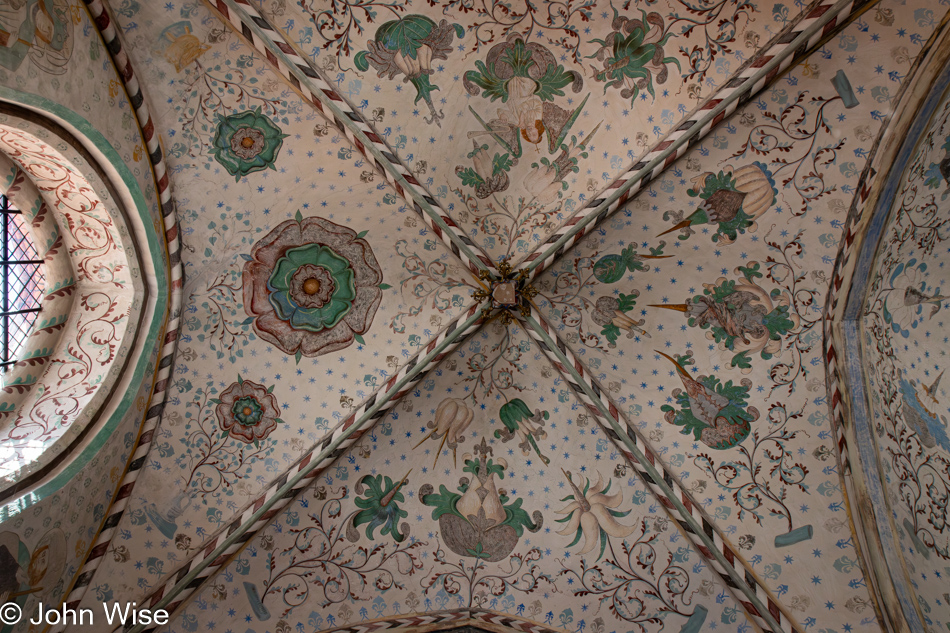
The Chapel of the Magi, also known as the Three Kings Chapel, where Christian III and Frederick II are interred, was likely built between the 1360s and 1370s and was commissioned by Christian I.
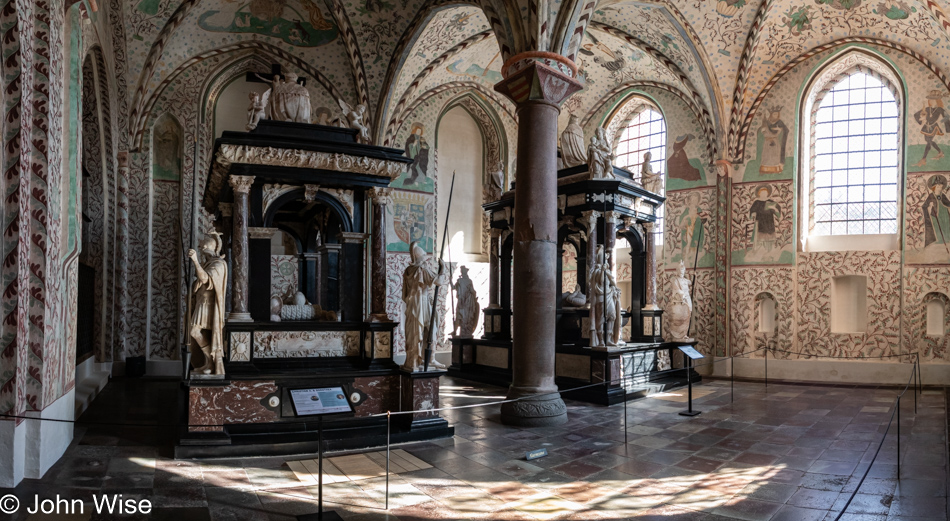
In the background to the right is King Frederick II (1 July 1534 – 4 April 1588), who was the son of Christian III. The center column is referred to as the King’s Column where more than a few Danish royals have had their heights etched into the column, including Peter the Great. While in the chapel, we failed to see any of the markings, probably because we were overwhelmed with the room and the ornate tombs.
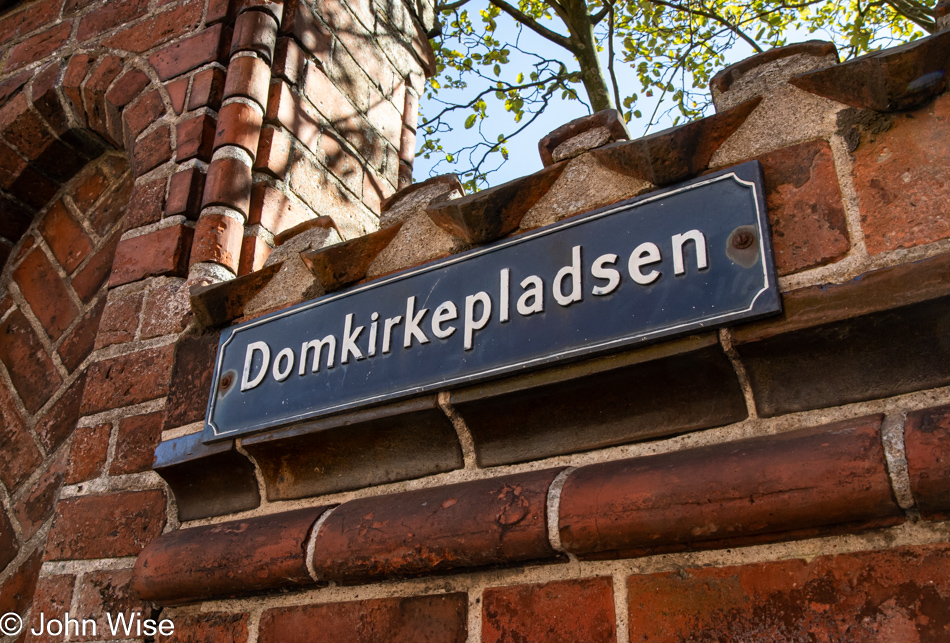
With that, we concluded our three-day immersion in the history of Denmark and turned our attention to some simple sightseeing that required the exercise of no brain cells, only the exercise of leg muscles, but more on that after our return to Copenhagen.
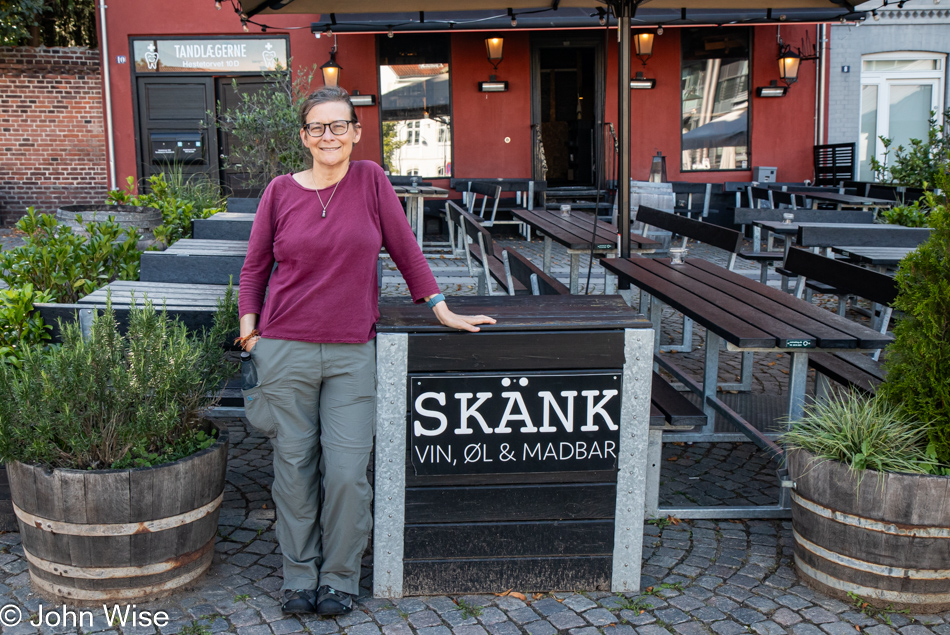
In our ongoing series of photos in poor taste where Caroline has ridden the Wild Wiener and Kissed the Cock, I present you Caroline at the Skänk bar.
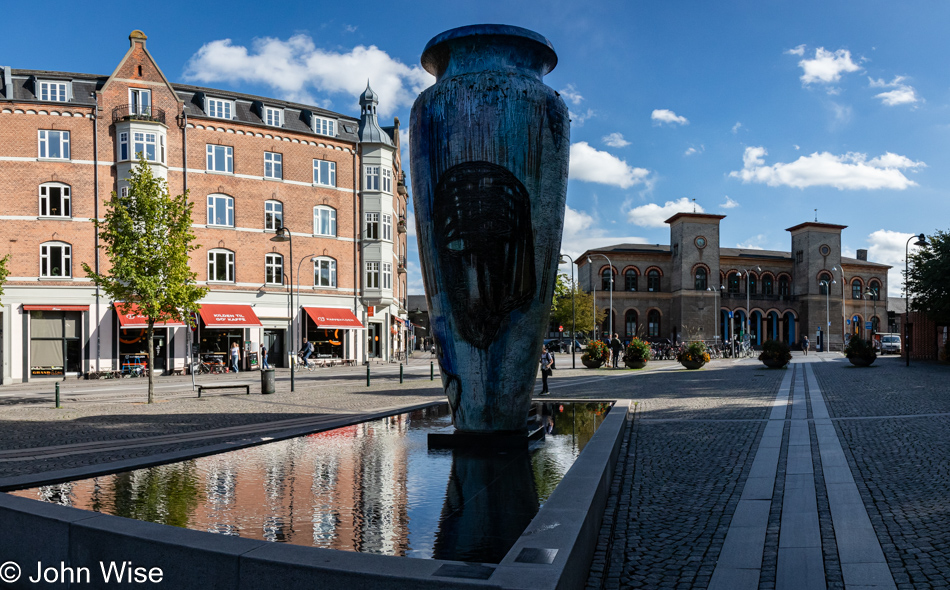
For a city that was once the capital of Denmark, Roskilde is understated and seems to have a rather small population. It turns out that they’ve suffered a number of fires that caused serious damage including one in 1968 that burned over 100 buildings, many of them historical. On our way back to the train station, we stopped along the shopping street for coffee, an ice cream neither of us enjoyed, and a bottle of rhubarb soda.
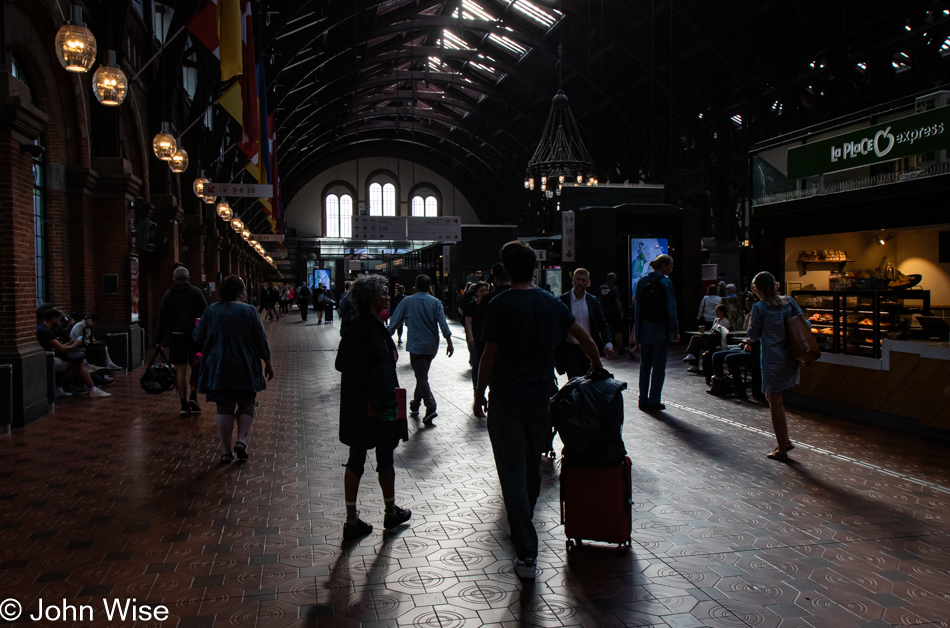
And lickety-split, we were back in Copenhagen for the next leg of our vacation of intense exploration.
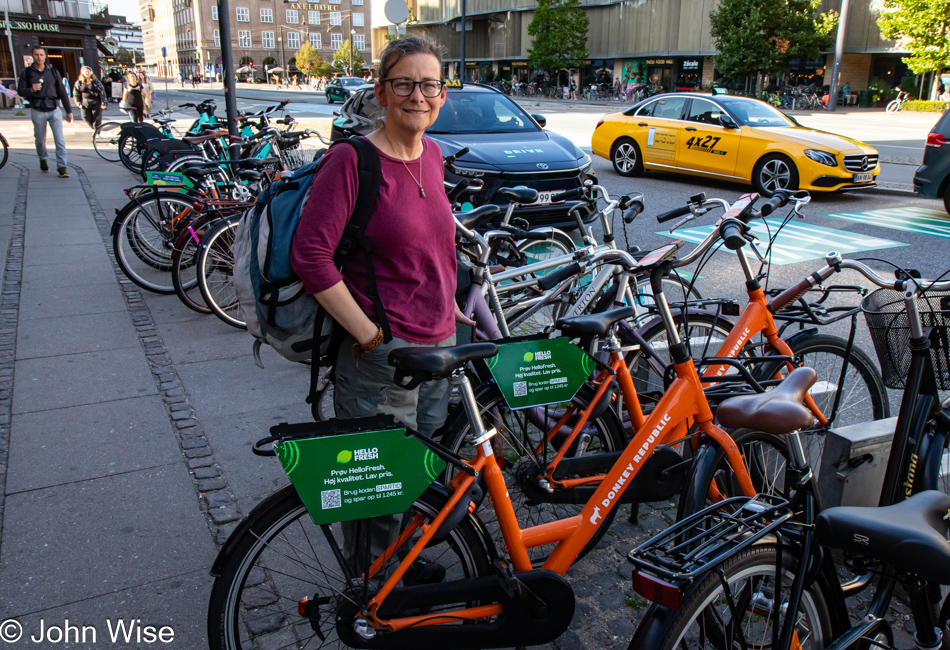
First up, we’ll need a couple of bikes courtesy of Donkey Republic. We are heading south out of town on those incredible bike paths we first enjoyed just a couple of days before.
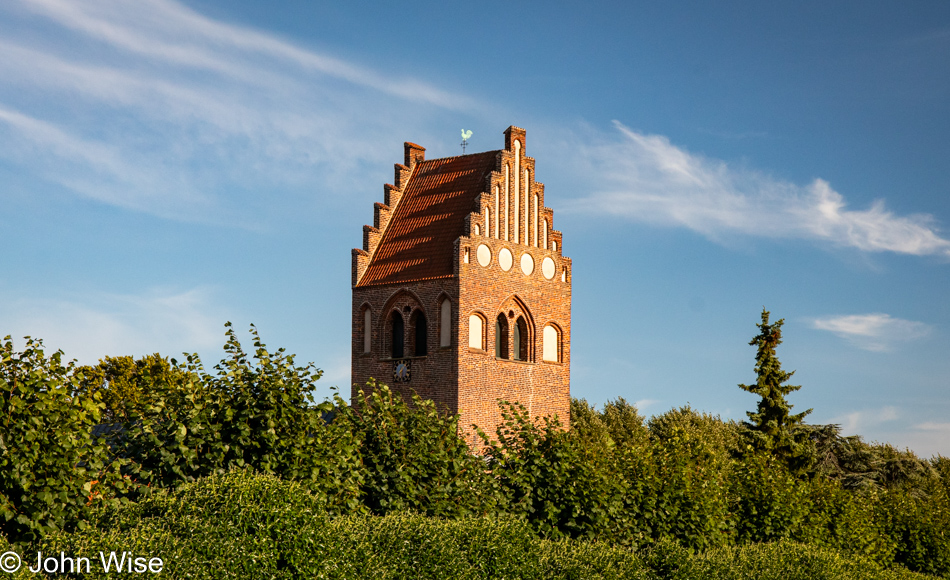
Through Tårnby, past their 12th-century church, we were pedaling to Dragør, Denmark, on a 30km (18.5 miles) roundtrip in order to gain another perspective of the country, and what a beautiful day to be able to do this.
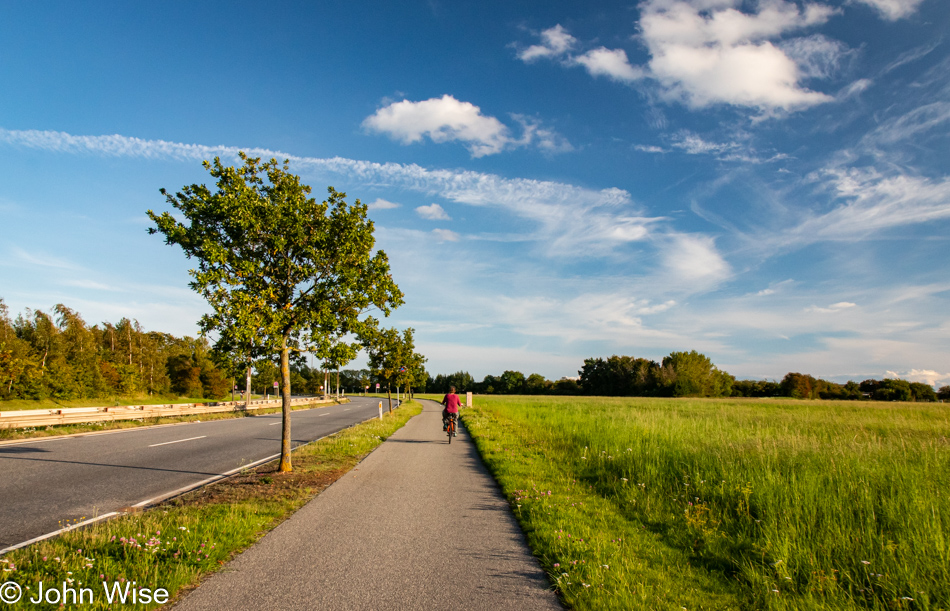
We just passed the Copenhagen airport, and we have yet to see a hint of hill or mountain anywhere on the horizon.
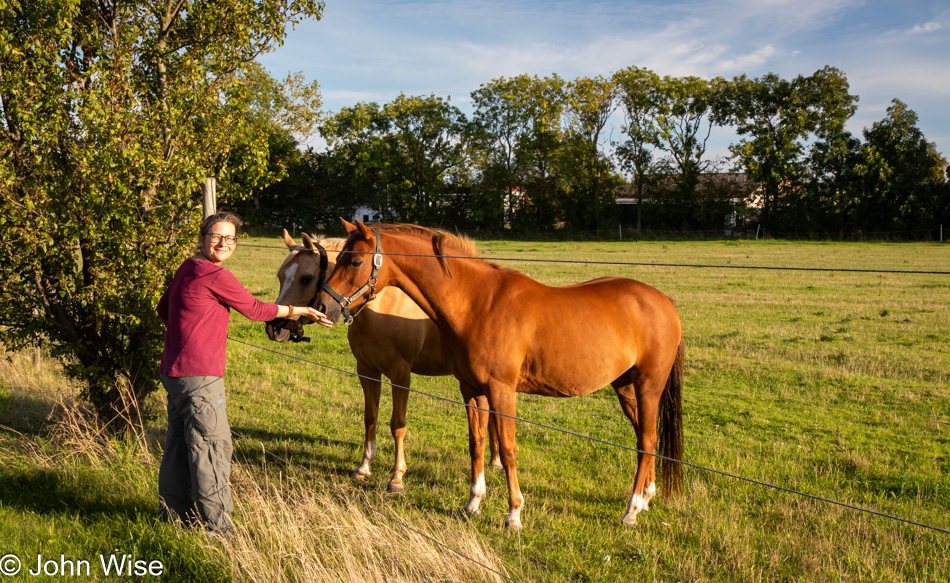
We did find some friendly horses and some apples that weren’t fully ripe yet, although that didn’t stop us from taking a couple of bites as one never knows how often one will get to snack on Danish apples on a late afternoon bike ride under blue skies. Further down the trail, we passed the Store Magleby Church from the 12th century, not knowing that there were traces of an Iron Age settlement from 200 AD nearby. Not that we might have been able to see anything, but this is part of the trouble of going off the beaten path and not having knowledge of everything beforehand.
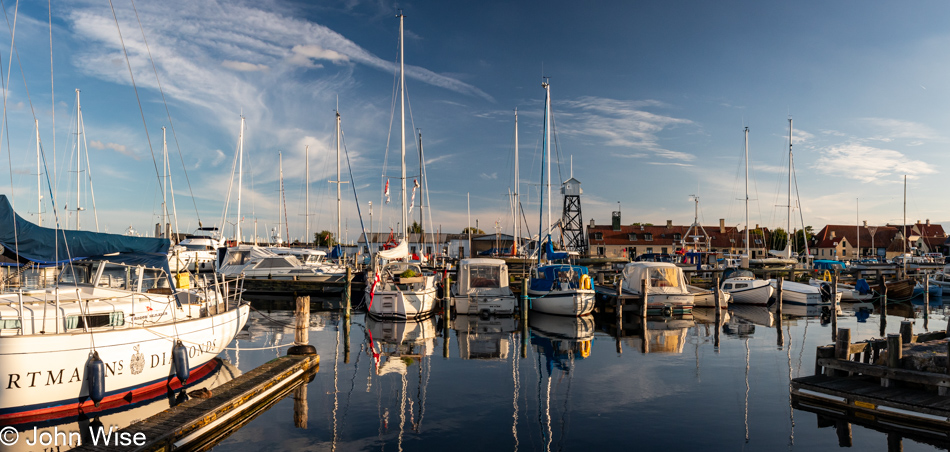
Obviously, we’ve reached the harbor in Dragør.
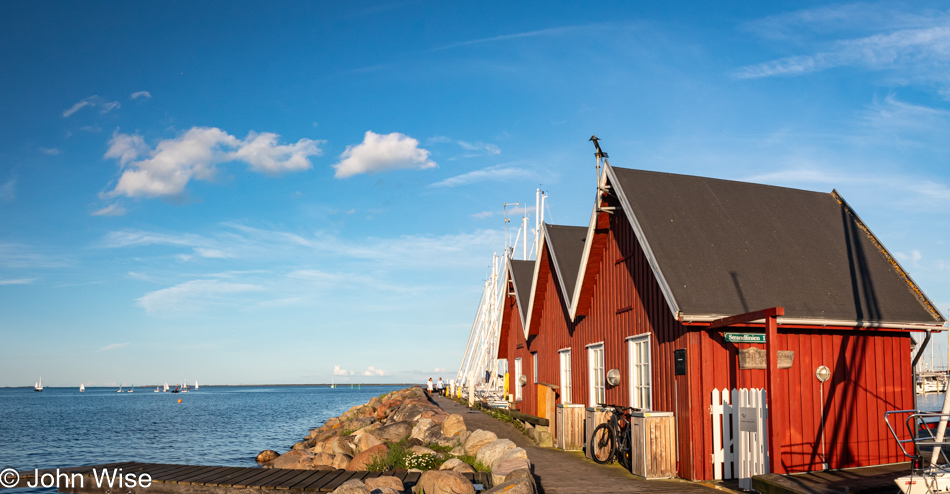
Back in the middle of the 15th century, there was an annual herring market here in town, which brought in up to 30,000 traders and fishermen, but by about 1500, it disappeared. One can only wonder if overfishing contributed to the decline or if there were political reasons that intruded into the trade.
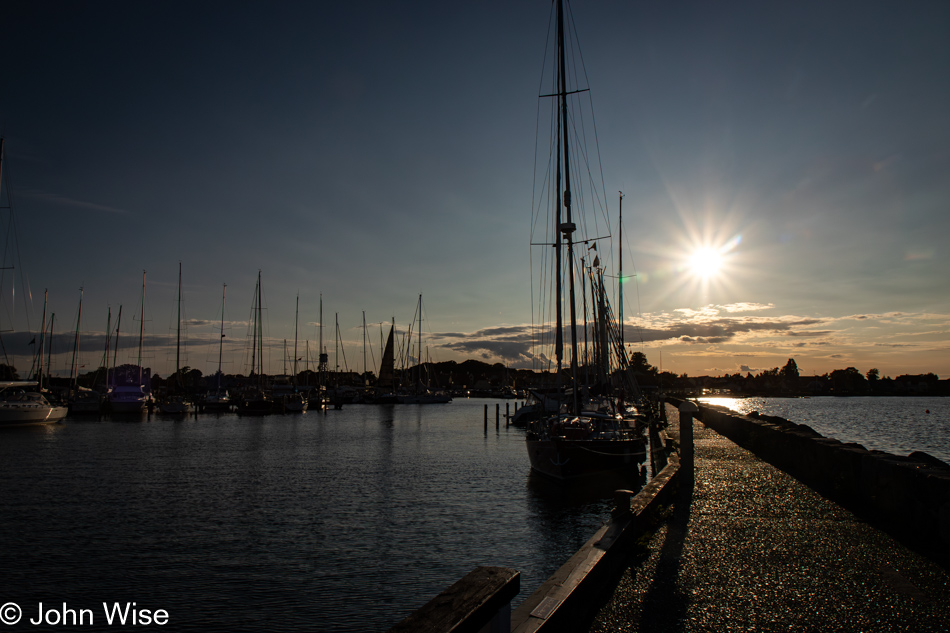
Even as the sun starts to dip low in the sky, we are not finished with our exploration of the harbor area, which will be about four hours too little for our liking. Add yet another reason to return to Denmark.
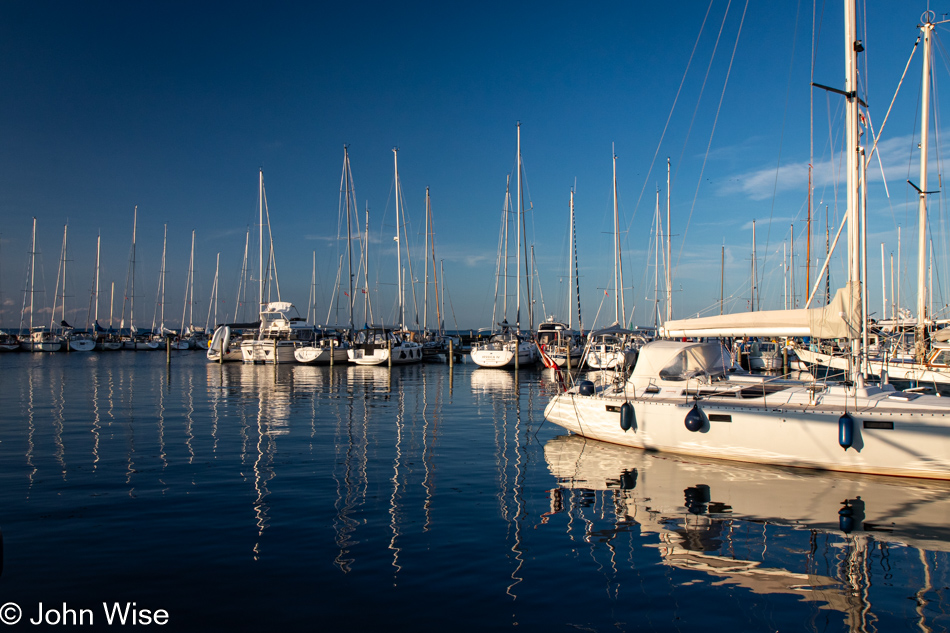
The opposite side of the harbor is as enchanting as the other.
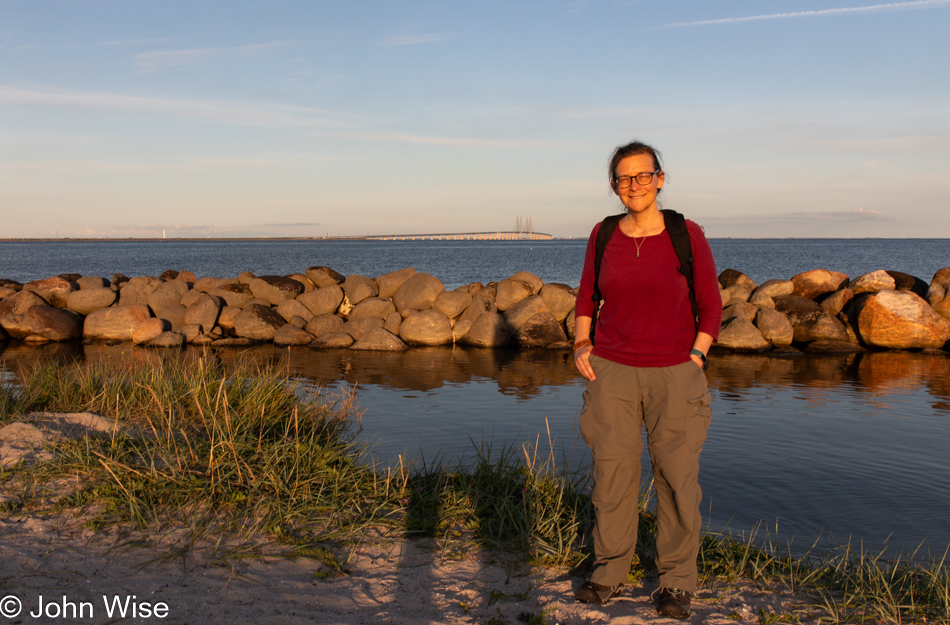
Caroline’s enthusiasm for things, places, stuff, and even me is such an endearing large part of who she is, but here at the water’s edge, it is the Øresund Bridge in the background that holds her imagination right now, that and the shells she was looking at.
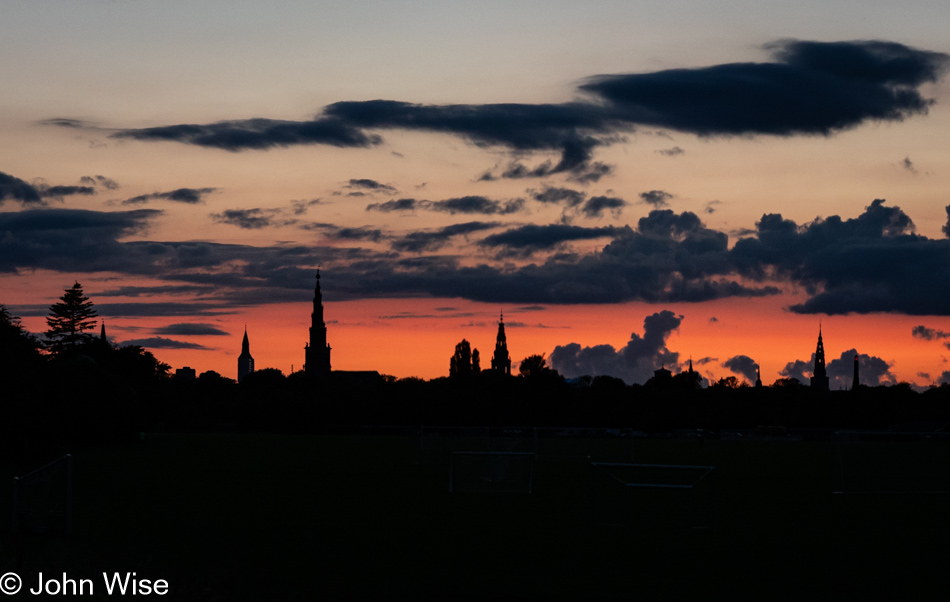
It’s getting late as we approach town to the spectacular glow of sunset.
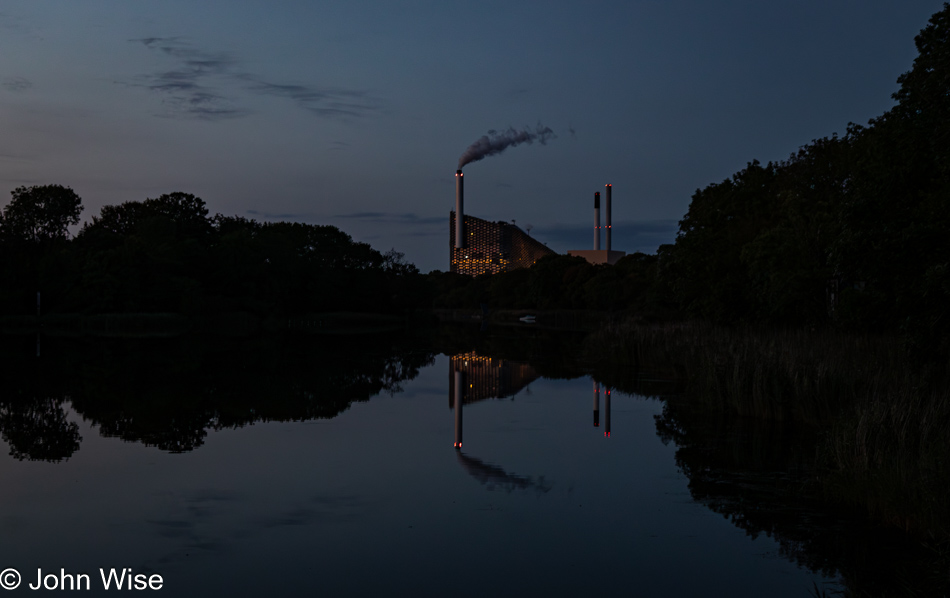
Riding over the Dyssebroen wooden pedestrian and cycling bridge, we had to stop for this look at the Amager Bakke (hill), also known as Amager Slope or Copenhill. According to Wikipedia, the artificial hill stands 85 m (279 ft) tall with a sloped roof that doubles as a year-round artificial ski slope, hiking slope, and climbing wall. The climbing wall is the world’s tallest climbing wall at 80 meters.
At this point on our ride, we are passing through the notorious Freetown Christiania, which at one time was not recommended to visit without a local as your escort.
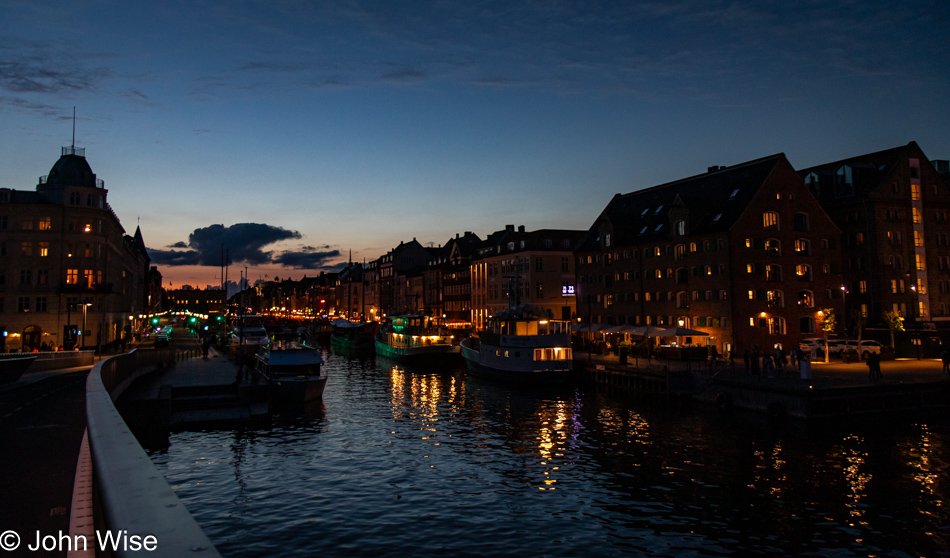
We are riding over the Inderhavnsbroen pedestrian and bicycle bridge near Nyhavn and are growing sad that our time in Copenhagen is quickly approaching its end. True, another adventure in a country neither of us has ever visited begins tomorrow, but our time in Denmark has been nothing less than perfect, as easily evidenced by these photos.
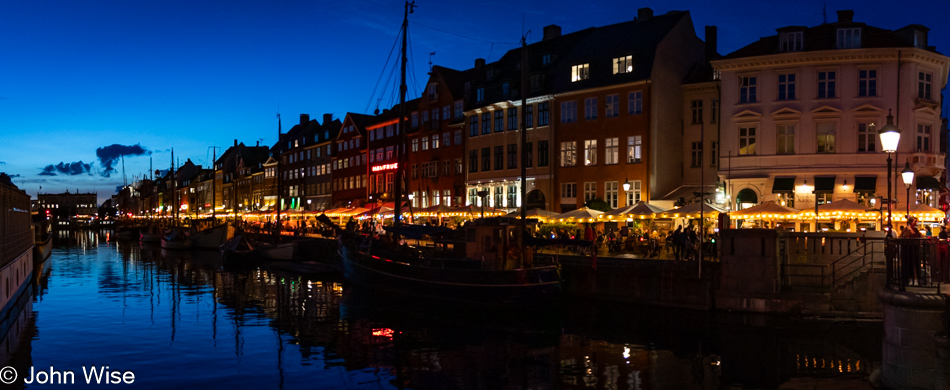
Seeing we were already in Nyhavn and a bit reluctant, having dinner in the single most touristy spot in the city felt like a mistake, and we expected that we’d likely overpay for a meal that would leave us flat. Restaurant Galionen at Nyhavn 23 was the place we chose because they had tartars on the menu. The complimentary fries with chile mayo helped improve our reluctance, and the rhubarb trifle went far in making our last dinner in Copenhagen a worthy one.
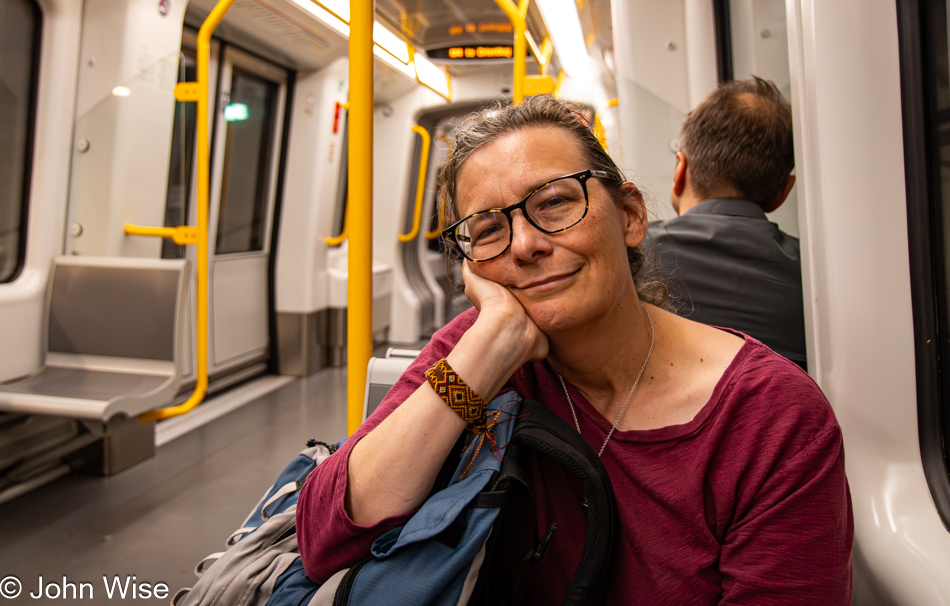
The look of satisfied tired as we board the M4 to Orientkaj one more time. Tomorrow, we land in Sweden.
